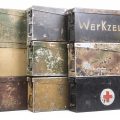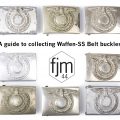Fallschirmjäger Regiment 6 Camouflage

As a devoted militaria collector and connoisseur, camouflaged items have always held a special place in my heart. Among the myriad of aesthetic camouflage patterns that exist, one of my absolute favorites is the distinguished pattern utilized by the 6. Fallschirmjäger Regiment under the brilliant leadership of Oberstleutnant Friedrich August Freiherr von der Heydte. Having resided in Bergen op Zoom for an extended period of time, it was only natural that my fascination with this unit’s history would flourish. The unique and intricate spray application of this particular camouflage pattern can be observed on a diverse array of equipment, resulting in a plethora of captivating specimens. While there are numerous camouflage patterns that can be linked to specific units or battlefields, the pattern employed by the 6. Fallschirmjäger Regiment stands out as one of the most renowned and recognizable.
Considering the amount of time, effort and travel it took to complete this article, and as is with all of my articles; I am asking for the understanding that nothing in this article in any way shape or form may be copied without absolute permission obtained from myself. I make these articles for collectors, as I am myself, a collector. I am not making money with publishing this in a book, nor am I asking money to view my 1000+ articles on this website. All I ask is for you, as a collector to enjoy and if you wish to share it; by sending a direct link to this page, in stead of posting photos. I have travelled thousands of kilometers and have spent a lot of time to write this; so it’s a small gesture to ask even if I’m in my right.
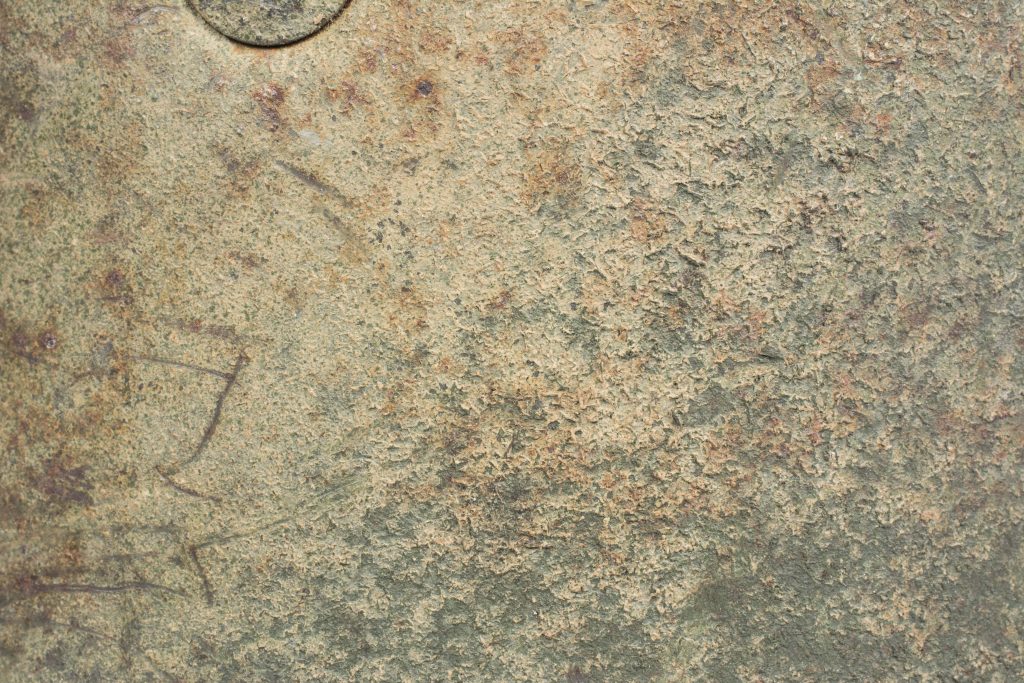
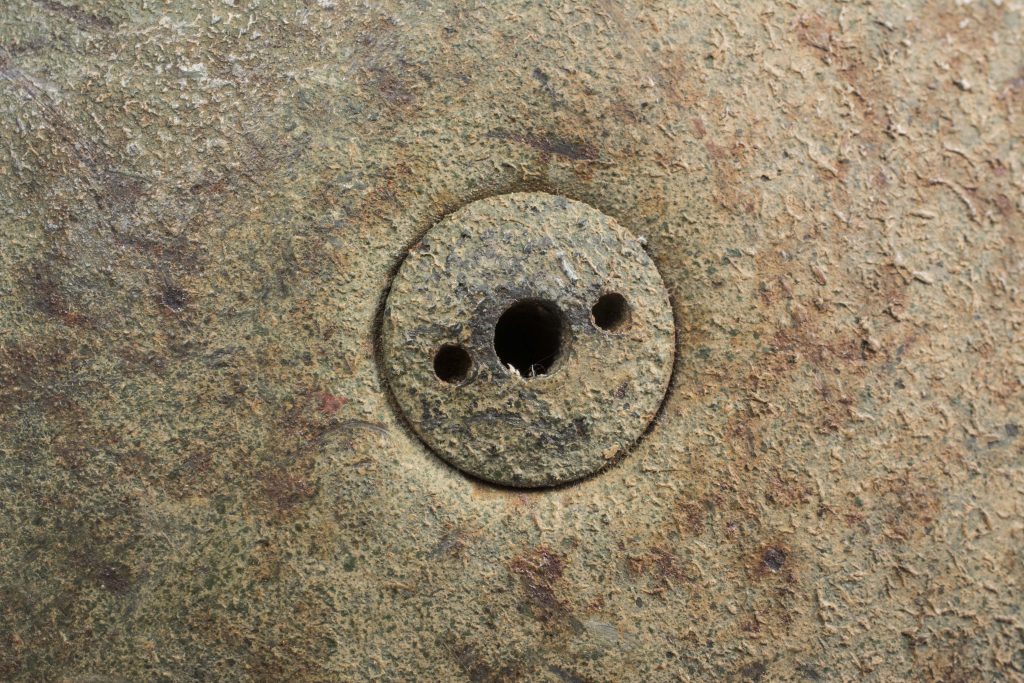
FJR6 camouflage pattern, note the woodchips mixed into the paint
The 6. Fallschirmjäger Regiment’s iconic camouflage pattern consists of a two-tone blend of tan and green paint. The base color of tan was typically applied first, and in the case of helmets, wood chips were often mixed into the paint during the process. The green paint was then loosely applied on top, utilizing a distinct set of greens that differed slightly in hue from the standard olive camouflage paint. While there are various photographs depicting covers and helmet nets used by the regiment, our focus for this article will remain on the paint finishes themselves.
Some debate exists as to whether all camouflaged helmets from FJR6 were made with wood chips in the paint. However, upon studying camouflaged MG cases, we can see a wide range of greens and swirl patterns that were also used on helmets. It is generally accepted that a “textbook” FJR6 helmet should be two-tone with wood chips in the paint. Nonetheless, there are several examples that exhibit little to no wood chips, with some helmets lacking any wood chips altogether. Nevertheless, these helmets can still be attributed to this unit due to the distinctive colors used.
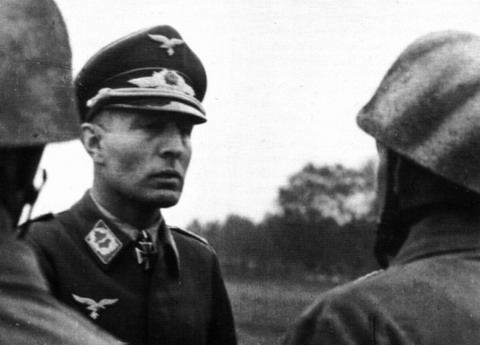
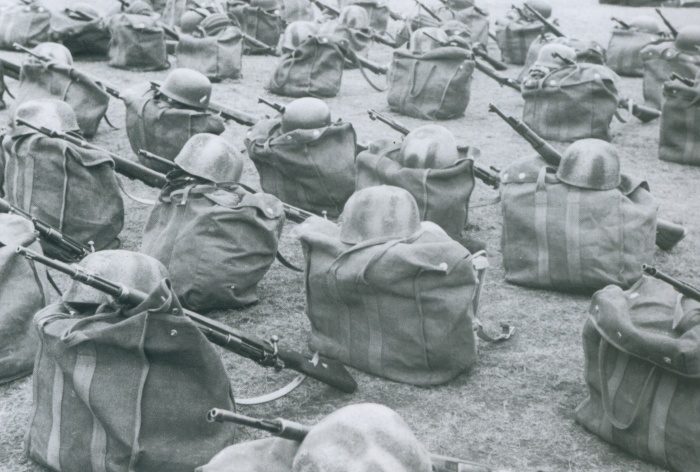
Left; Von der Heydte inspecting his troops, right; helmets and parachutes in Cologne-Wahn
When examining ammunition cases discovered within the FJR6 area of operations, we observe a range of greens that are not typically found on other camouflage helmets or equipment. The shades are often dark or light, but distinctly reminiscent of grass, rather than the typical olive green. This is likely due to the fact that the helmets and equipment were primarily camouflaged in Cologne Wahn, which, at the time, was a Luftwaffe airbase. As such, different paints were likely utilized than those seen in more common “Normandy” camouflage patterns. The paint used for aircraft was likely of a different density and color since it was intended to camouflage in a different manner and under different circumstances.
Another noteworthy observation is that not all FJR6 helmets are identical. The greens employed on various helmets differ, but considering the sheer number of helmets and equipment that required camouflage in a brief timeframe, it is logical that variations would exist due to time and logistical constraints. While this does not conclusively prove that all “two-tone” camouflage helmets can be attributed to FJR6, it does demonstrate that these colors were employed by this particular unit, and other units have little to no evidence of utilizing such color schemes.
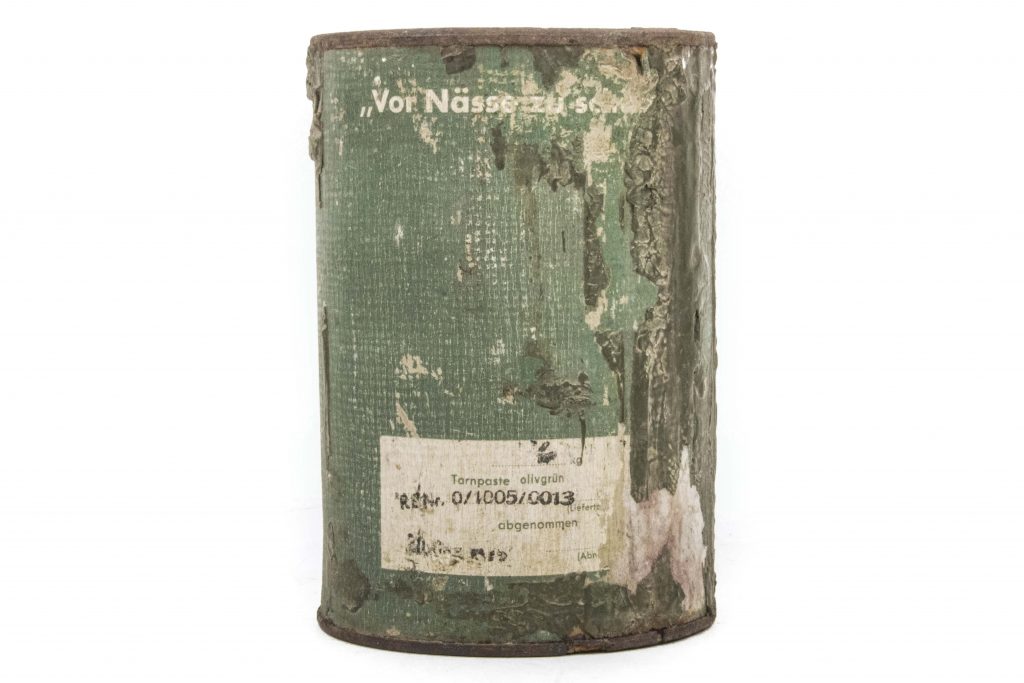

According to photographic evidence, the camouflage pattern was applied between January and April 1944. The assembly of the unit at the birthday of Emil Preikschat on April 26, 1944, shows all the men wearing camouflaged helmets. When Von der Heydte declared the unit ready for action on April 1, 1944, it was comprised of roughly 3500 to 4500 officers and men. It stands to reason that a comparable number of camouflaged helmets would have been made during this period.
Further photographic evidence suggests that the majority of FJR6 used camouflaged helmets during the Normandy battles, with an estimated 90% of the unit sporting this distinctive pattern. This level of consistency is impressive, particularly given the logistical challenges involved in producing such a large number of helmets in a short period of time. While there may be some variations in the shades of green used, the overall two-tone color scheme remains a defining feature of the FJR6’s unique and visually striking camouflage pattern.
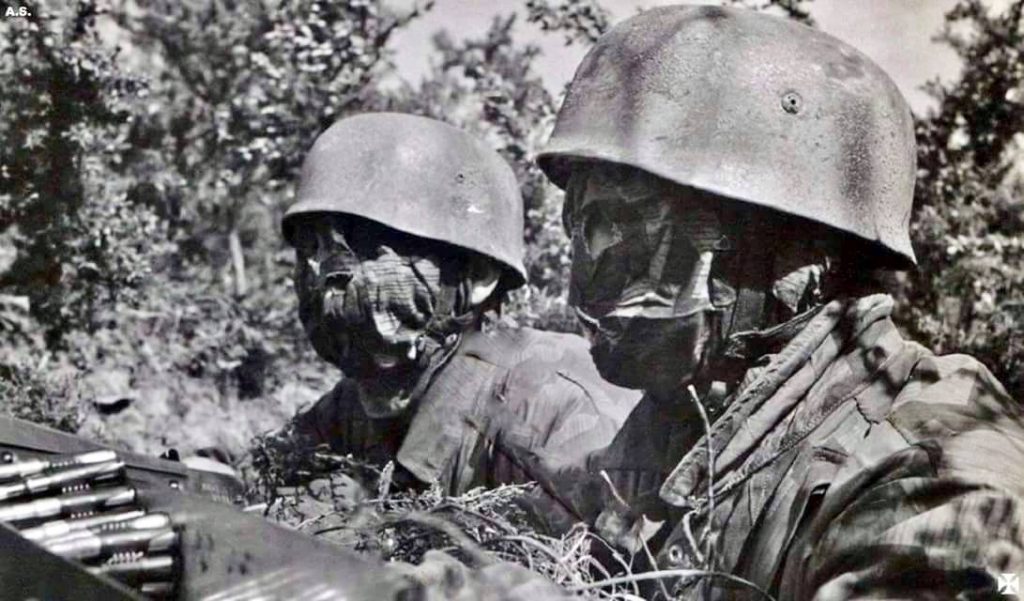
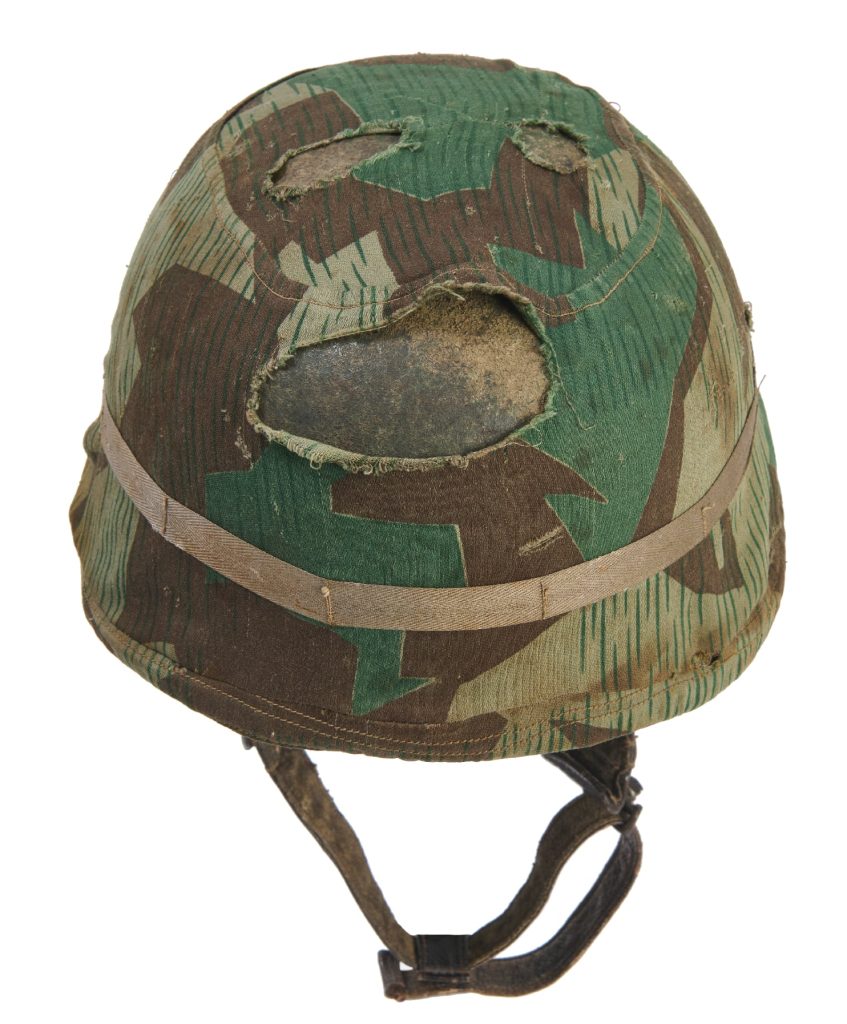
In May 1944, FJR6 was tasked with defending the area between Mont Castre and Carentan, which spanned 20 kilometers wide and 15 kilometers deep. They had a month to prepare for the expected invasion in the base of the French Contentin, which provided direct access to Carentan, a crucial strategic point for the Allied troops during the invasion.
Many items with the camouflage pattern have been discovered, most of which were found or left behind at the Normandy battlefields. It remains unclear whether the regiment adopted a different camouflage pattern after Normandy, and if they did, there is little documentation to support it. Furthermore, any subsequent changes were not widely implemented throughout the unit. Following their retreat from Normandy on 10.8.1944, FJR6 had only around 50 combat-ready troops remaining. As a result there are very few images of the camouflage pattern in wear post Normandy.
The interesting thing about the FJR6 camouflage pattern is that it is one of the only painted camouflage finishes which can be attributed to a single unit because of not one but several sources.
1. A lot of the helmets worn by the men of FJR6 were named and unit marked which can be researched and most all of the time points to this unit. Markings which can be observed are names, Feldpost numbers and sometime a specific Kompanie. The reason for the high percentage of named helmets is simple; the troops did not camouflage their helmets theirselves; most probably one Zug or Kompanie took that task upon them for the whole unit and with naming each helmet making it easier to return them after the repaint. The thing is as with gas masks, these helmets are made to fit. Hence they are often named because having a non fitting helmet could prove fatal in a combat situation.
2. A lot of US 101st Airborne veterans have taken with these camouflaged helmets as souvenirs. They fought at areas which were fiercely defended by FJR6 and that no other Fallschirmjäger unit fought close to. A lot of these helmets have provenance to certain towns which all seem to fall into the operating area of FJR6.
3. During the last decades several two-tone camouflage helmets have been dug up in the area of operations around Carentan. They are all in the same, two tone pattern.
4. A lot of photographs with important figures of the regiment show these helmets in wear further proving the unit, location and camouflage pattern.
These are four important observations because only with multiple observations we can establish in stead of assume the fact that this camouflage pattern was typical and can be identified as used by FJR6, not by any other Fallschirmjäger unit.
I will focus on camouflaged items with a solid provenance that can be attributed to FJR6. It is worth noting that not all two-tone camouflage pattern helmets or equipment are unique to this unit, but the items presented below are, in my opinion, undoubtedly used by FJR6. Along with the items pictured, I have also observed camouflaged holsters, weapons, regular helmets, motorcycles and belt buckles. After discussing the two-tone camouflage pattern, I will present other camouflage patterns used by Fallschirmjäger on the western front post June 1944 for studying and comparing reasons.
Camouflaged helmets of Fallschirmjäger Regiment 6
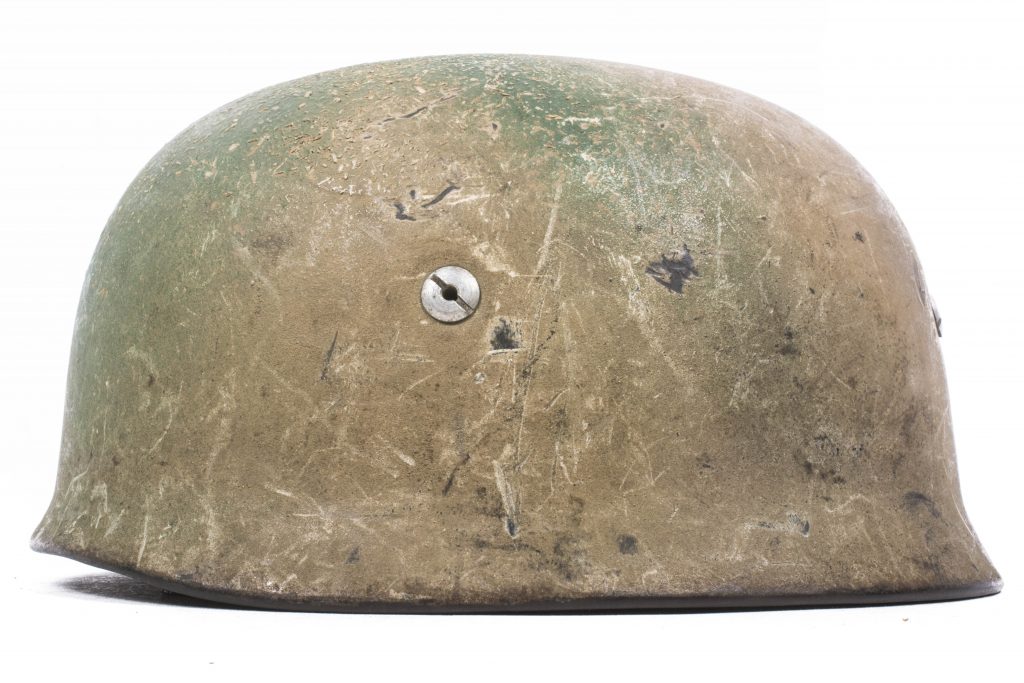

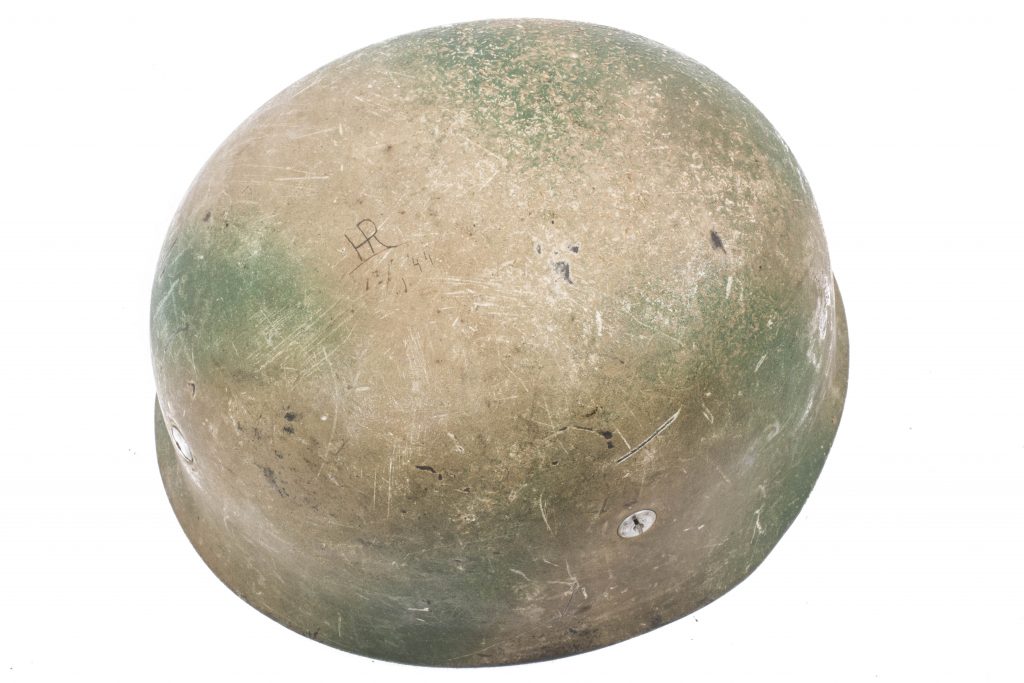

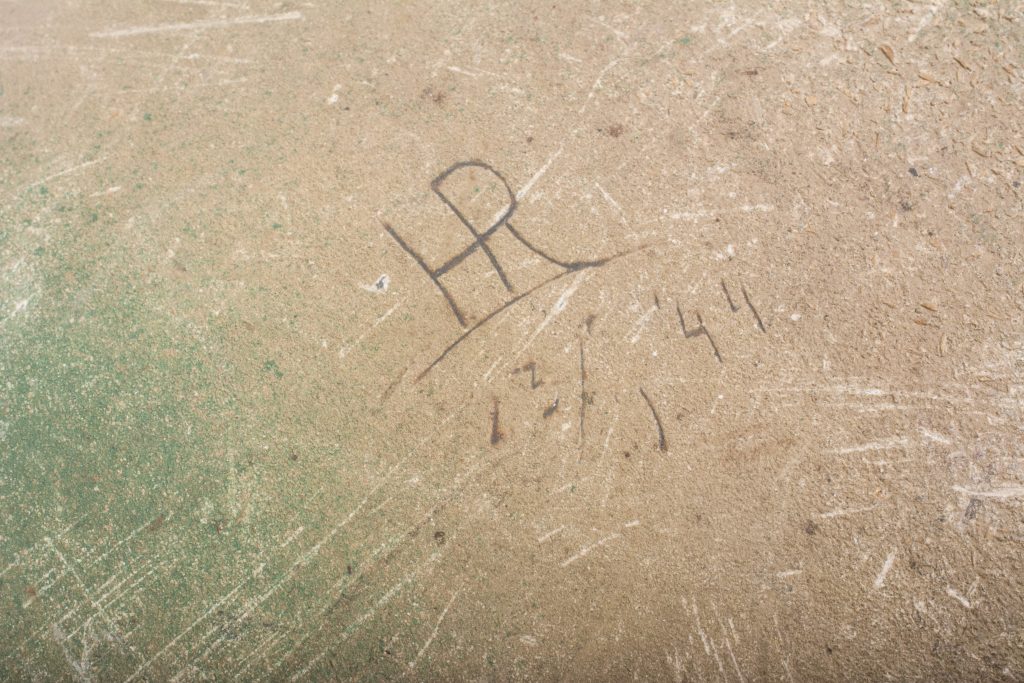
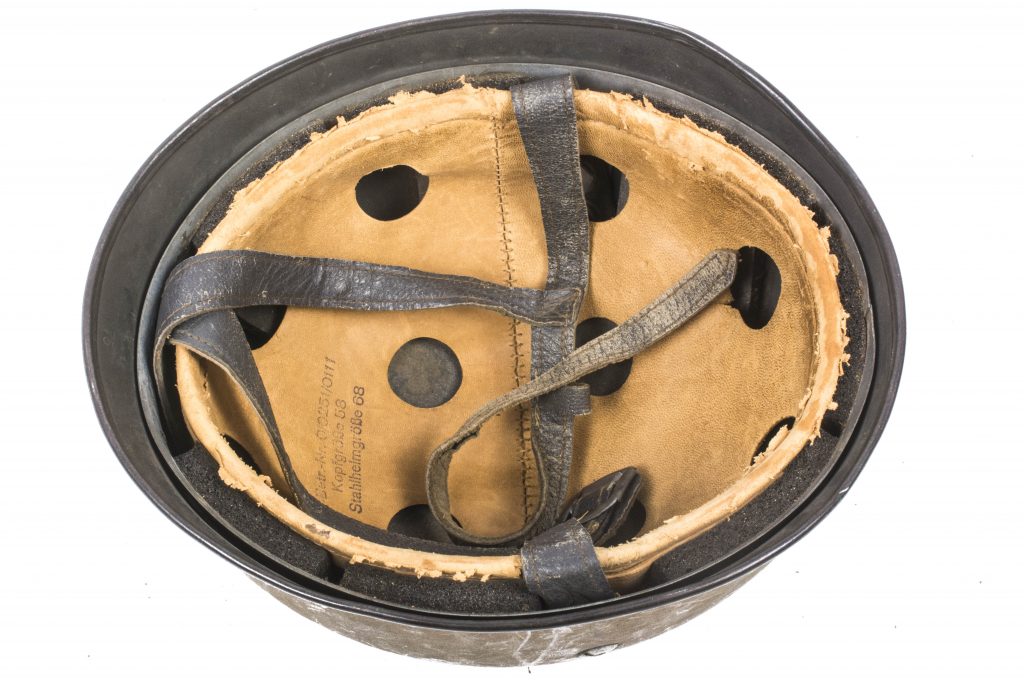
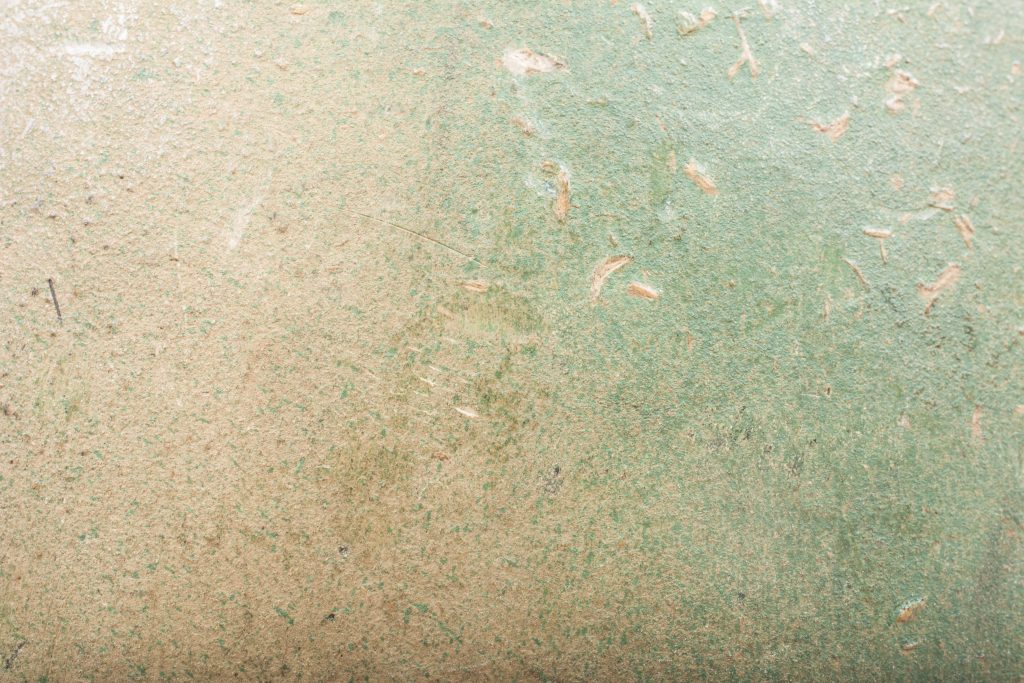
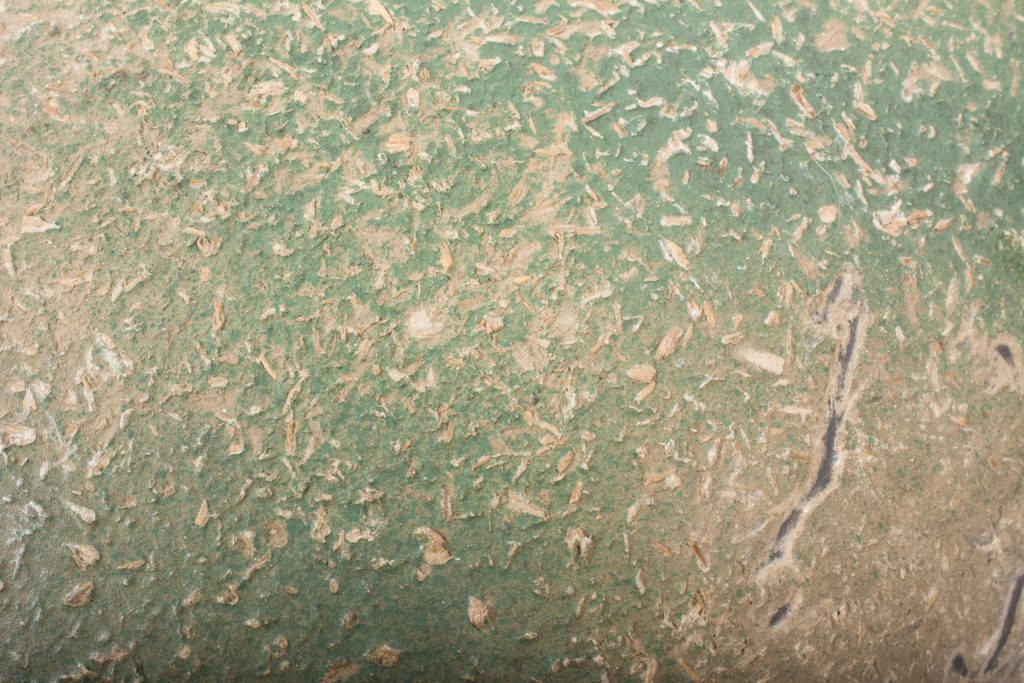
A beautiful camouflaged paratrooper helmet that originated from the Kapelsche Veer, the Netherlands. The helmet is camouflaged in a typical FJR6 camouflage pattern in two tones mixed with sawdust. The helmet was retrieved by a Dutch translator working with interrogating the German prisoners in Tilburg. The helmet has been in my friend Patricks family ever since – and still does today. A interesting feature is that the helmet is a very late war example with the last pattern chinstrap and vented aluminum bolts. The helmet retains a very fine layer of sawdust on the painted shell.
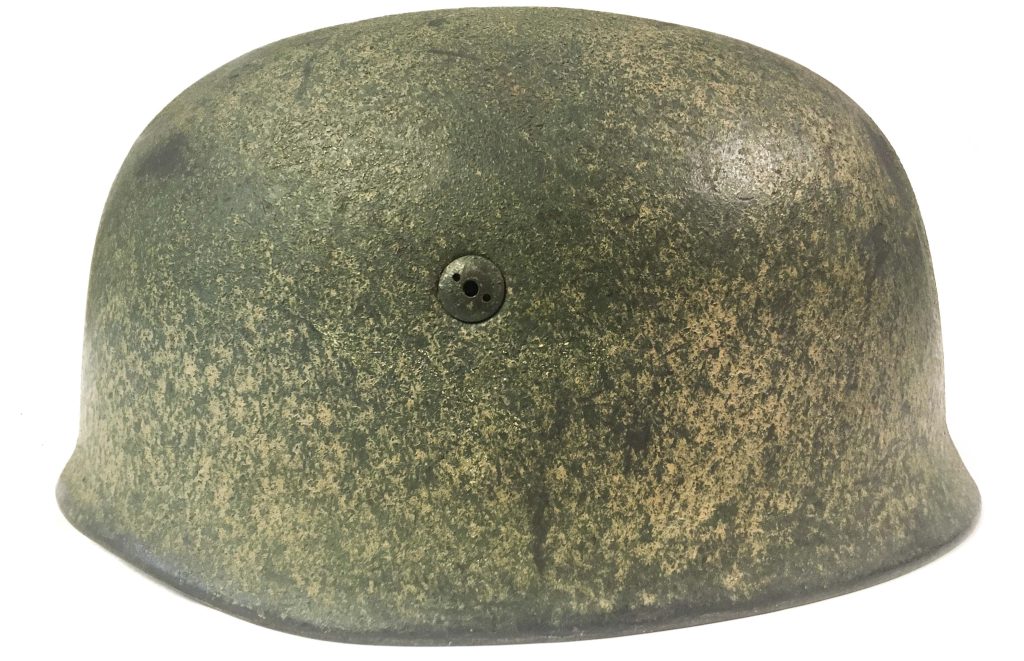
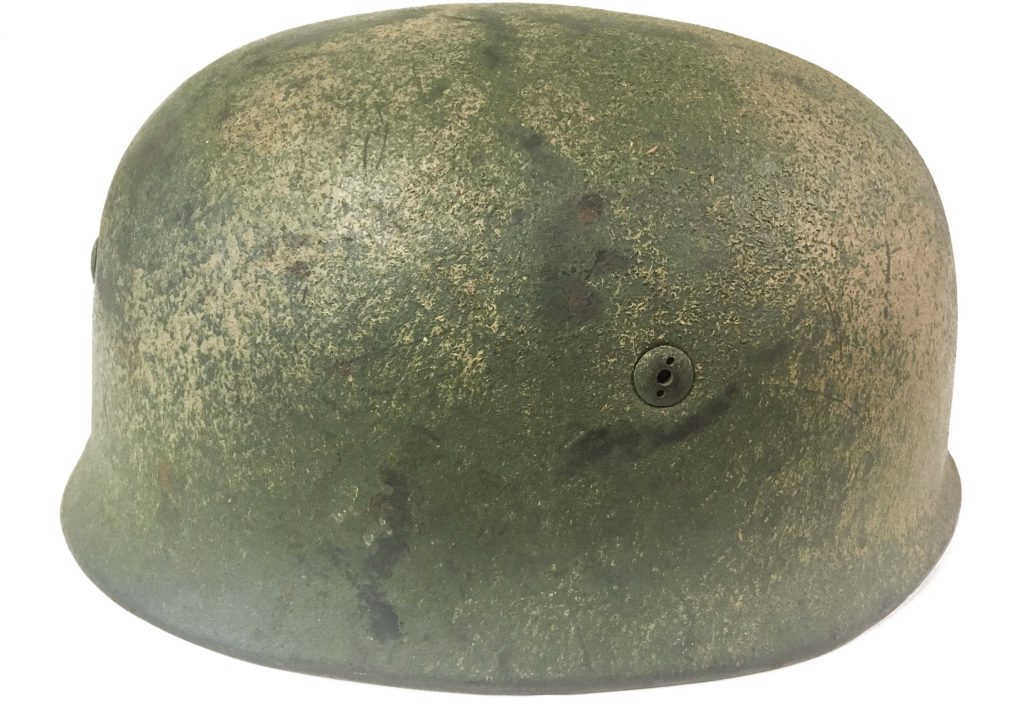

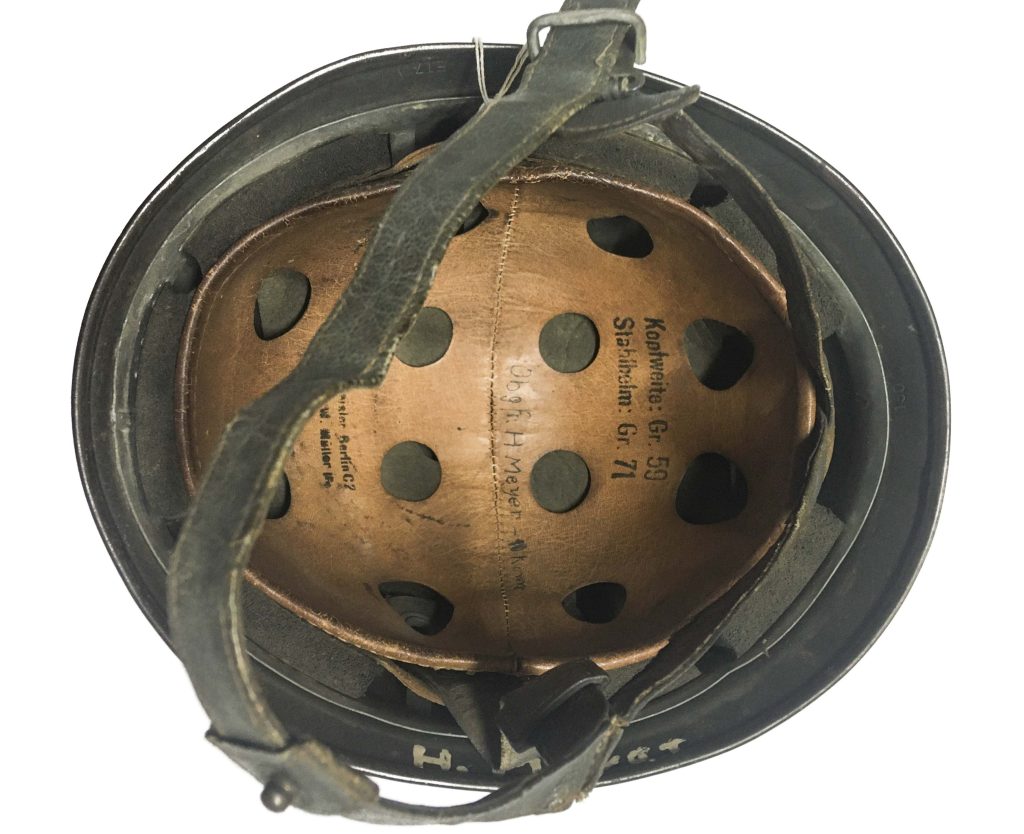

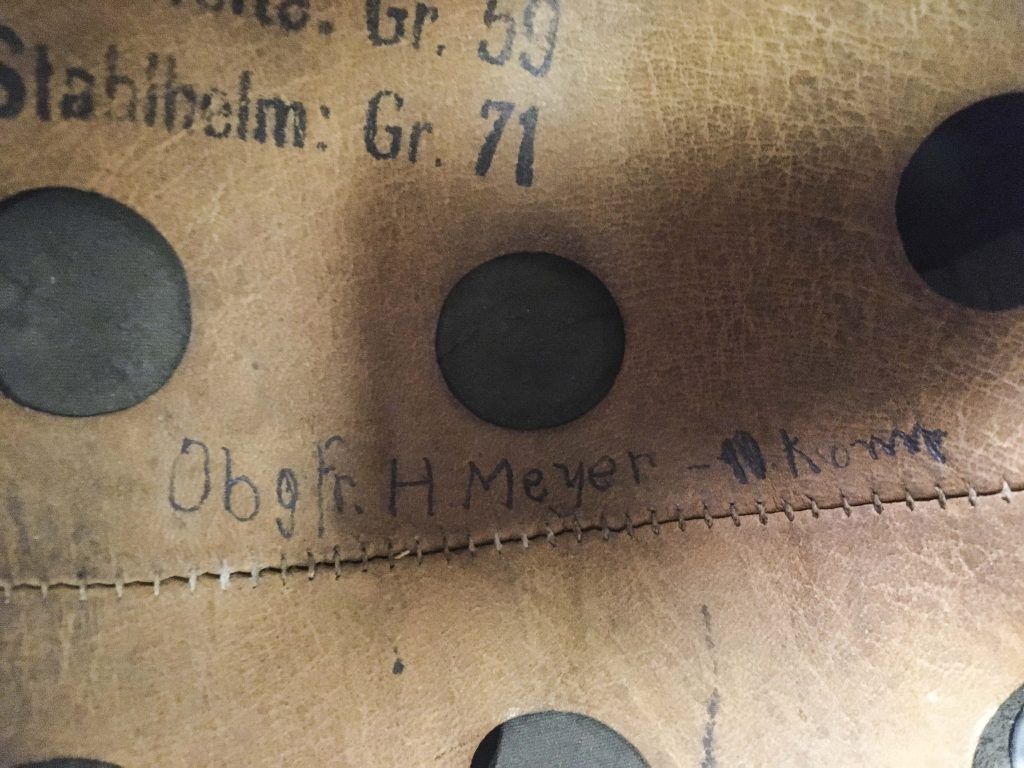
W. Warner collection
A typical FJR6 camouflage helmet to a Obergefreiter in the 10. Kompanie named H. Meyer. The helmet is a typical US Veteran bring back. The eagle can be seen peaking through the paint.

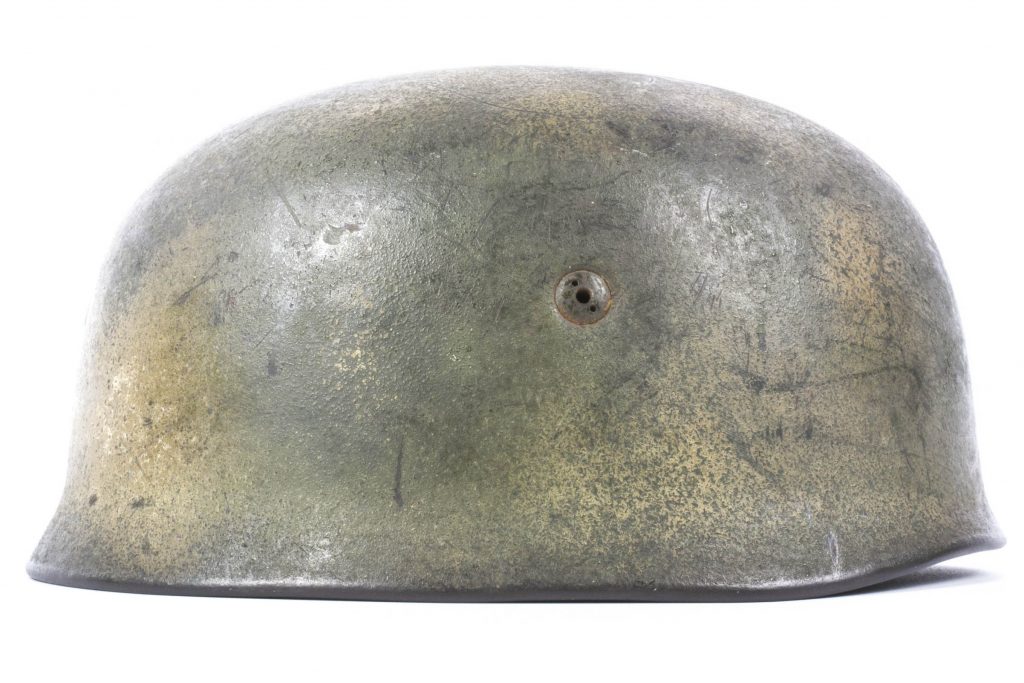
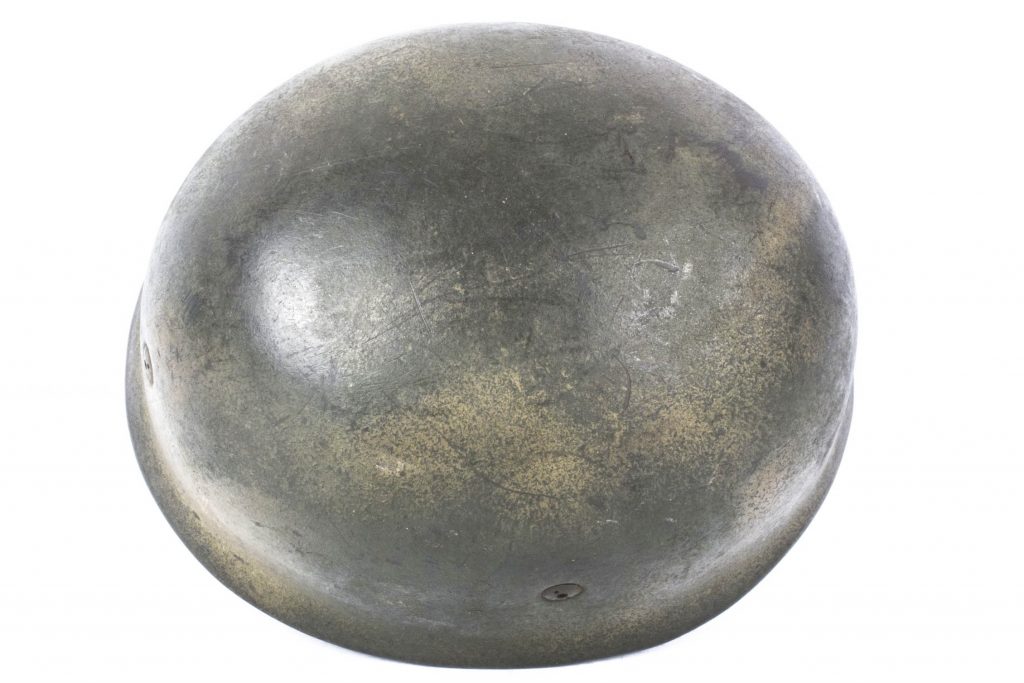
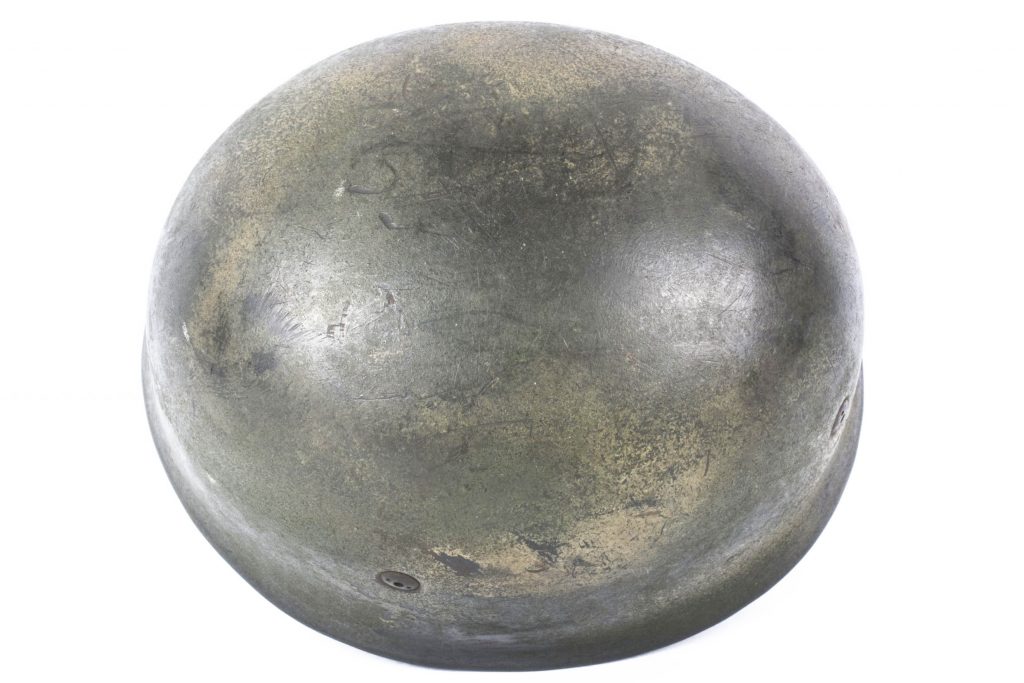
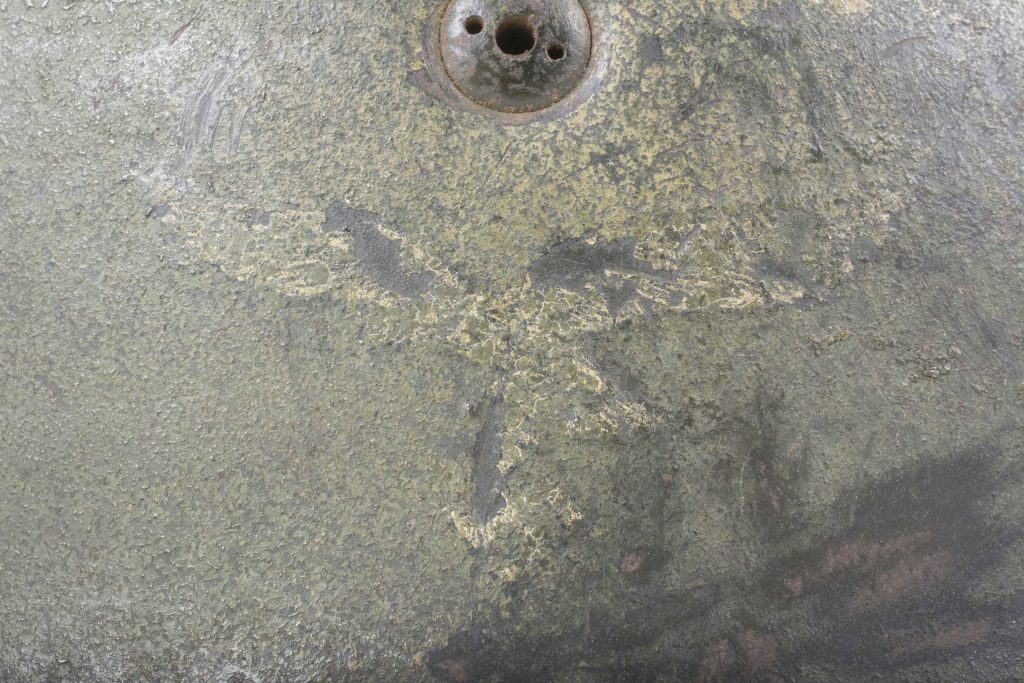
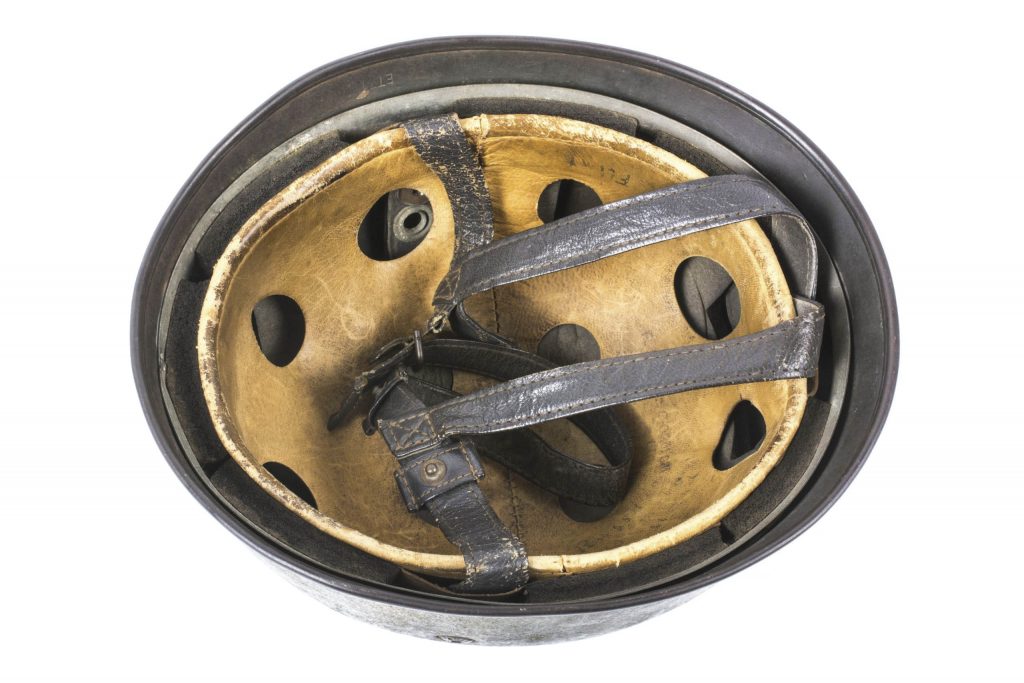
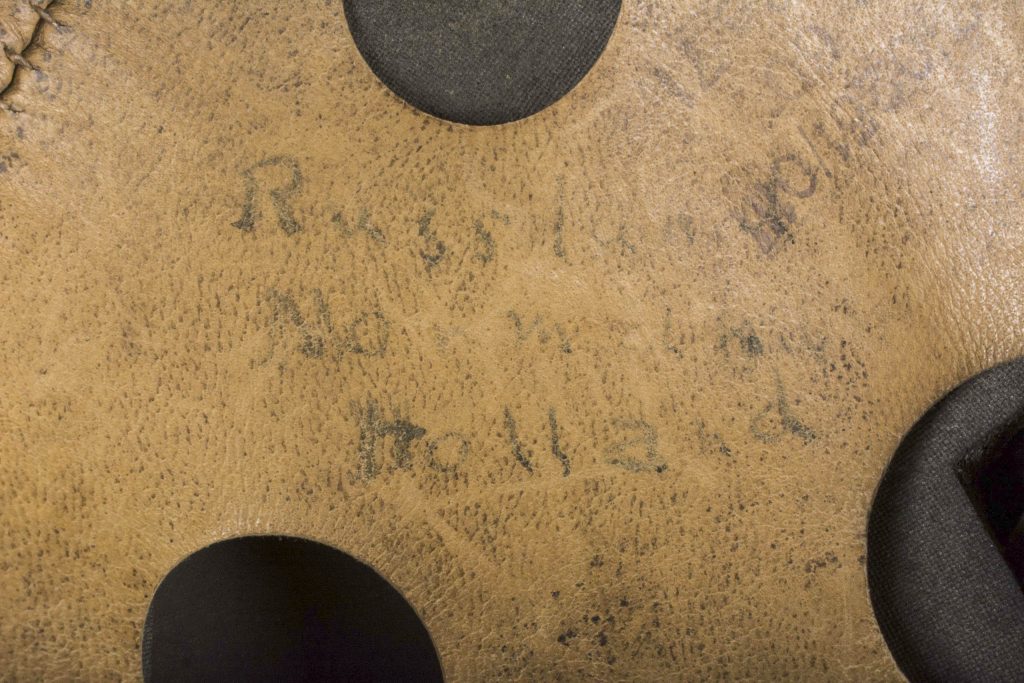
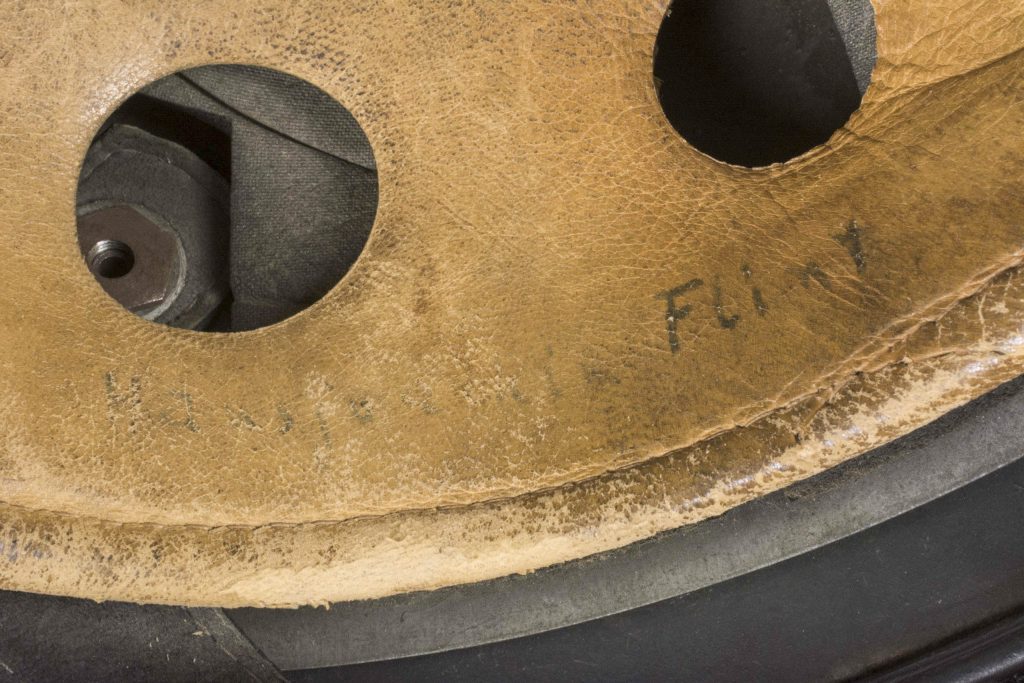
Stunning and textbook M38 paratrooper or Fallschirmjäger helmet in the tell-tale sawdust two-tone camouflage pattern as used with the 6. Falschirmjäger Regiment. The helmet is marked ET71 indicating production by Eisenhuttenwerke Thale with its factory placed size 60 liner with period attached chinstraps and its original bolts. The helmet was factory finished in feldgrau with a single decal which can still be seen underneath the paint. The helmets liner is named to the partly readable Hau****** Flint and is marked Russland, Normandie and Holland indicating the original wearer of the helmet was a veteran of these campaigns. The helmet was originally found in the Netherlands.
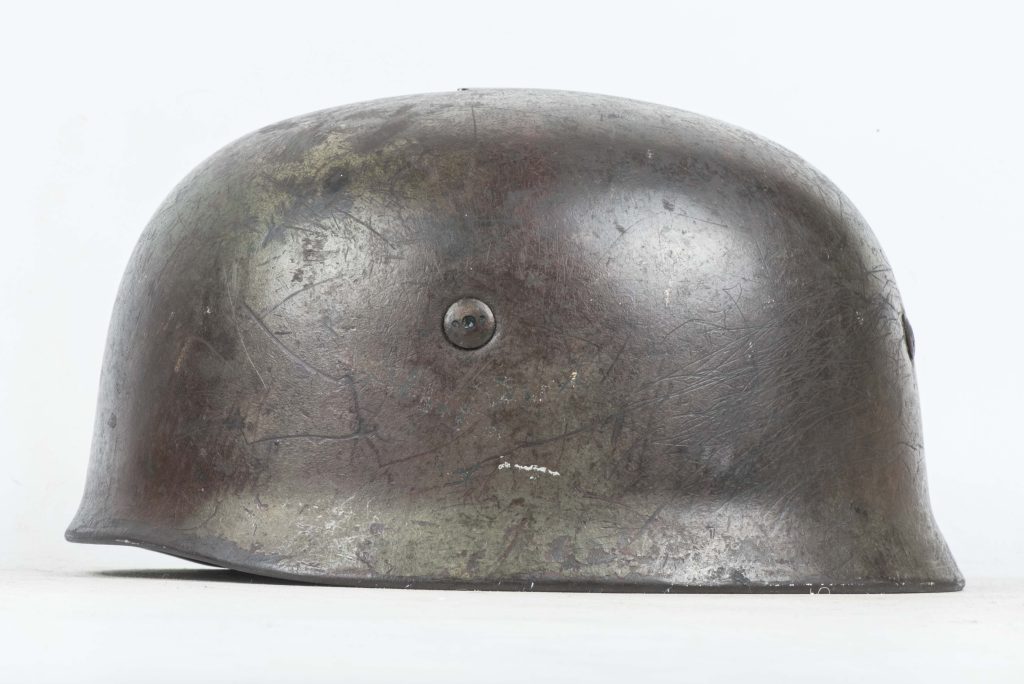
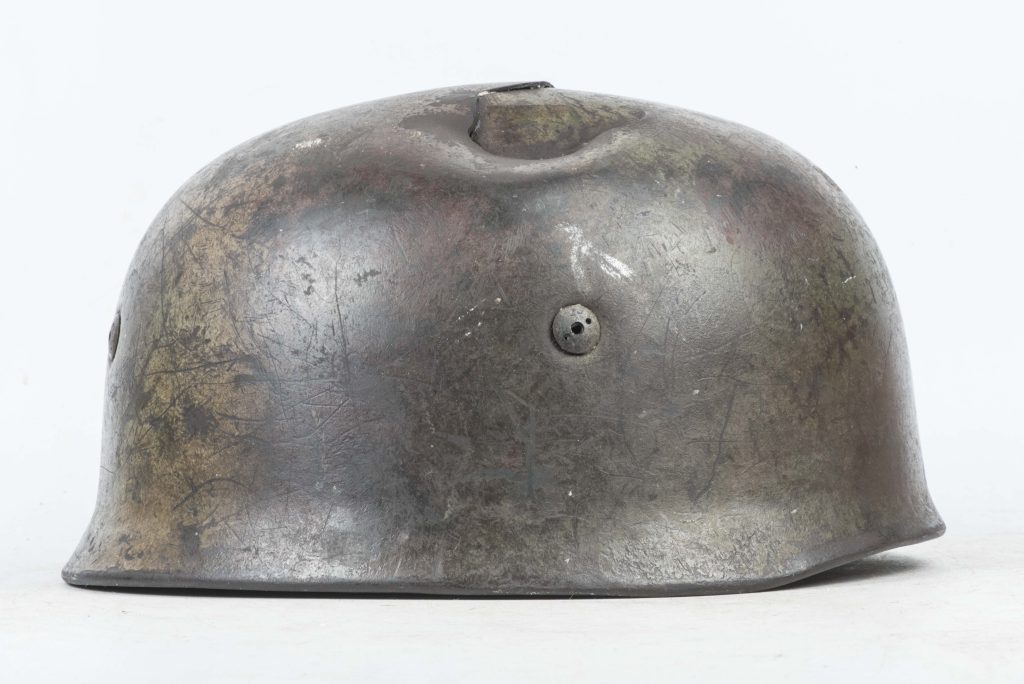


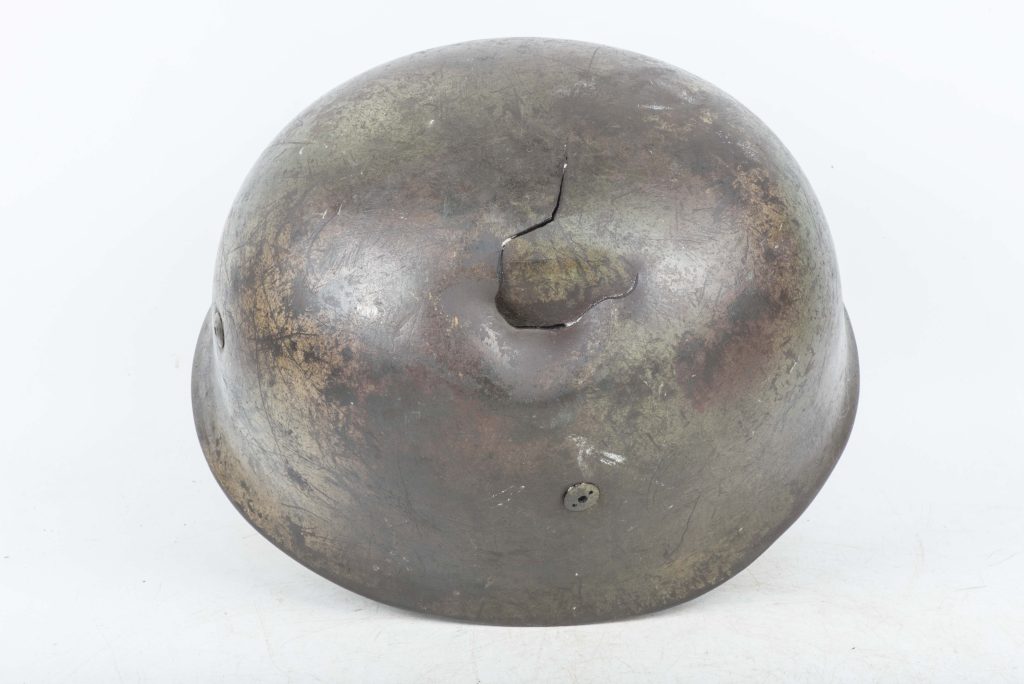
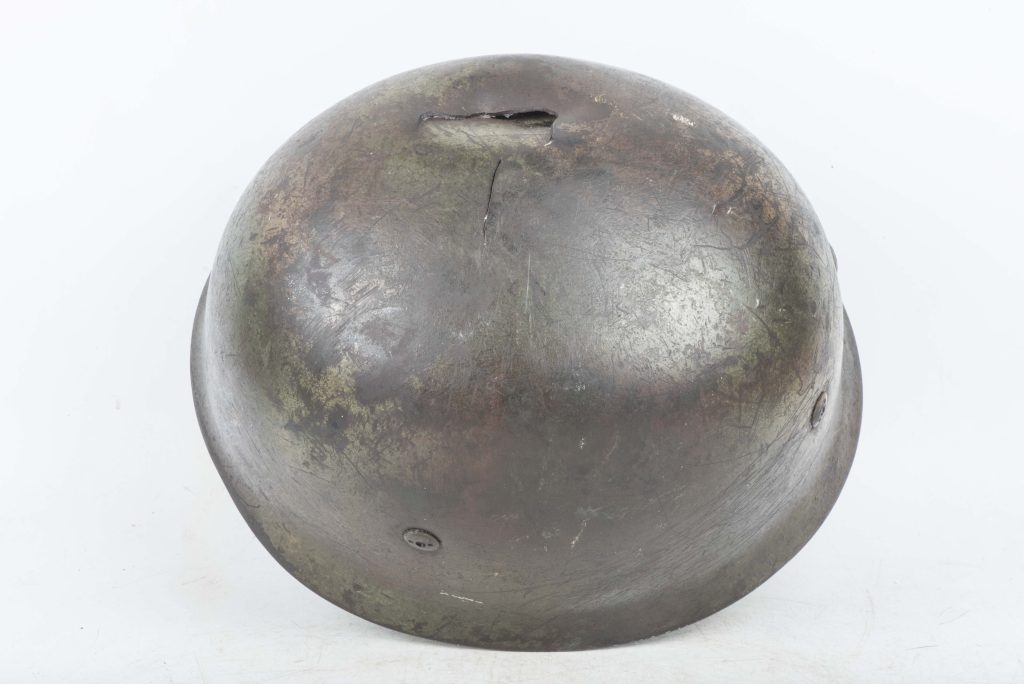
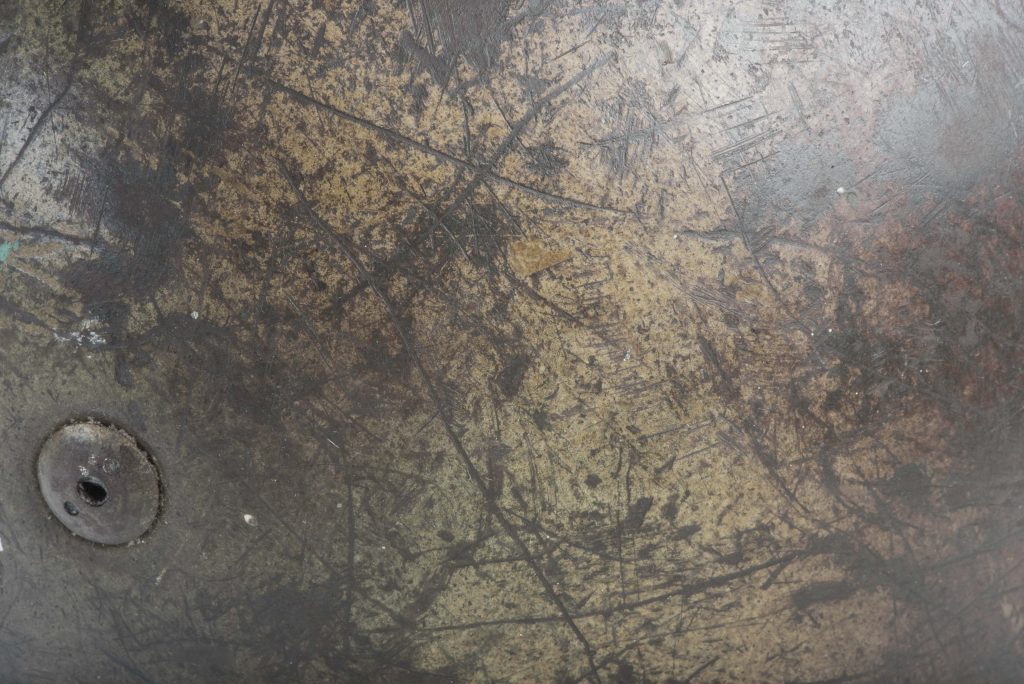
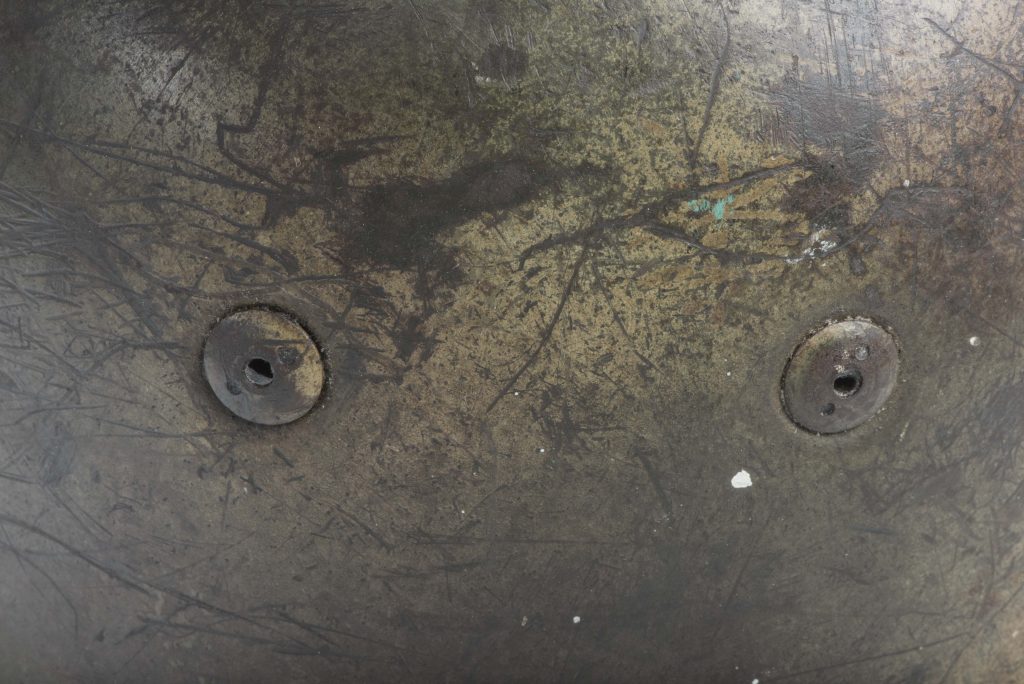
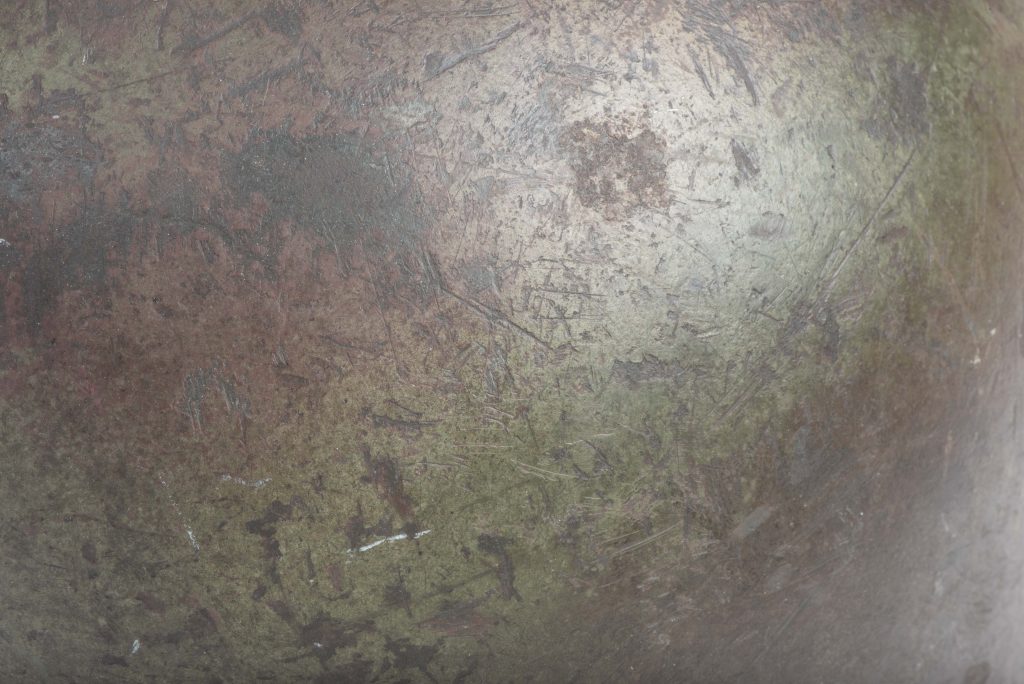
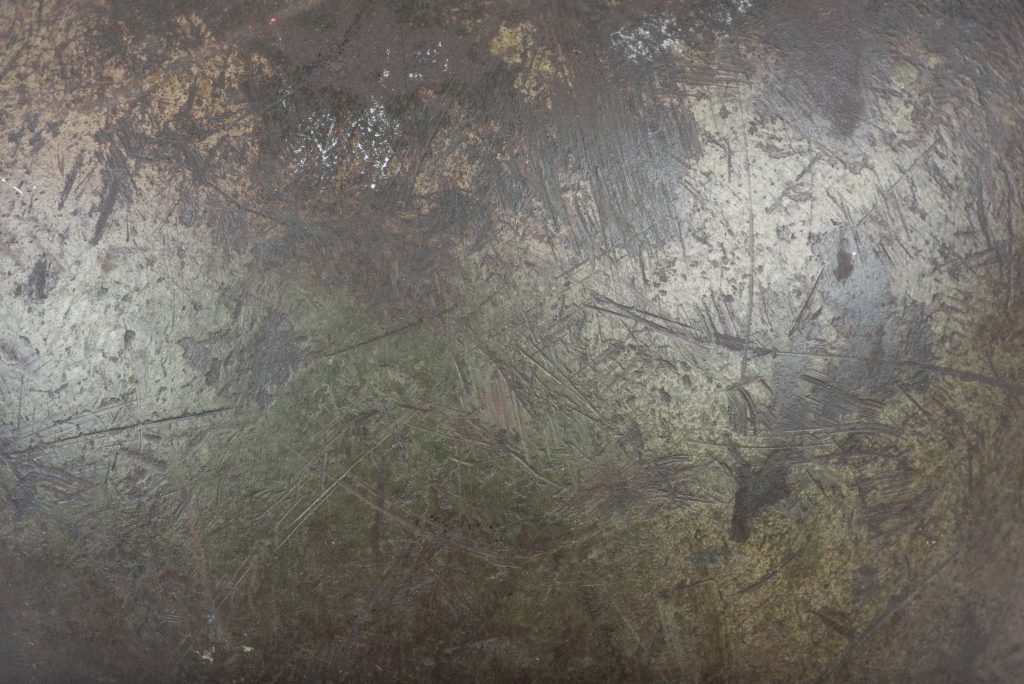


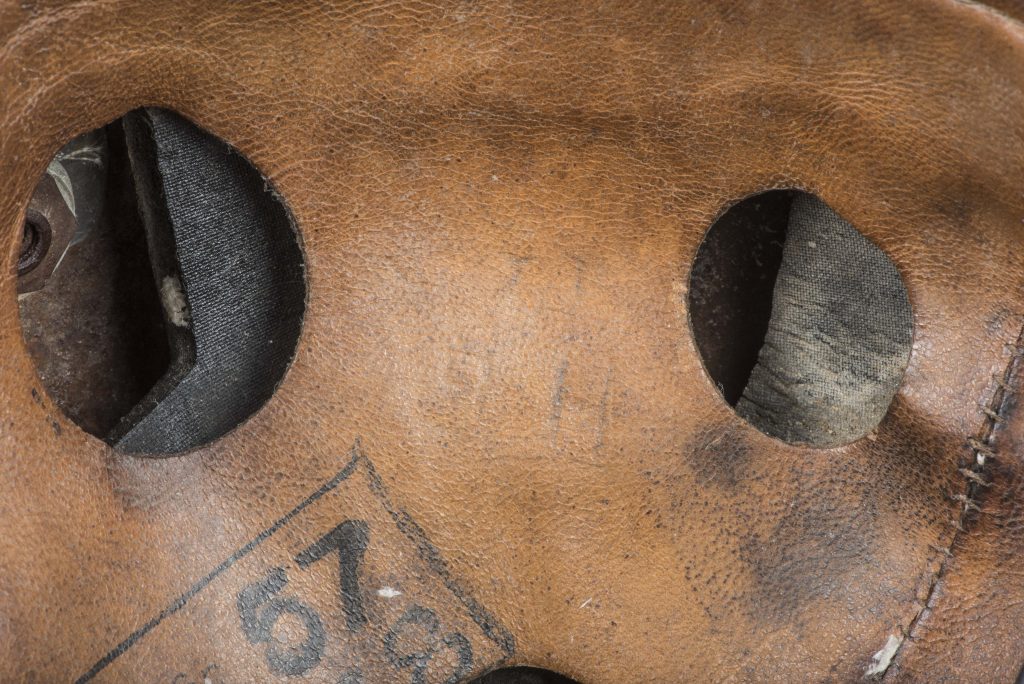

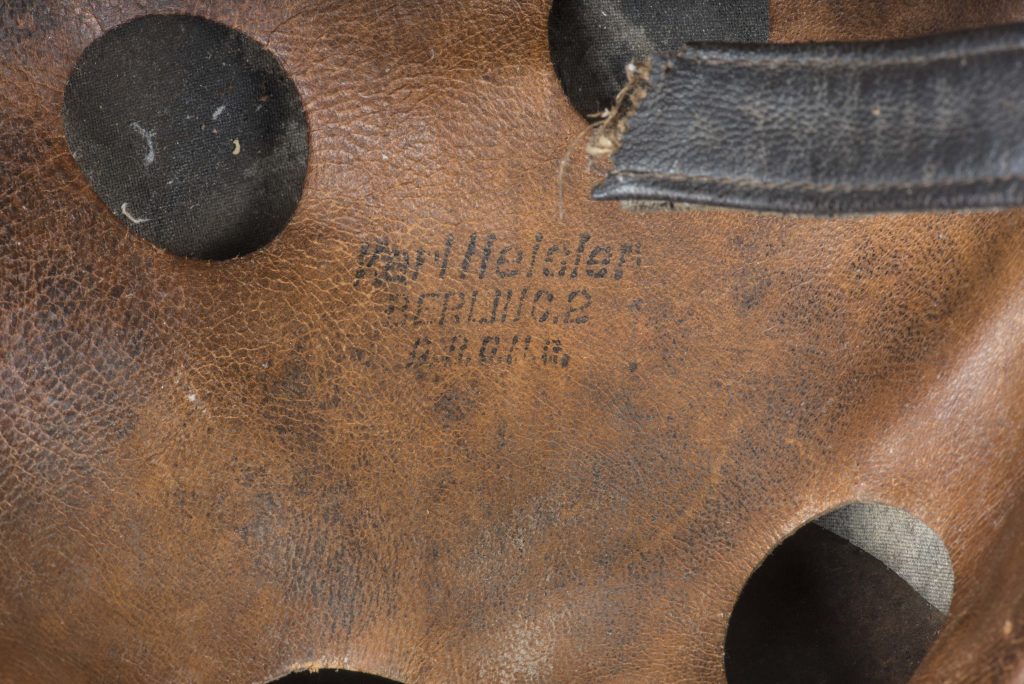
Another typical FJR6 two tone camouflage helmet, but with a catch. This helmet has the typical May 1944 two tone camouflage pattern as applied in Normandy prior to the invasion. This helmet was originally found at Valkenswaard which is near the Belgian Border, right on ‘Hells Highway’, a highly fought over part of the south of the Netherlands during operation Market Garden. This helmet stayed on the attic of a Dutch household in my own town until March 2025. The helmet retains its original liner and cut off chinstraps which in combination with the battle damage on the top indicates that the individual soldier was wounded severely in the best possible outcome. There is no name but two initials ‘HB’ to be read in the liner. The battle for Valkenswaard was fought by Kampfgruppe von Hütz which fought under the command of FJR6. Interestingly this helmet must have seen action in Normandy, and lated in Holland. The helmet was at some point between Normandy and Market garden decorated with additional brown camouflage paint to make it a three-tone in stead of a two tone helmet. The individual wear pattern between the two-tone and later applied third tone show that this helmet was worn in between.
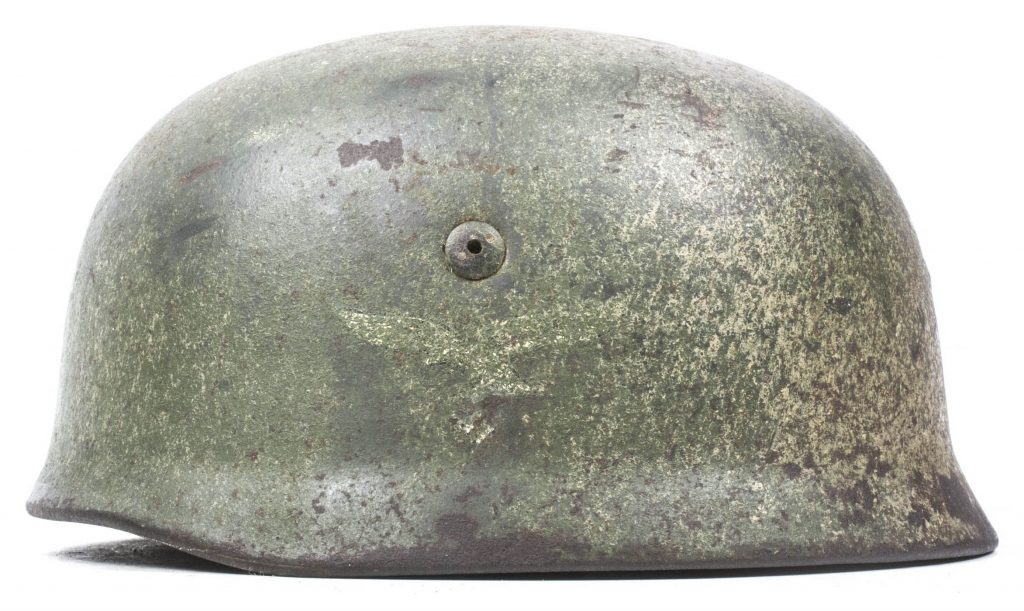



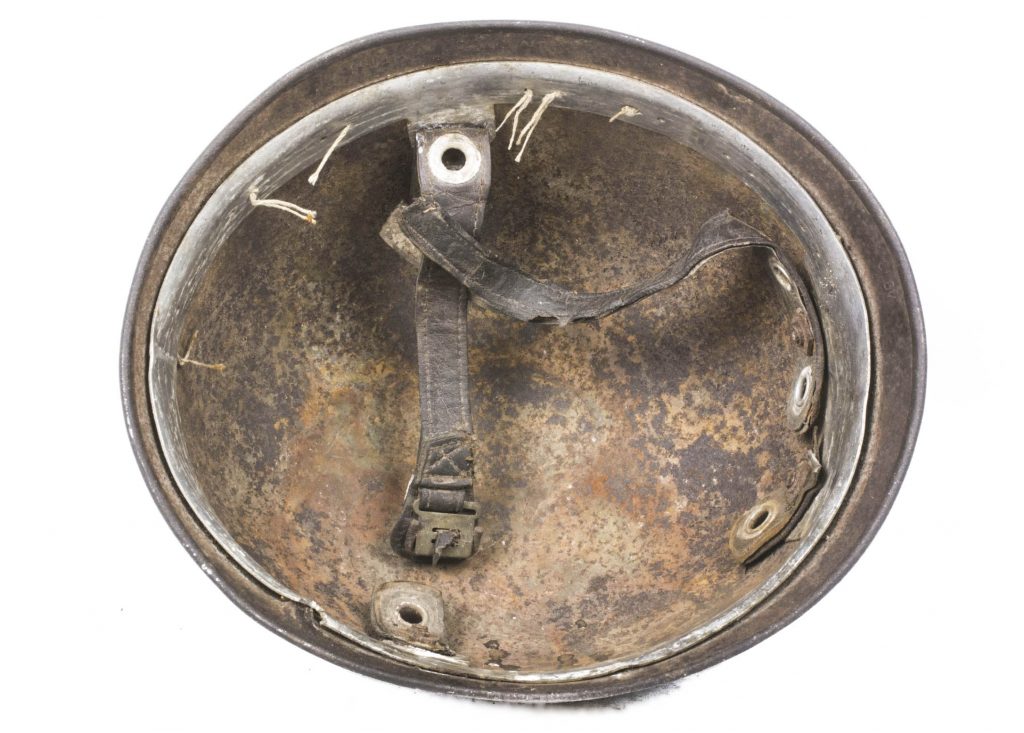
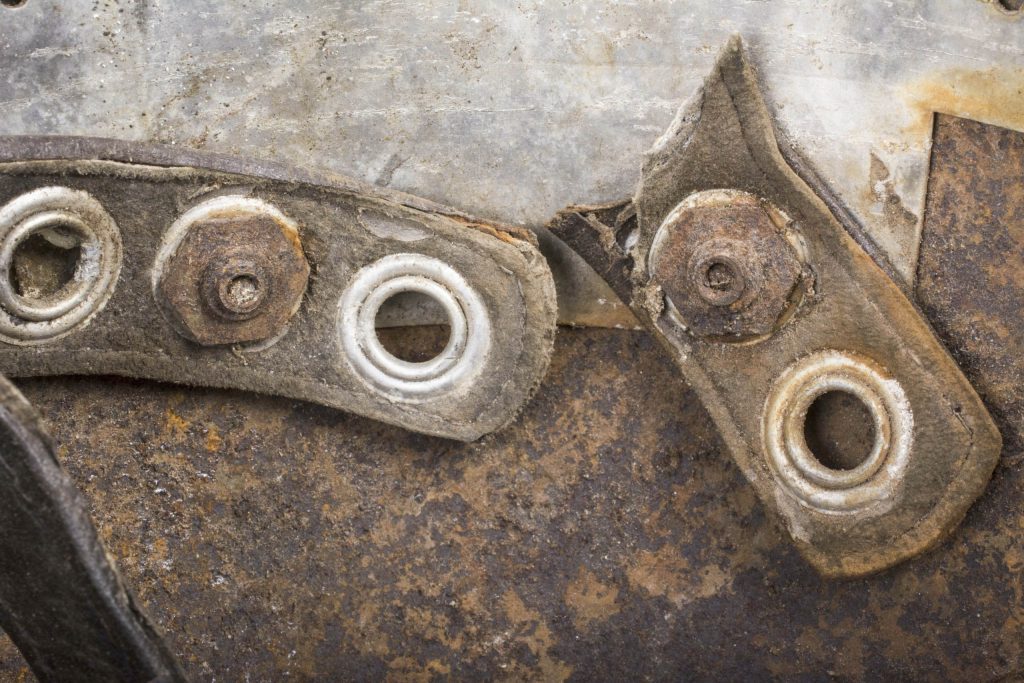
Stellar ET68 M38 paratrooper helmet from Saint–Côme–du-Mont in the typical camouflage pattern. The helmet retains up to 85% of its original finish and its Luftwaffe decal is nicely peaking through the paint. The helmet retains its 4 tight liner bolts with cut chinstraps. The chinstraps and the lack of the liner in combination with the bullet hole in the right flank indicates it was probably removed for being drenched in blood. The helmet also shows the typical oxidation inside for being in contact with blood. The helmet surfaced a good 15 years ago in Normandy when someone visited a Chambre D’hote in Saint–Côme–du-Mont and was gifted this helmet along with a US tanker helmet. This village was the theatre of a heavy battle between Fallschirmjäger Regiment 6 and the US 506 PIR on June 7-8 1944. The helmet has a clear bullet hole on the right flank most probably killing the wearer. Unfortunately, the helmet shell is not named. The helmet is marked ET68 indicating production by Eisenhuttenwerke Thale.
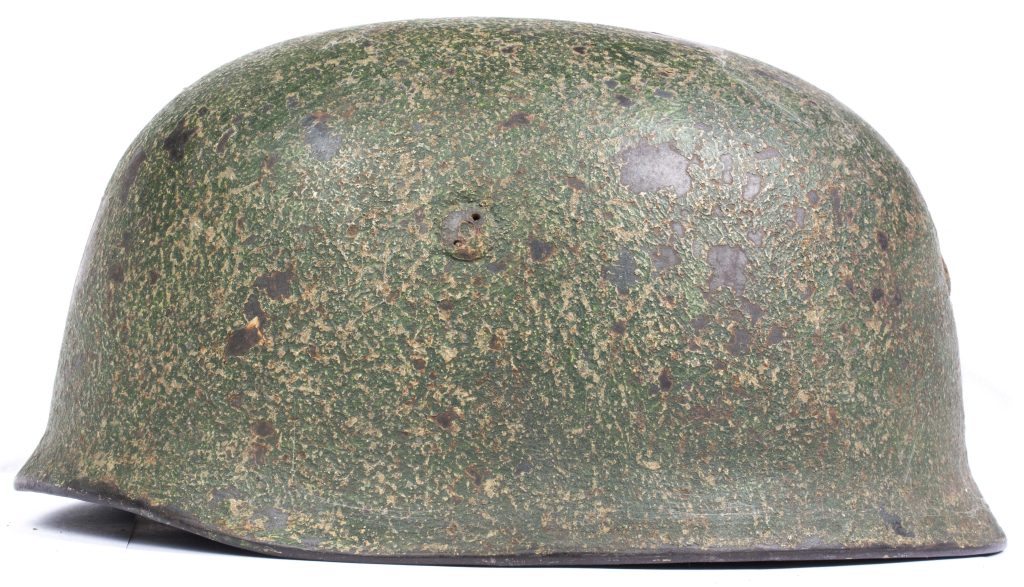

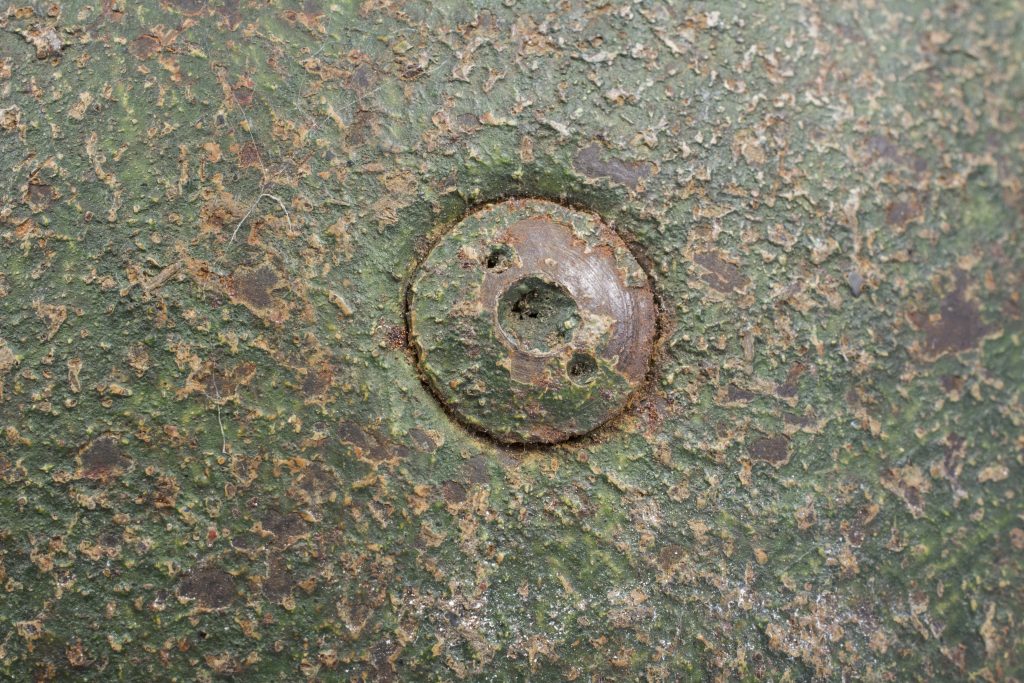
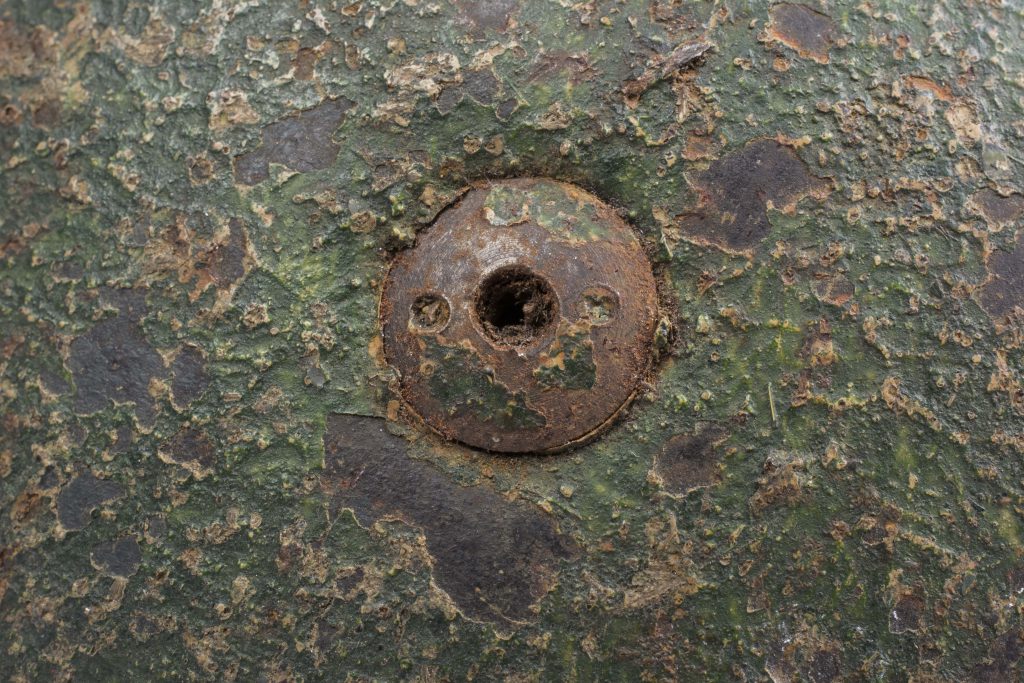

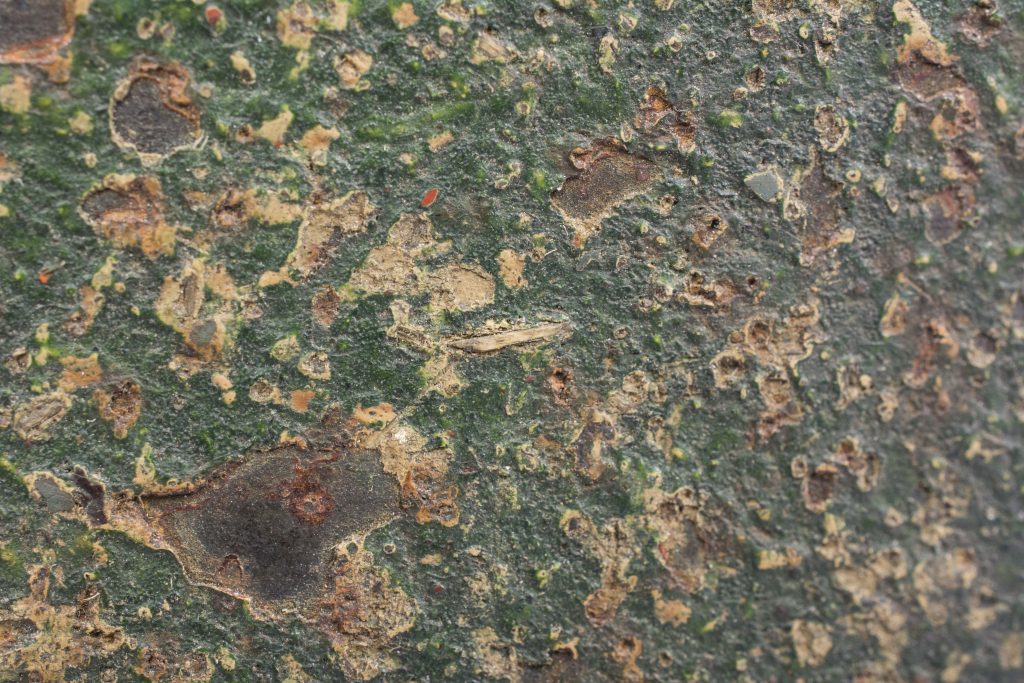
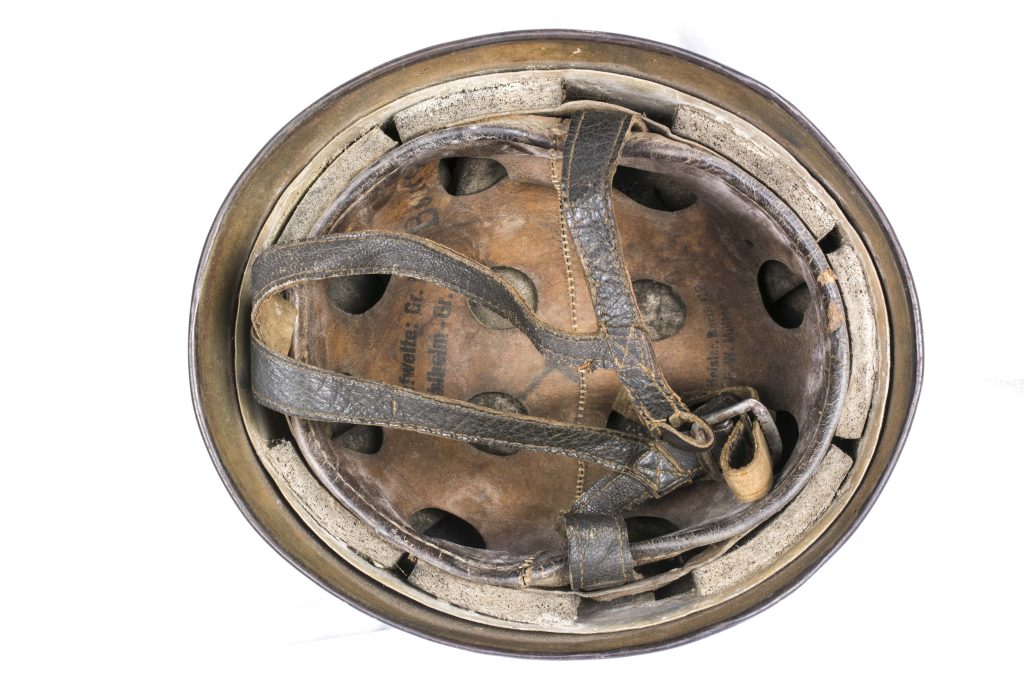
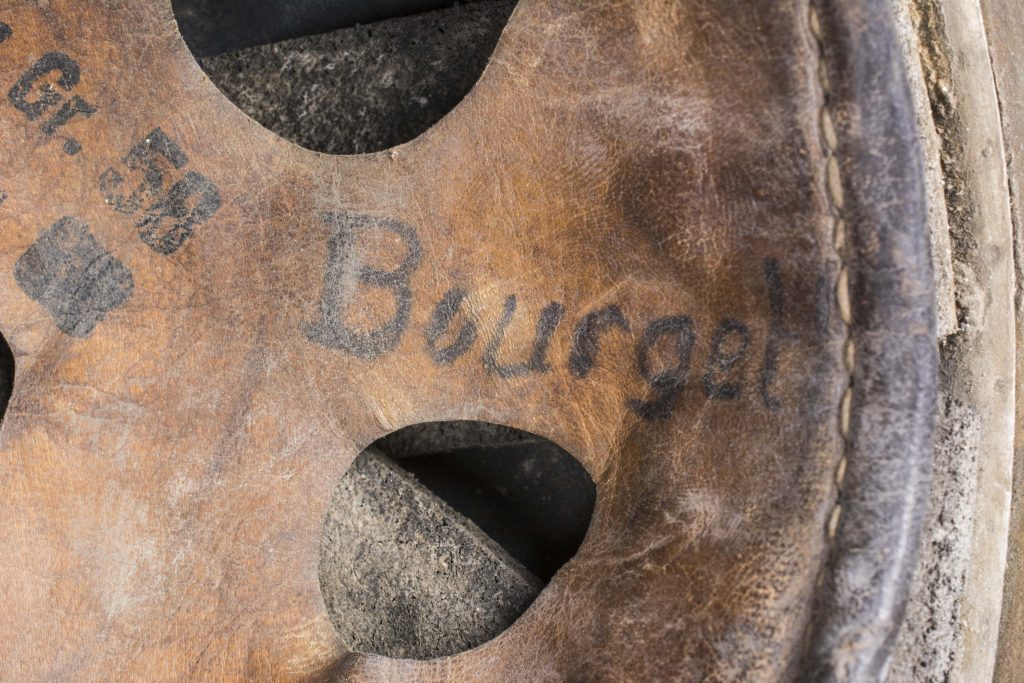
Normandy collection
A textbook FJR6 camouflage helmet in used condition. This example features a predominantly strong green overspray over the wood chip enriched tan base finish. Another interesting feature is the tan painted interior. The helmet shows no pattern but is merely nearly 100% oversprayed in the green colour. The helmet is named Bourgel to which I can not find a match in the Volksbund archive so my best guess is he was wounded or taken prisoner considering the helmet was left behind in Normandy.
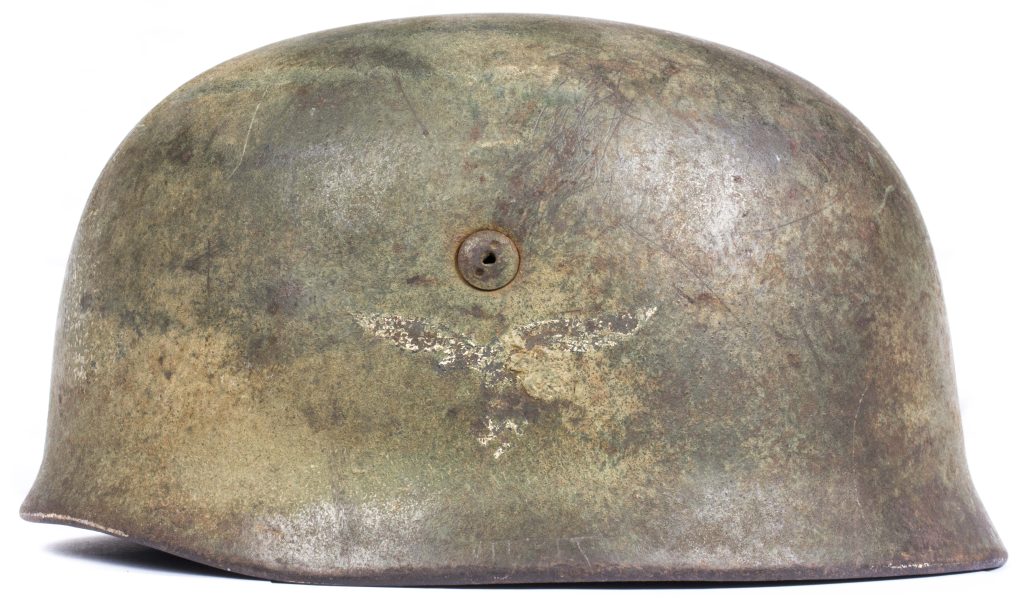
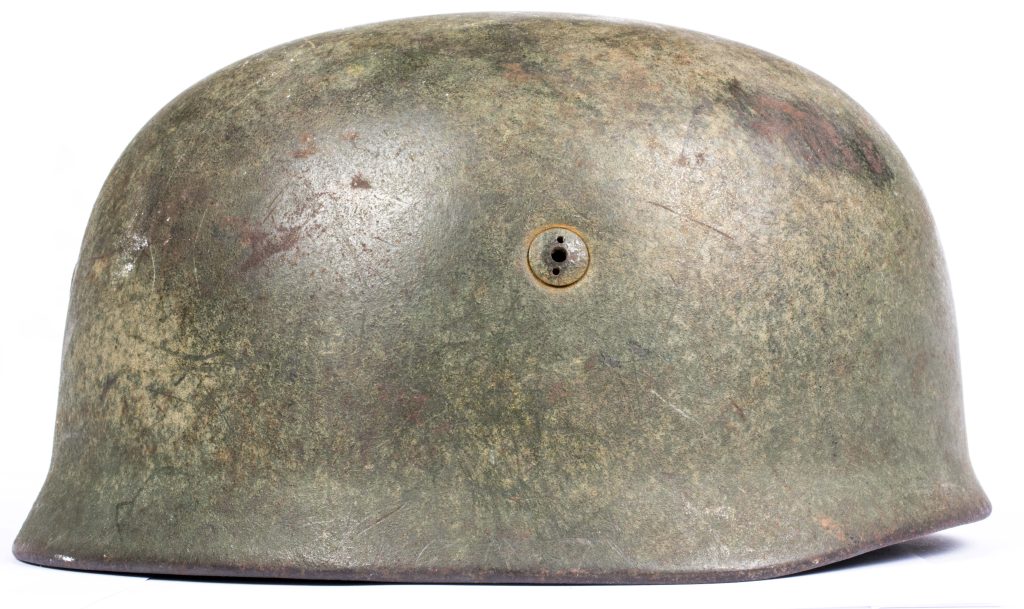
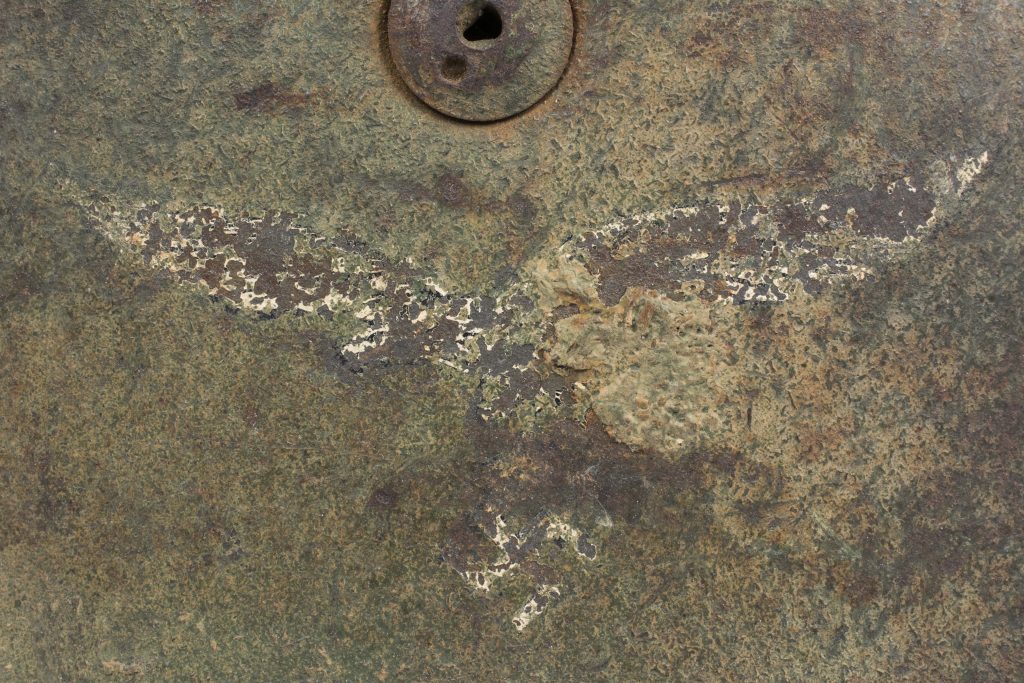
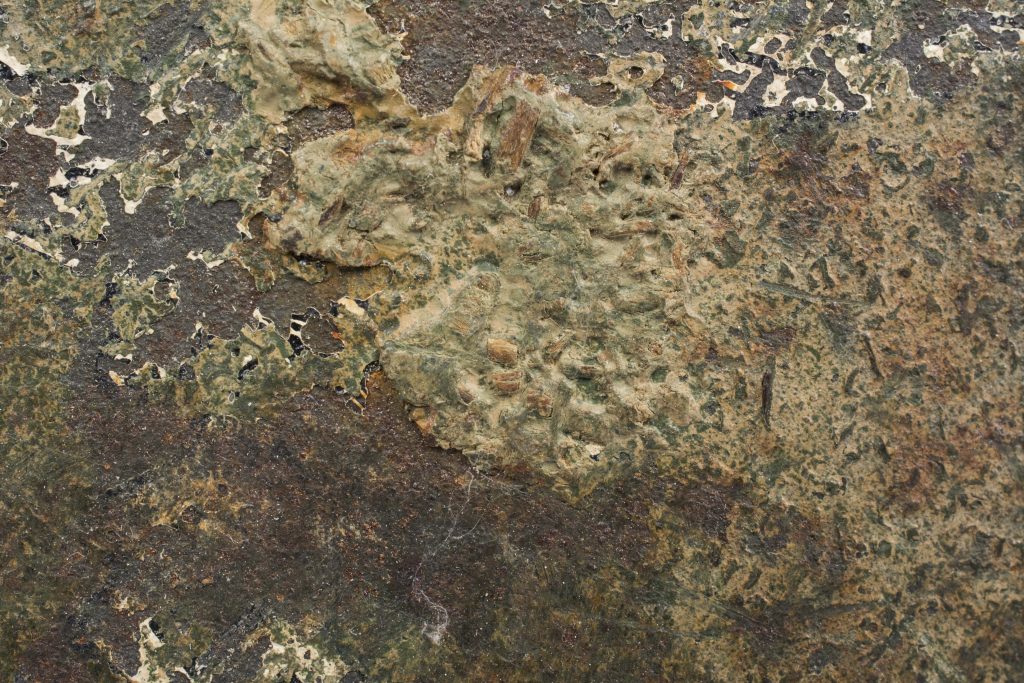
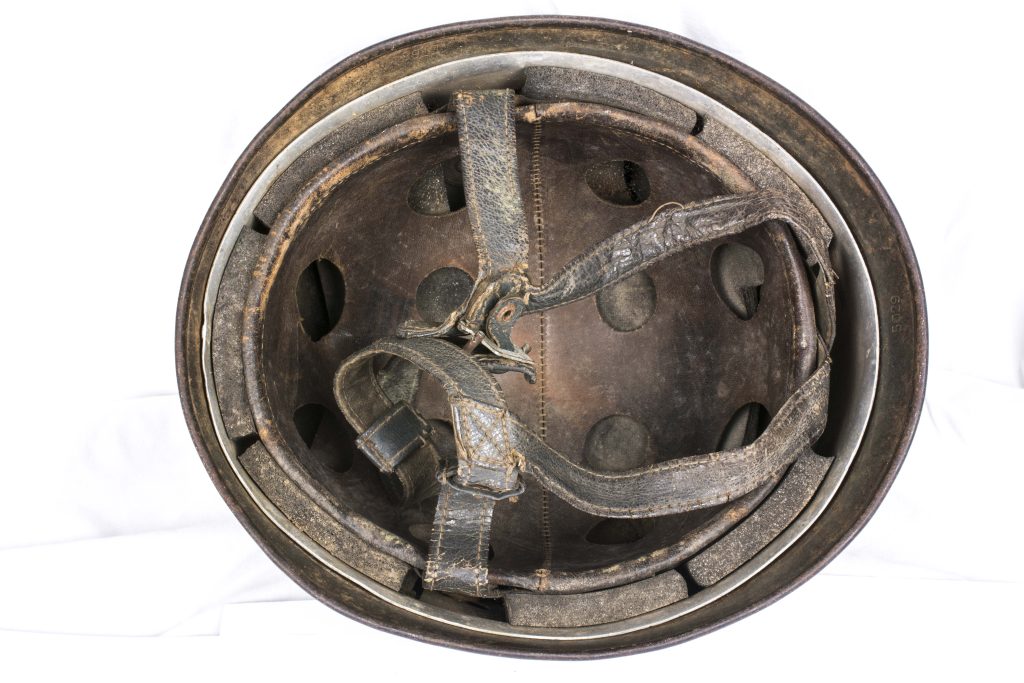
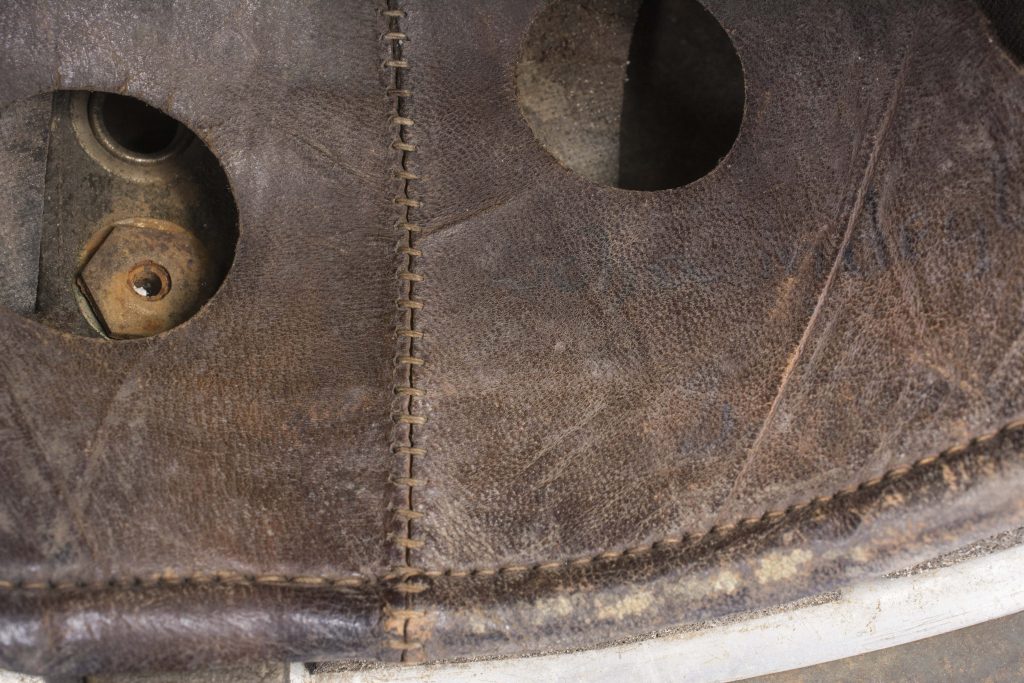
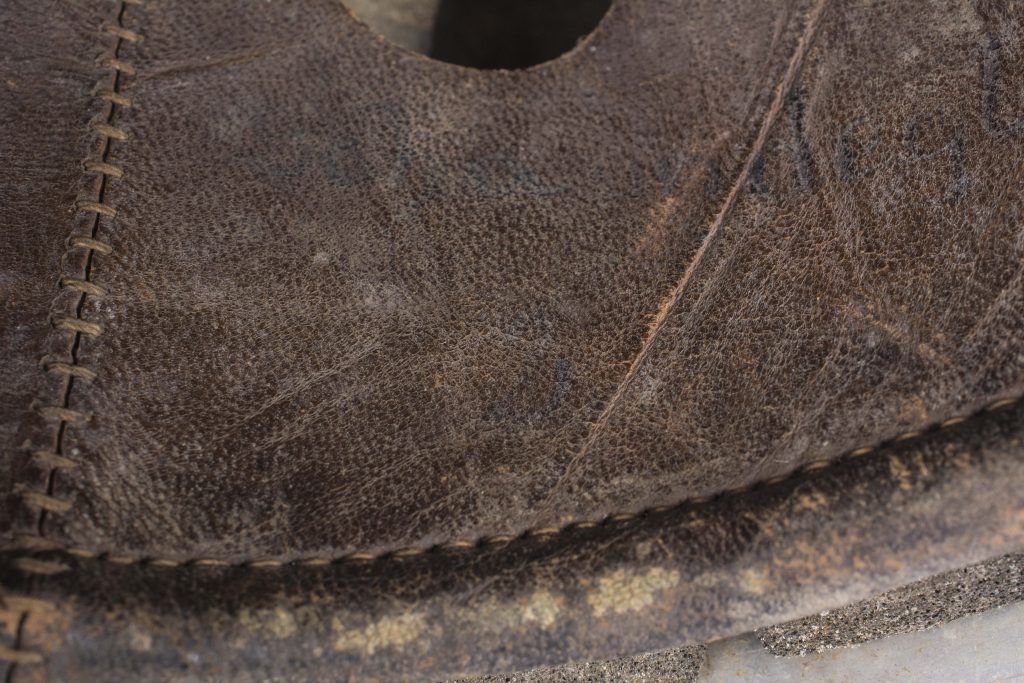
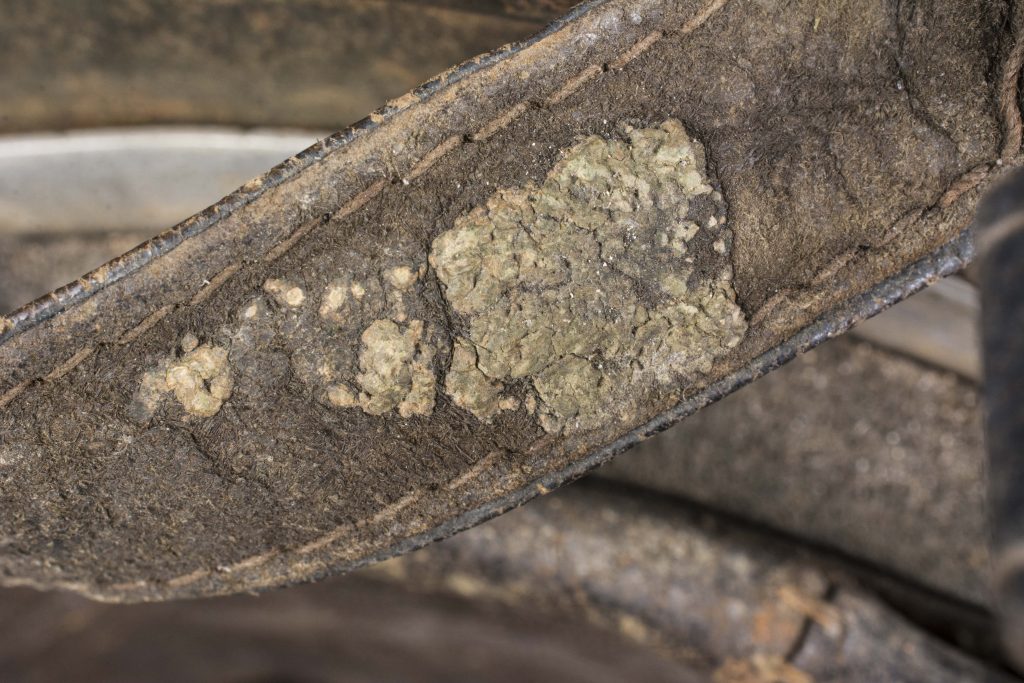
Goliath collection
Above another helmet which stayed behind in Normandy, with a number of interesting features. The first being the typical camouflage paint which partially remains to the chinstrap. Secondly it is named Schaundegl with a 2 or 3, most probably indicating 2. or 3. Kompanie to which I can not find a match in the Volksbund archive so my best guess is he was wounded or taken prisoner considering the helmet was left behind in Normandy.
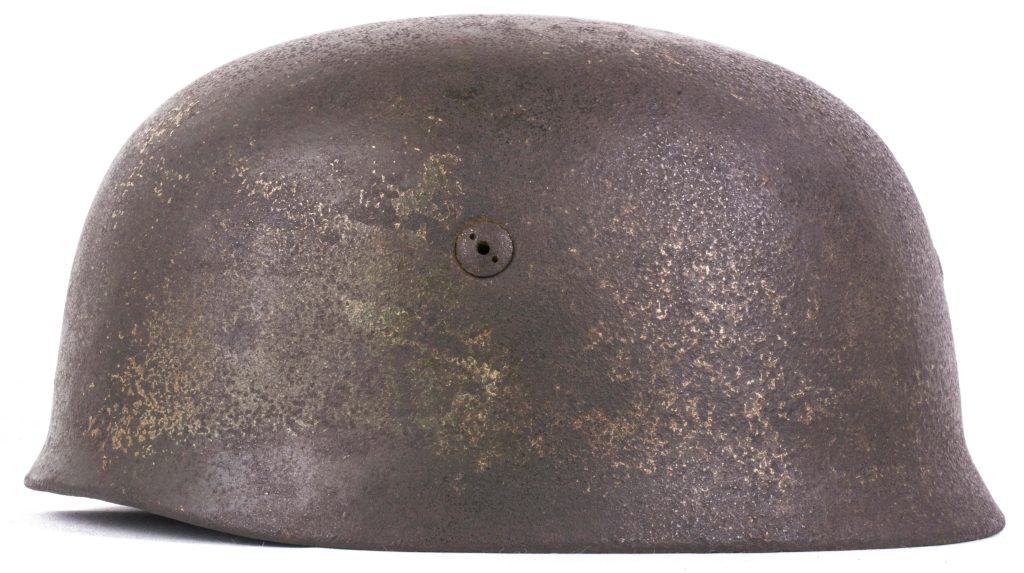
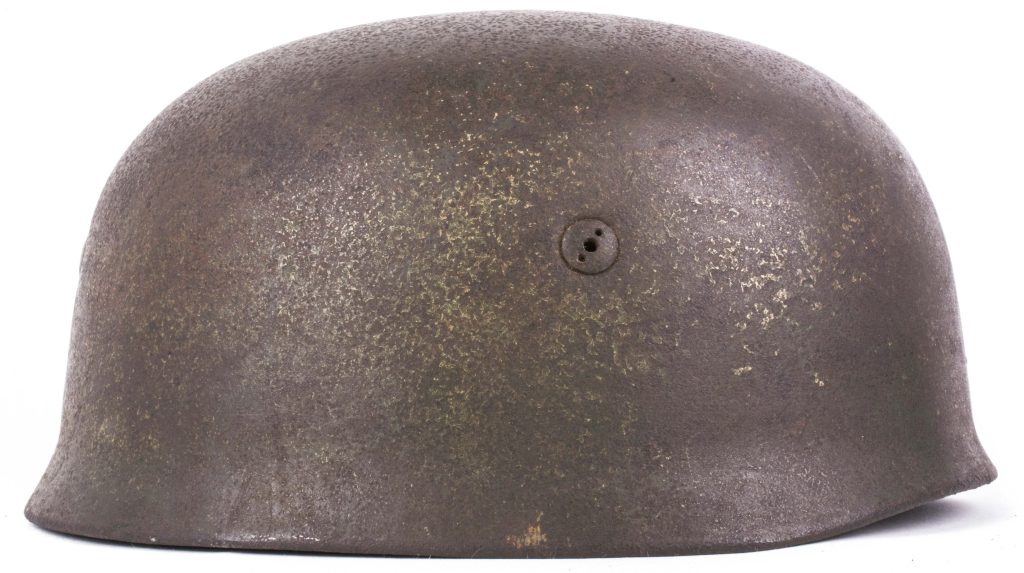

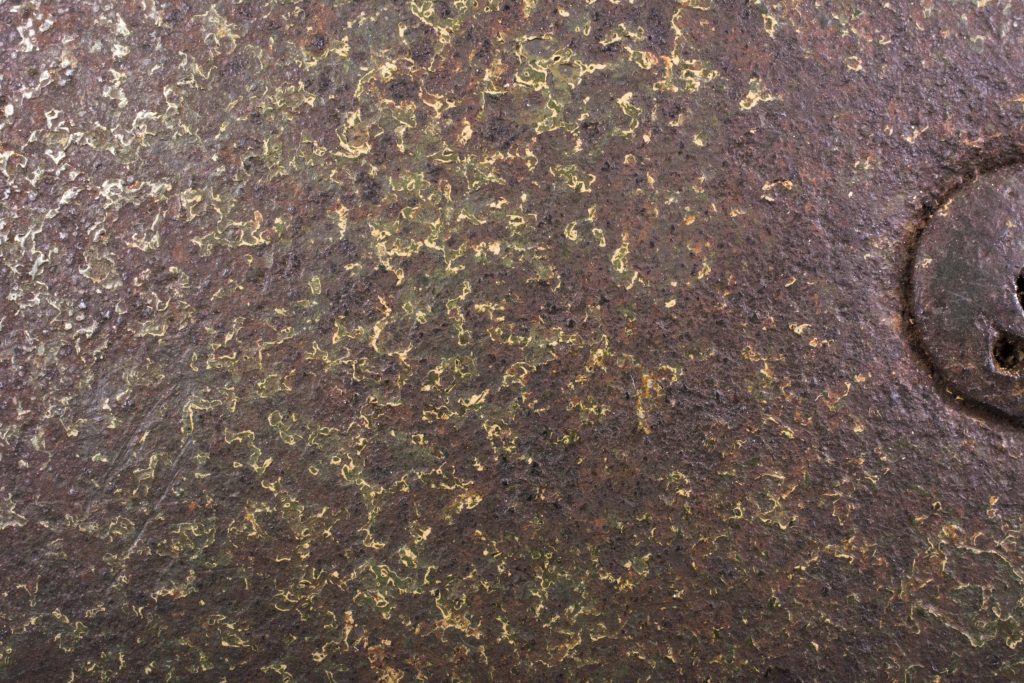
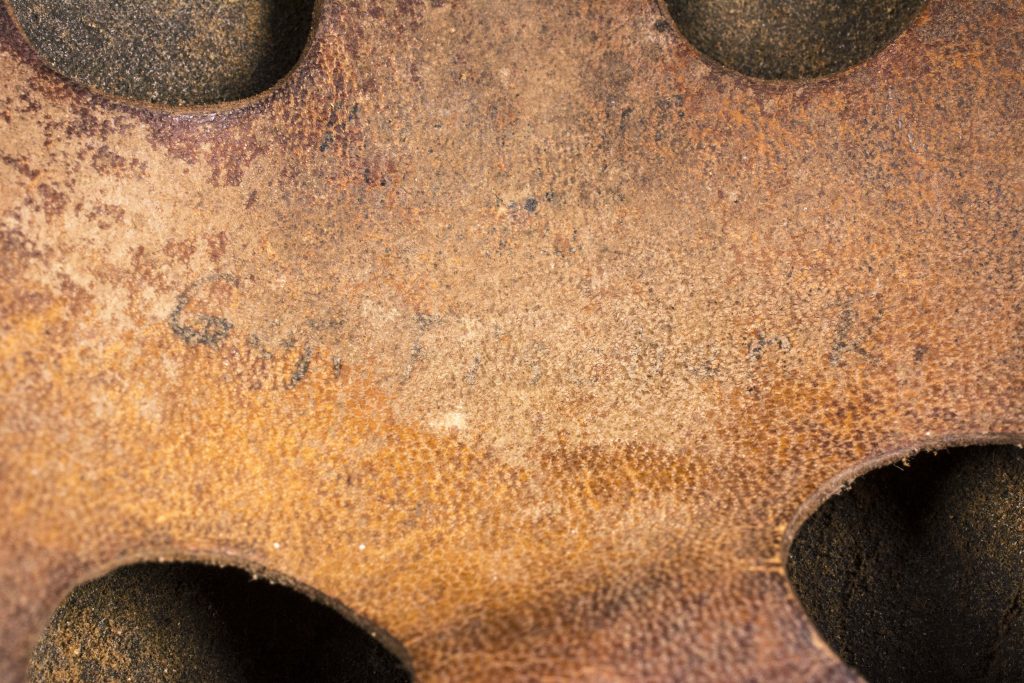
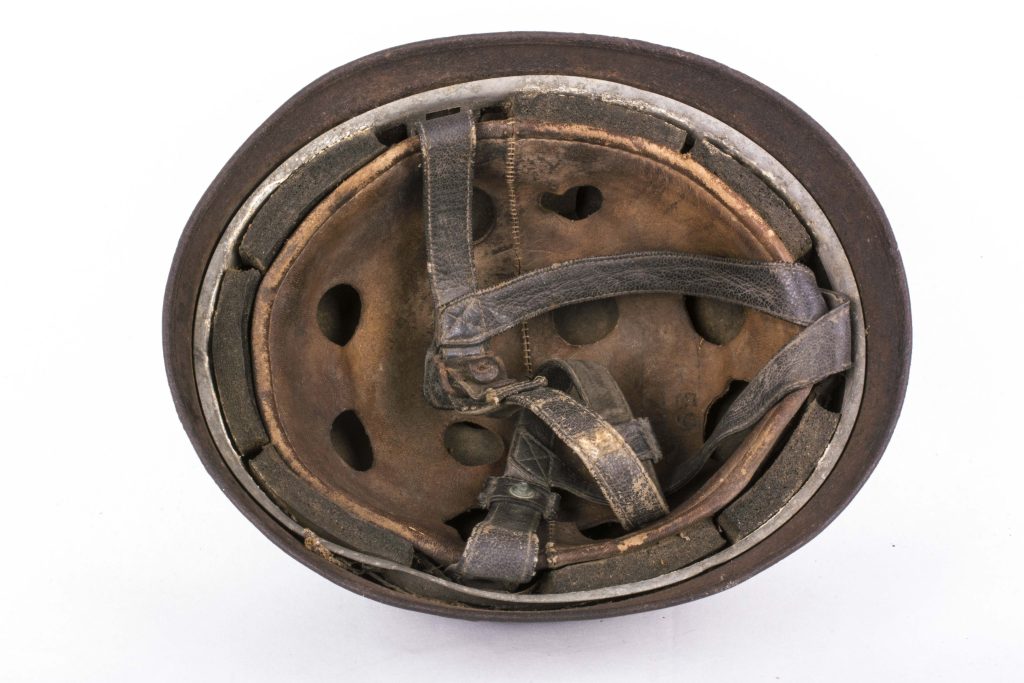
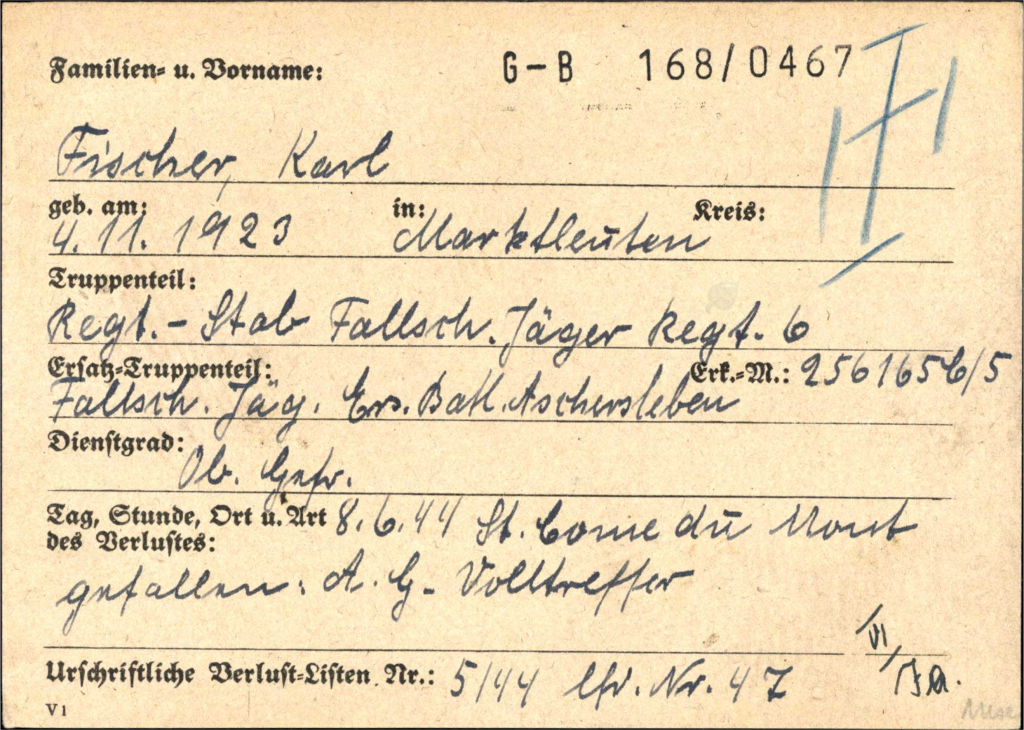
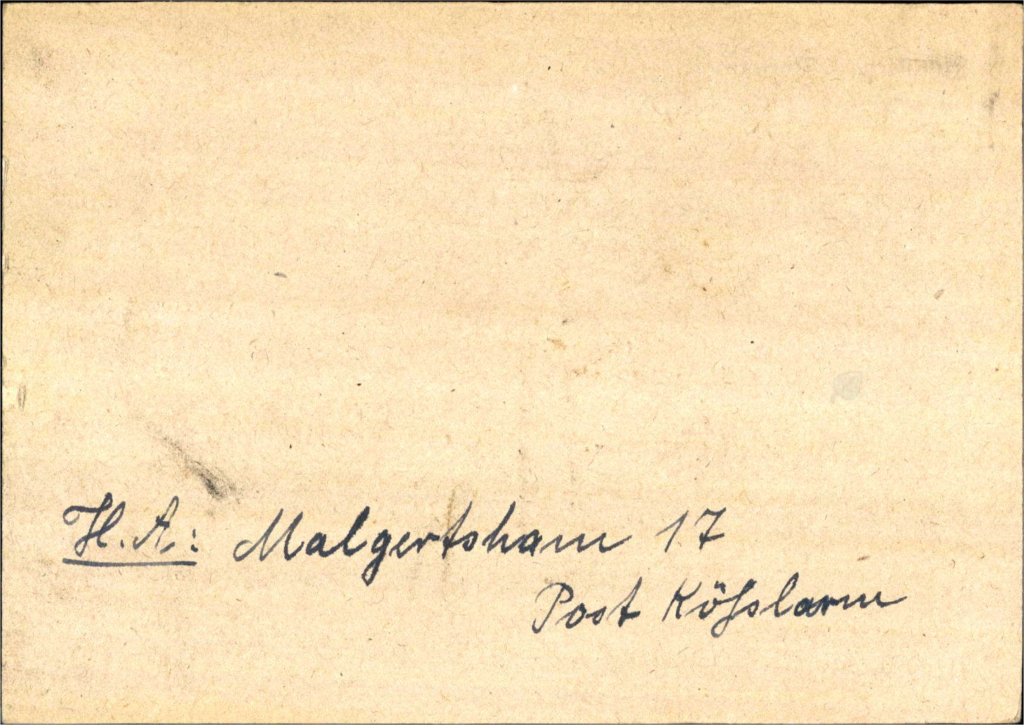
Goliath collection
This M38 paratrooper helmet also stayed behind in Normandy after the fightings and has been a part of the Goliath collection. It is named Gefr. Fischer K. There is a direct name link to a 21 year old Obergefreiter Karl Fischer who served with Regiments Stab Fallschirmjäger Regiment 6 and was killed in action on the 8th of June 1944 at Saint–Côme–du-Mont. He is buried on the gravesite in Orglandes, block 28, row 3, Grave 53.
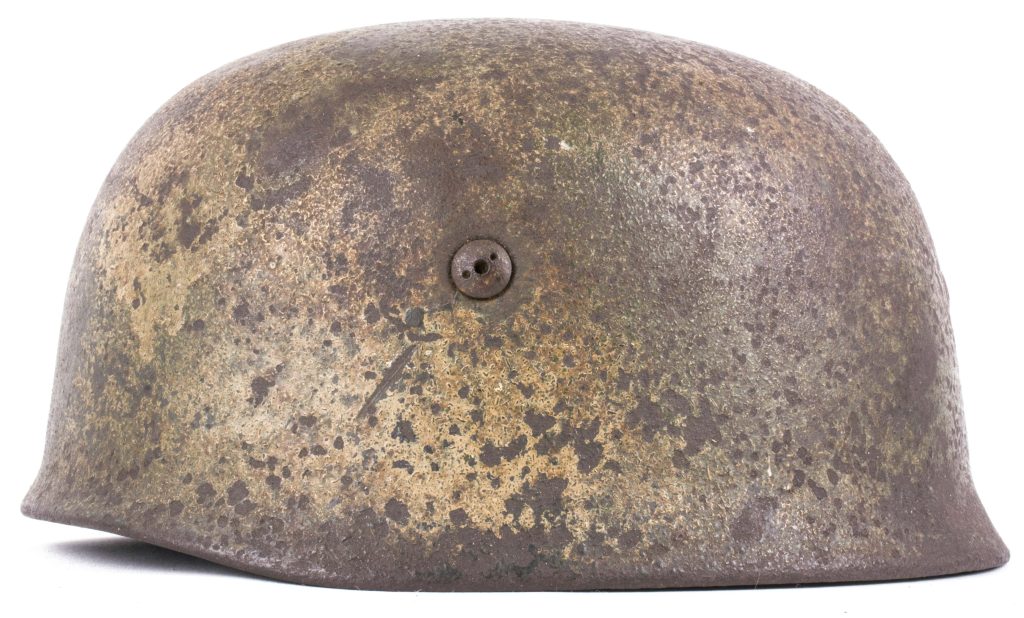
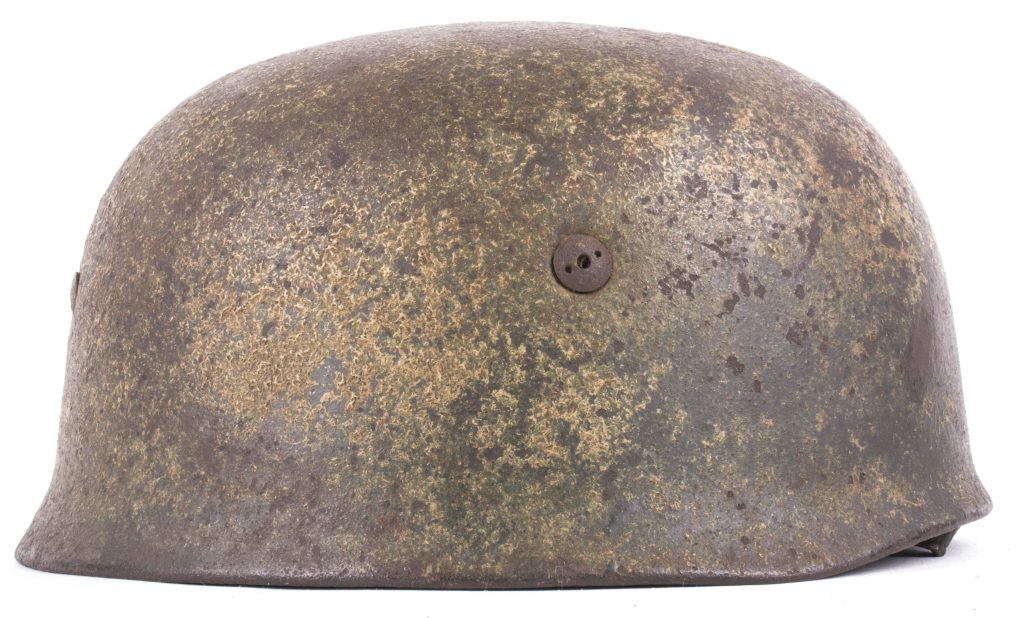
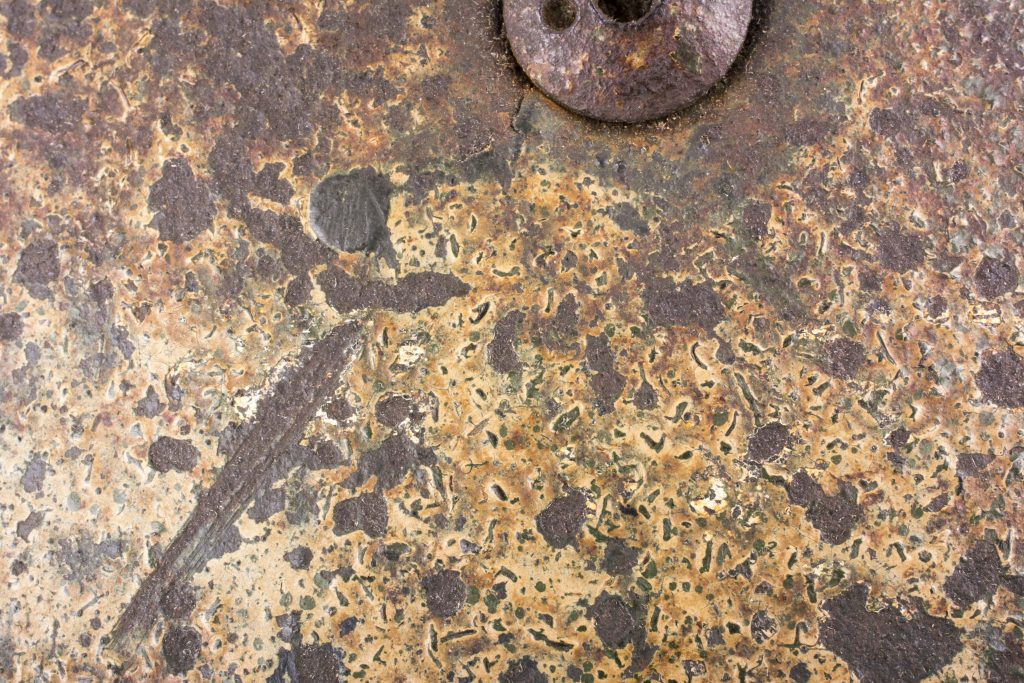

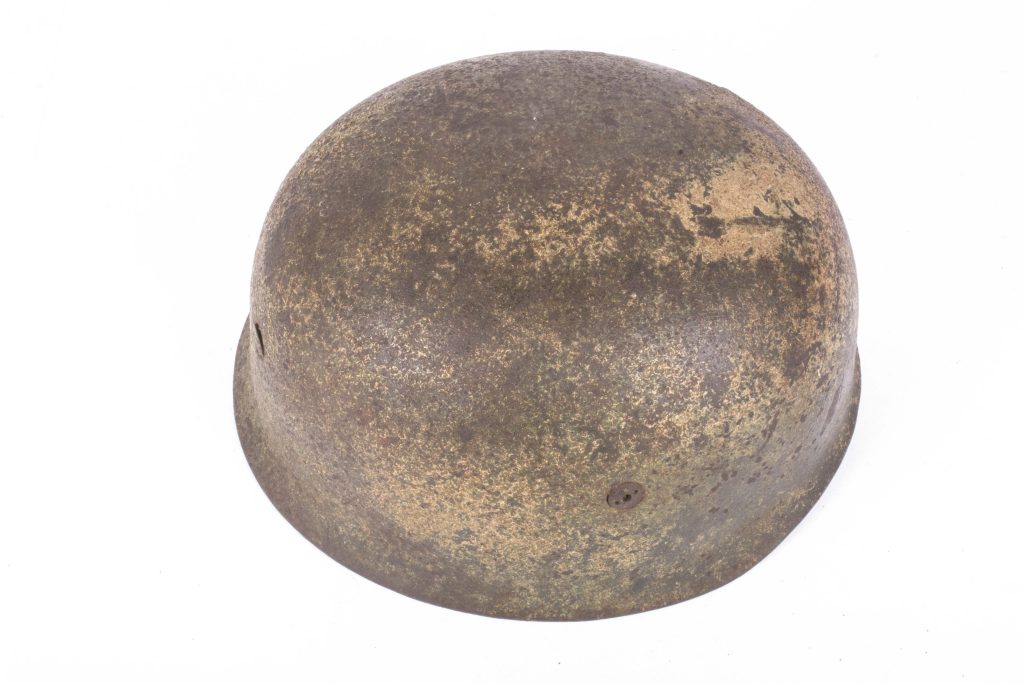
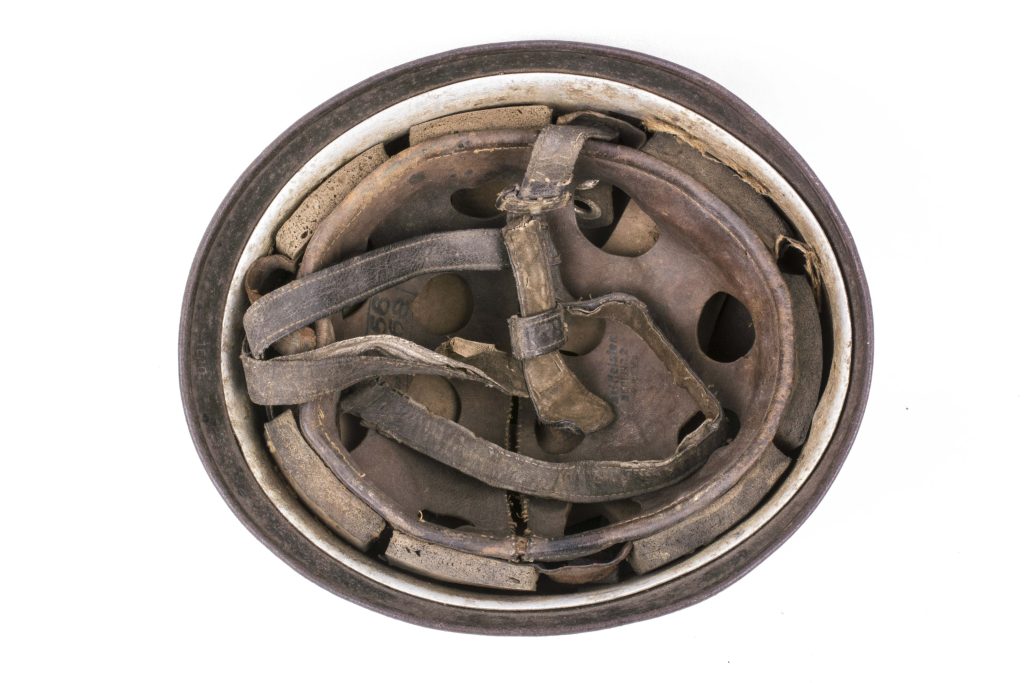
Another part of the Goliath collection is this M38 paratrooper helmet in the typical two-tone camouflage pattern. Allthough there is no readable name inside the helmet the liner looks slightly blood stained suggesting its former owner was wounded or killed in action too.
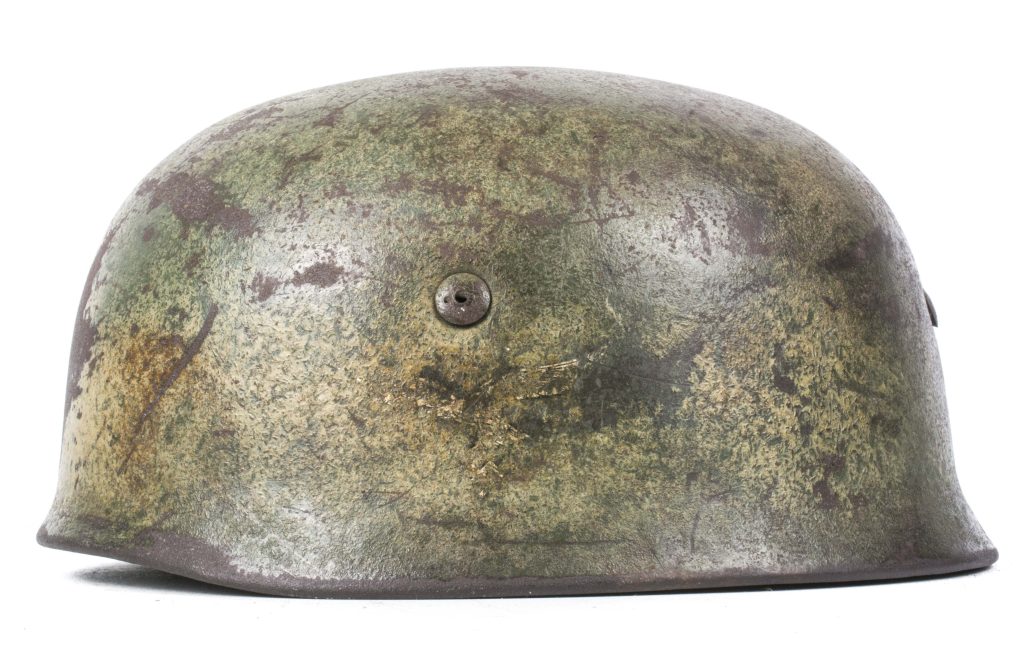

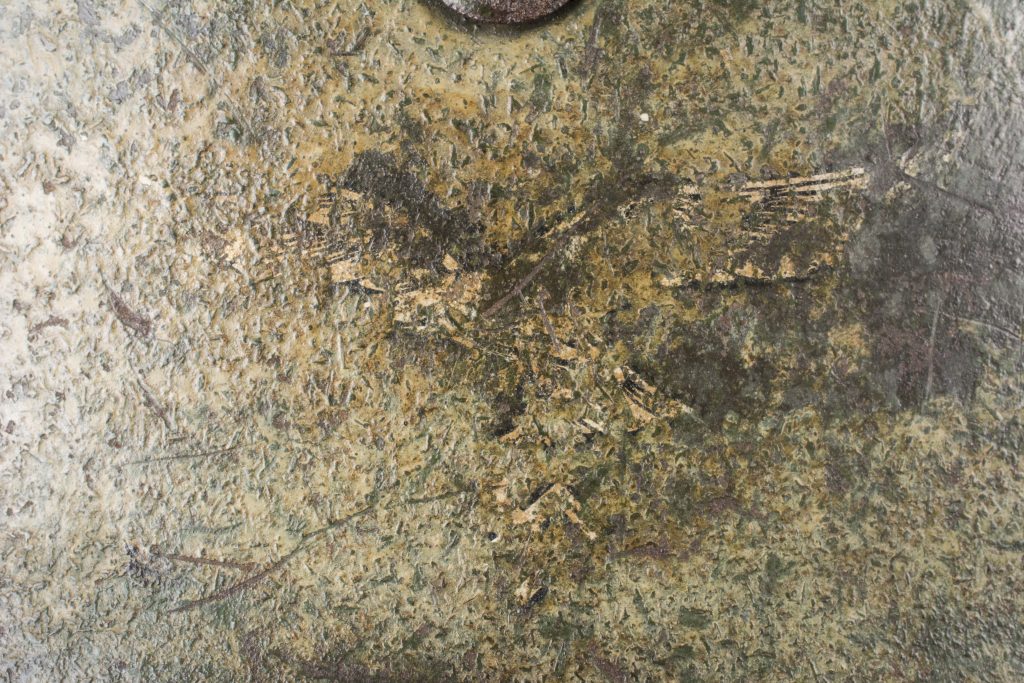
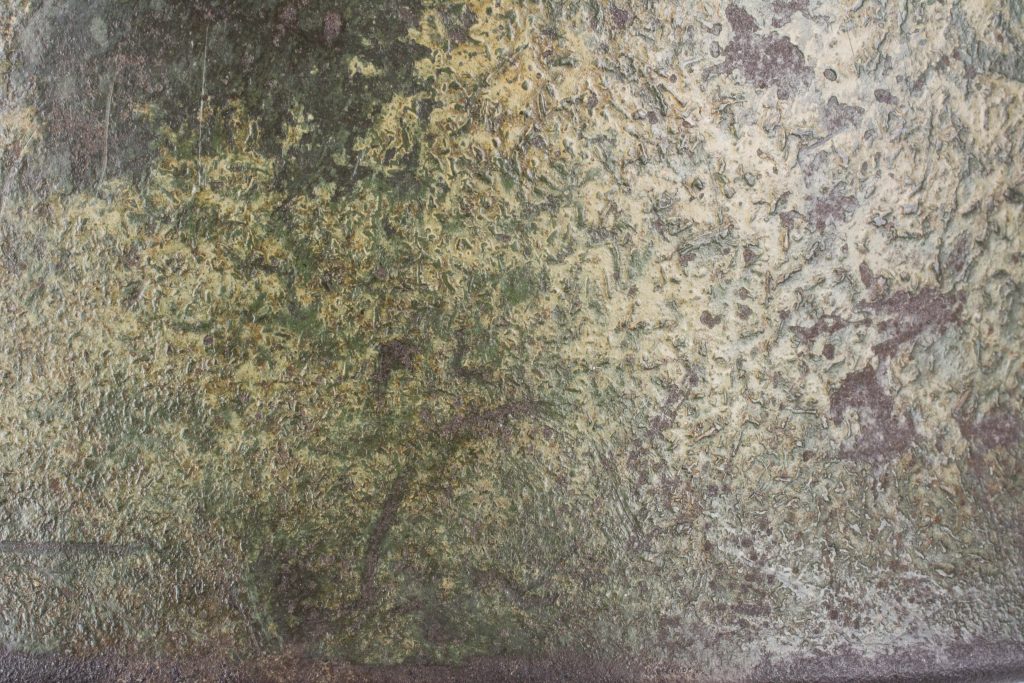
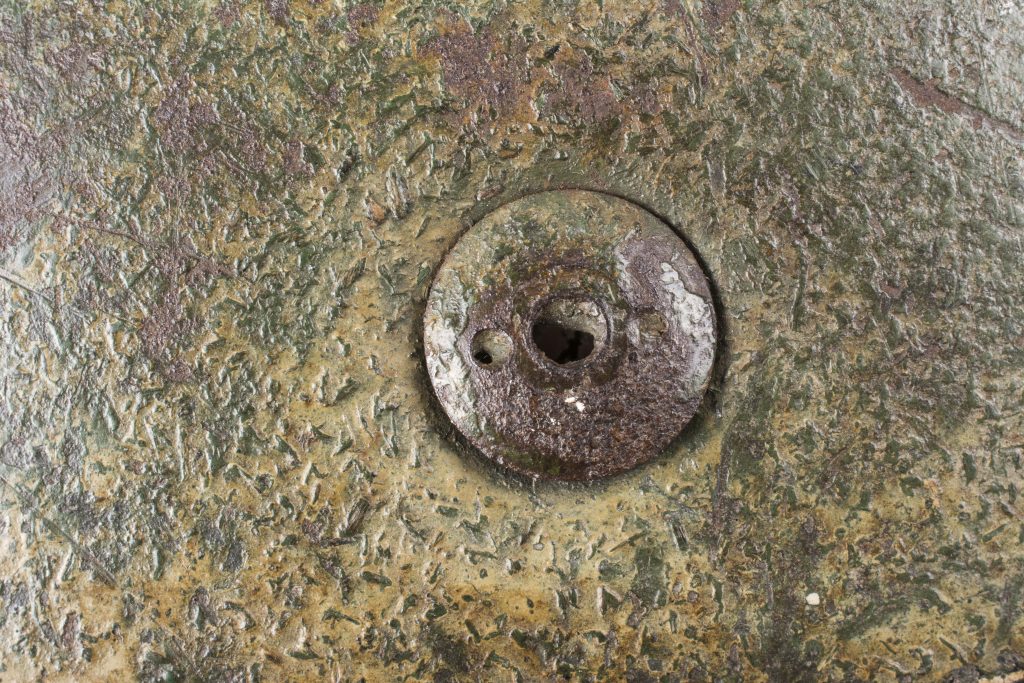
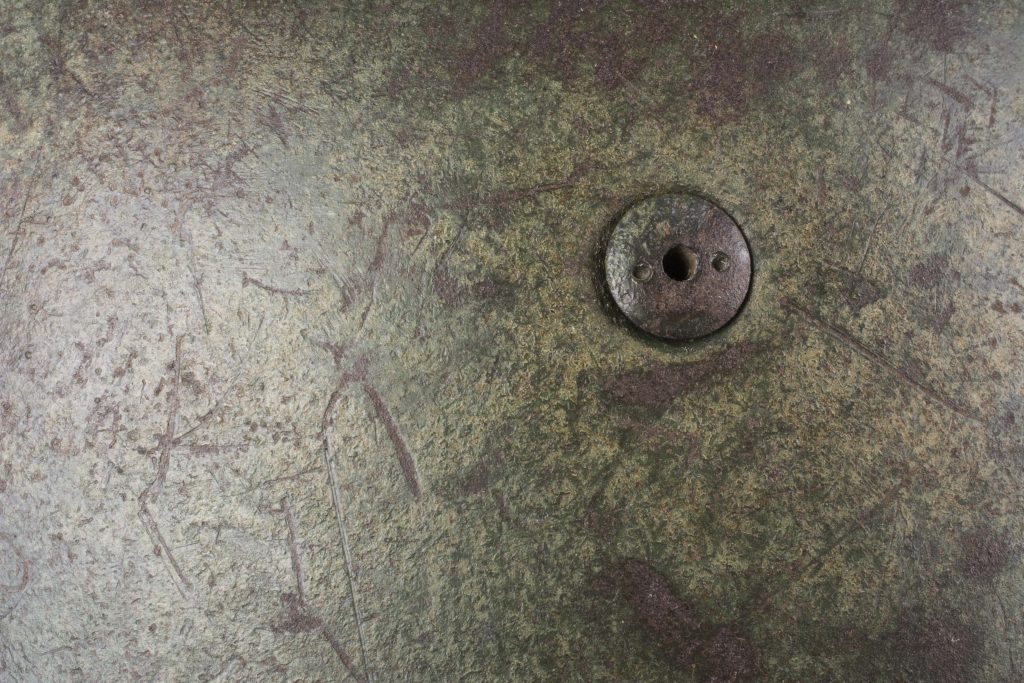
DH Collection
A m38 helmet in the tell tale FJR6 camouflage pattern. The helmet belonged to a member of 3. Kompanie FJR6 and was originally found around Bergen op Zoom.
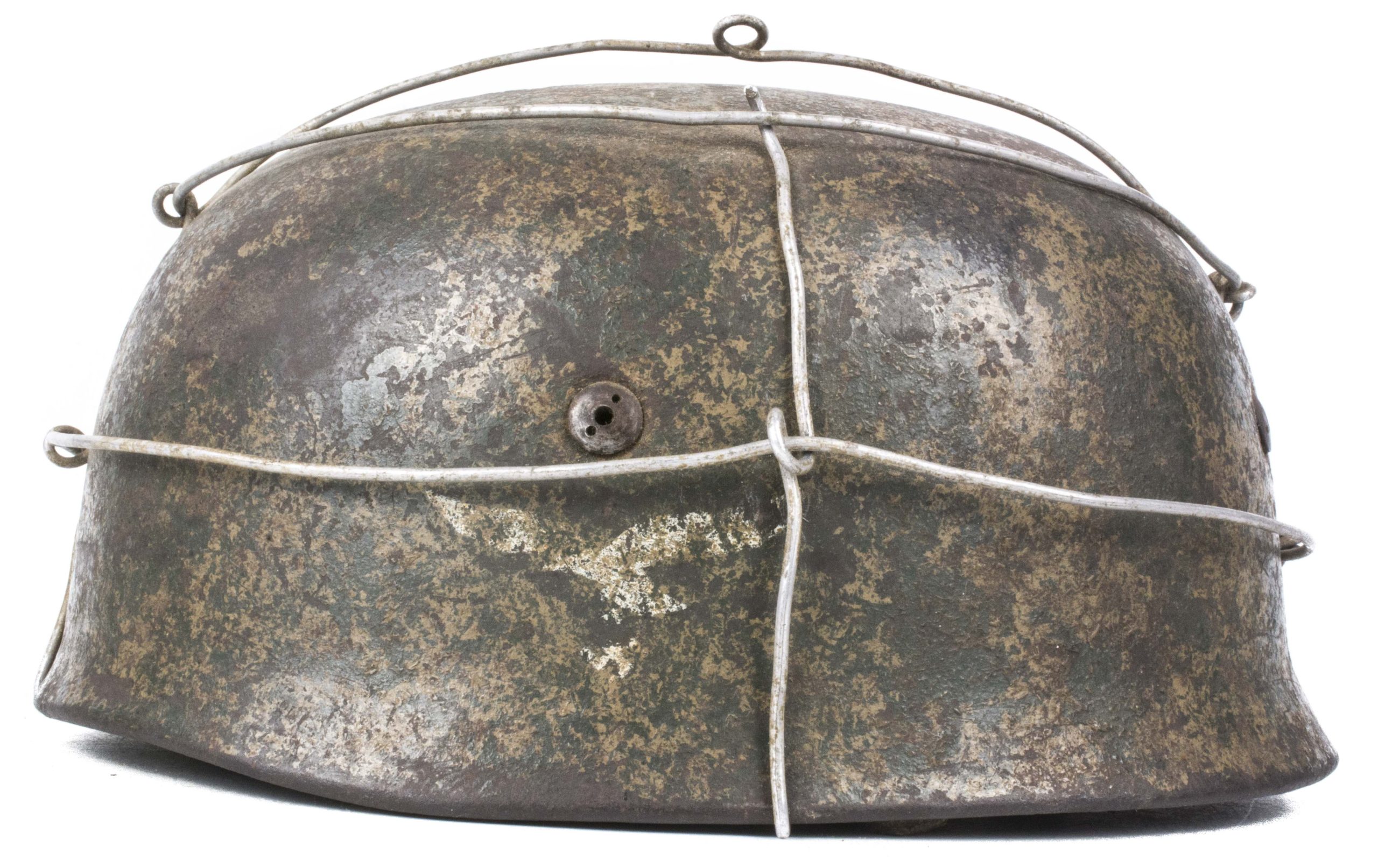
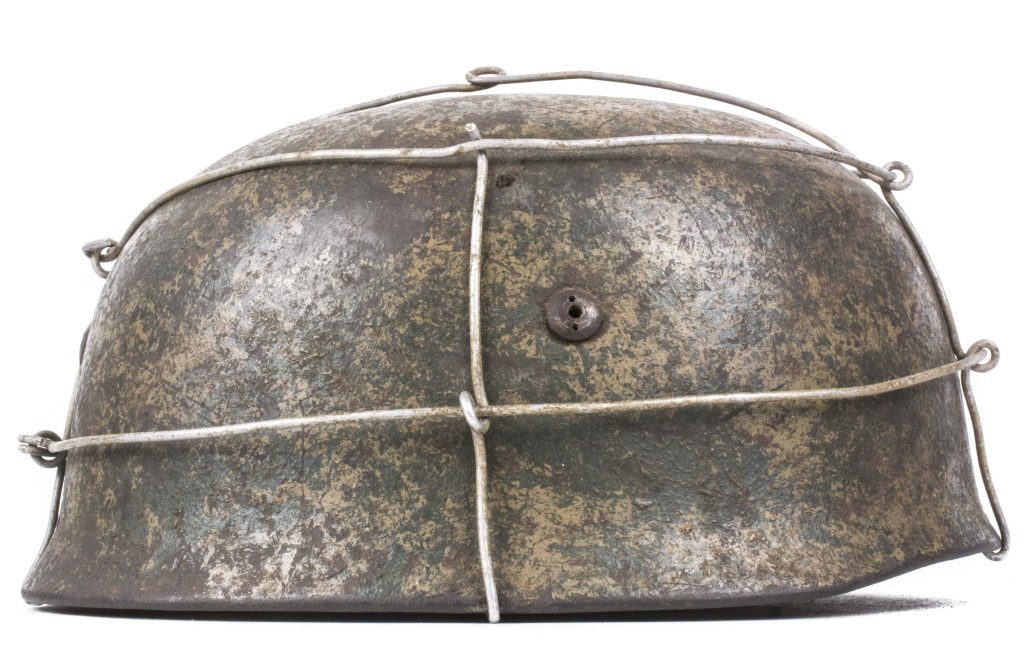
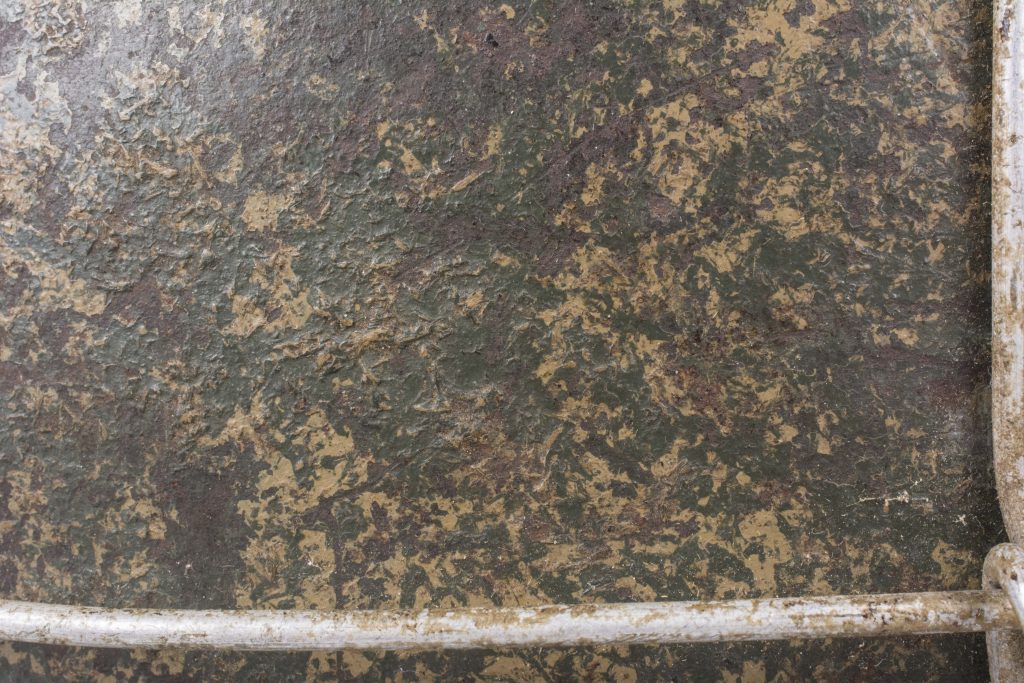
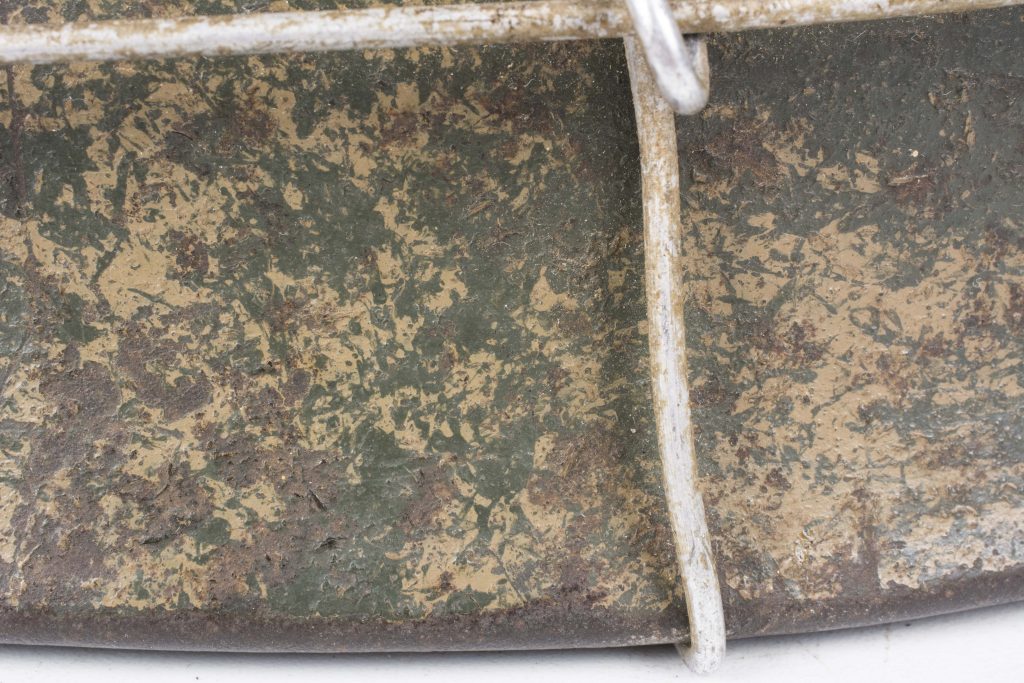
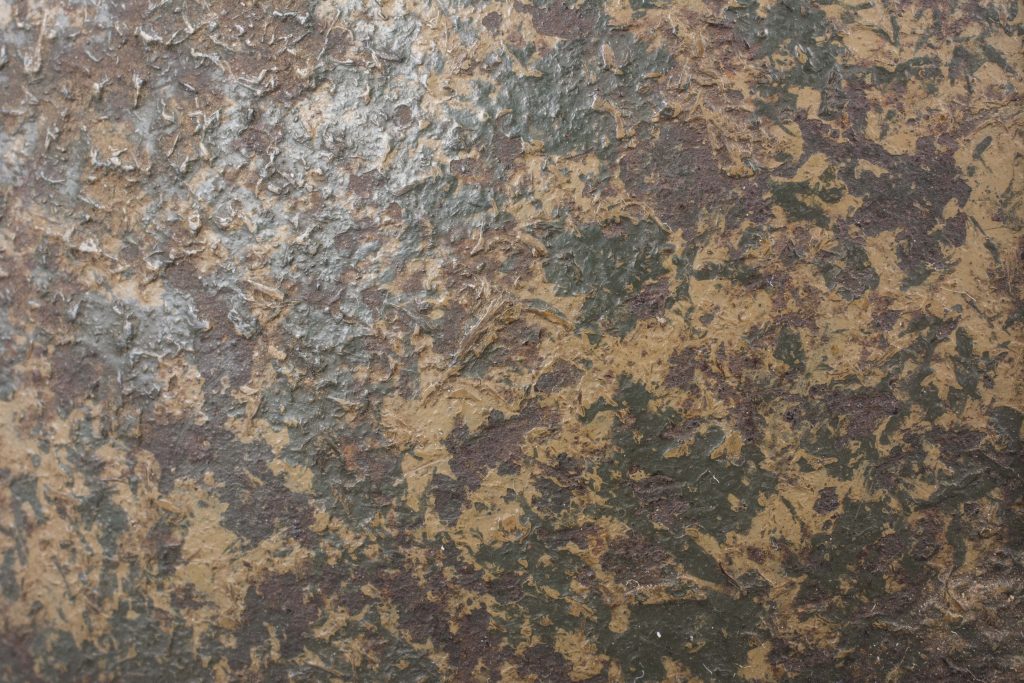
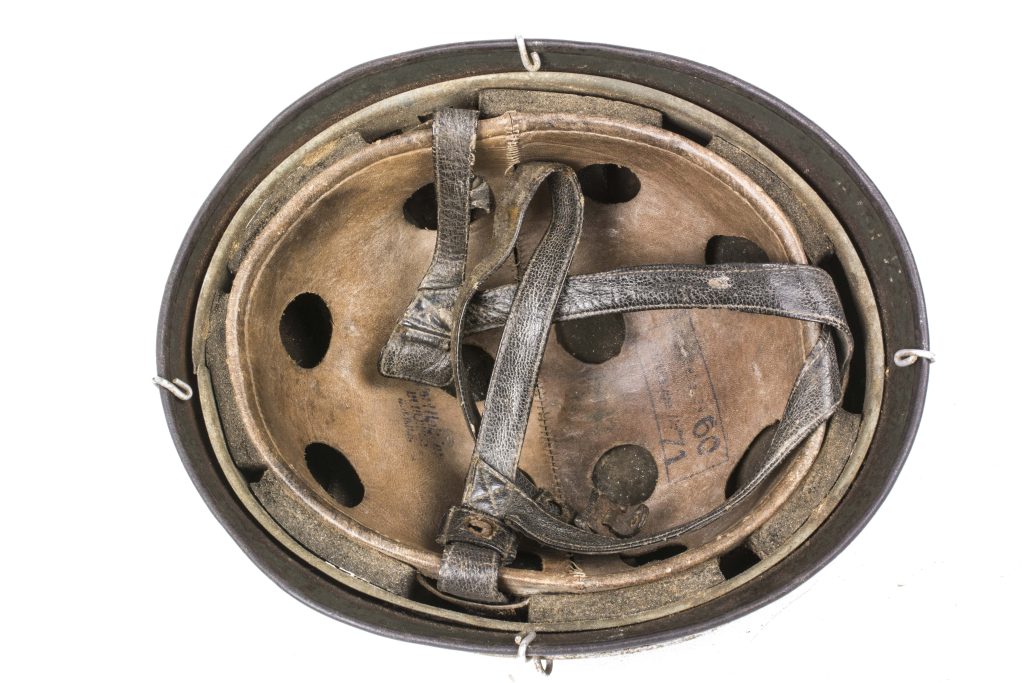
DH Collection – former Goliath collection
A m38 helmet in the tell tale FJR6 camouflage pattern with period applied aluminum bailing wire. The helmet was originally found in Flers which is south of Normandy.

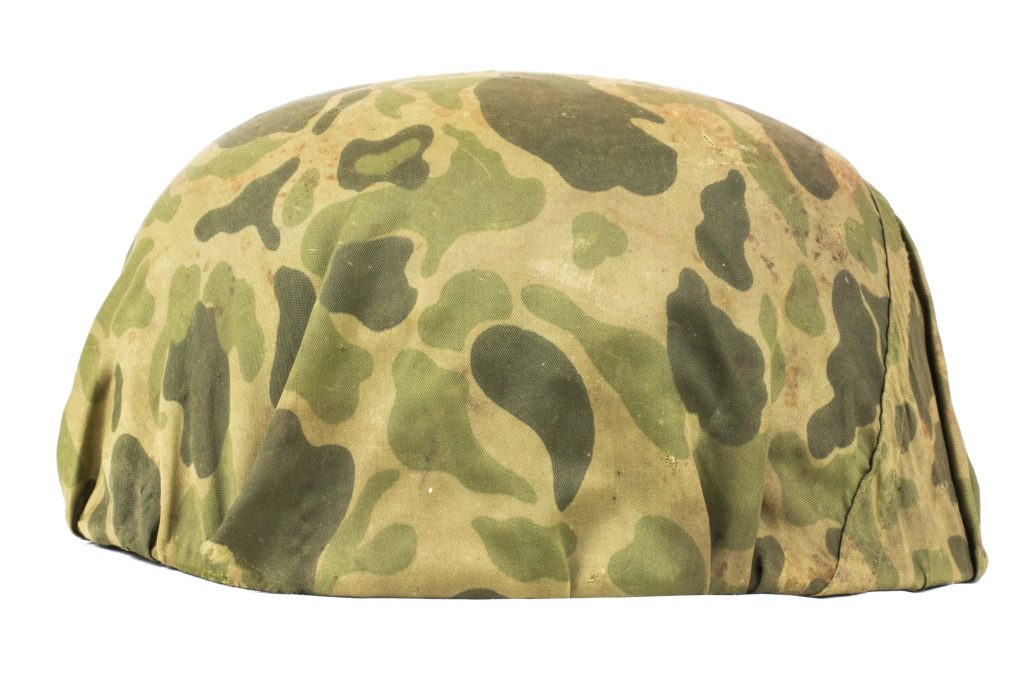
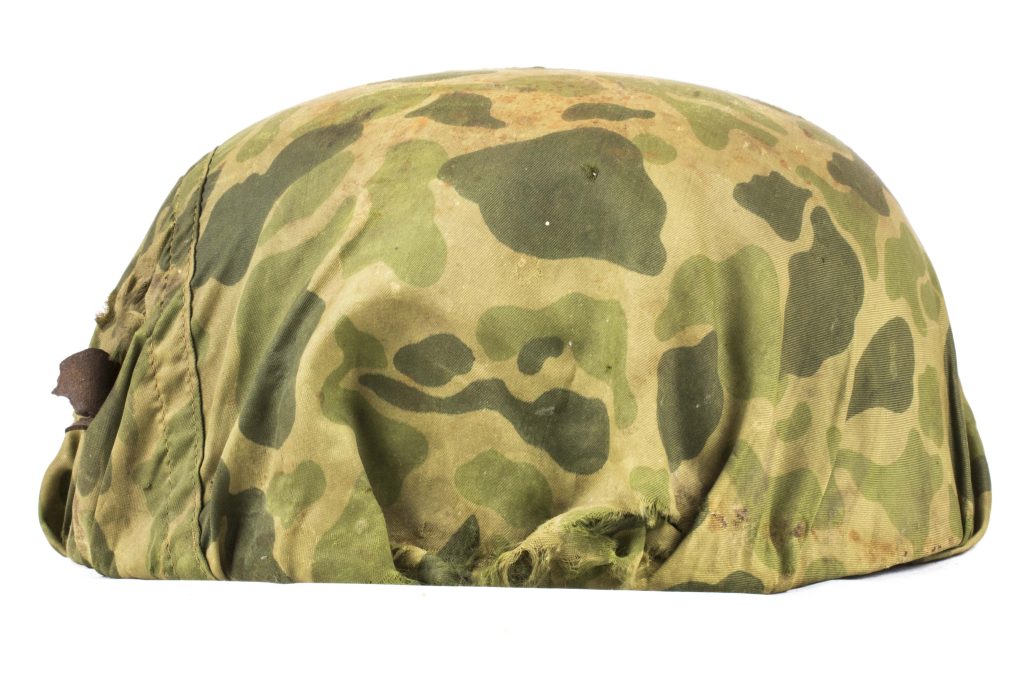
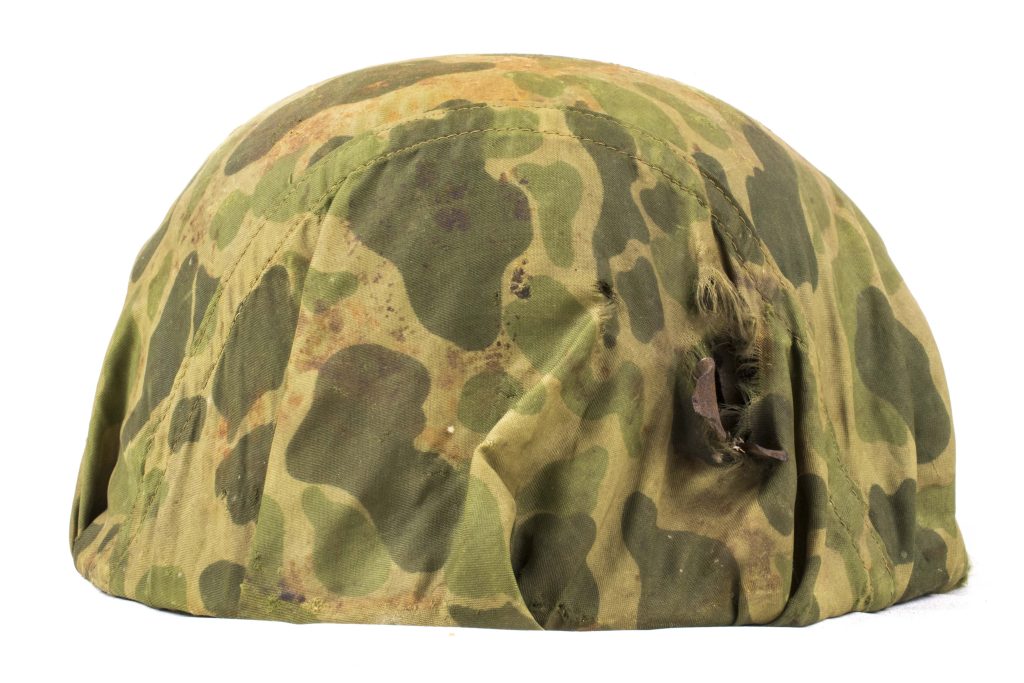

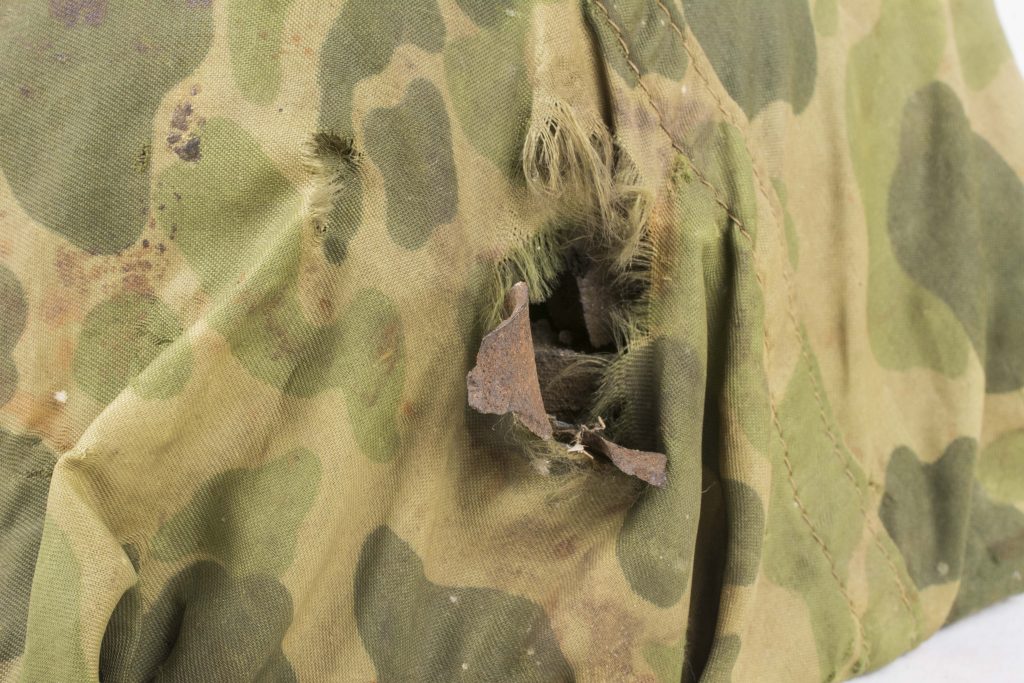
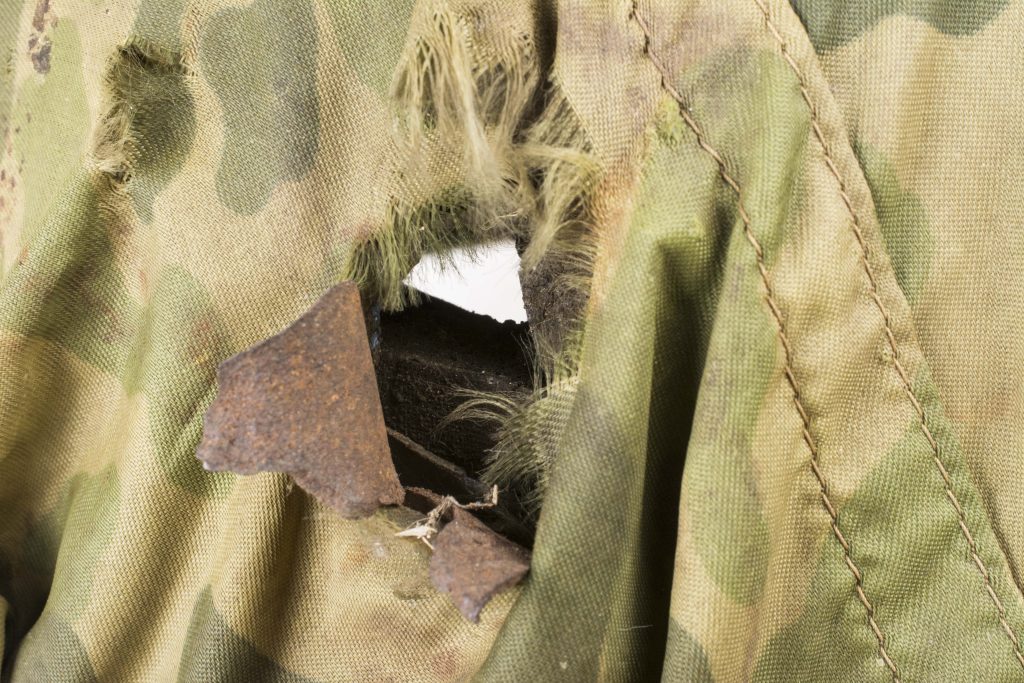
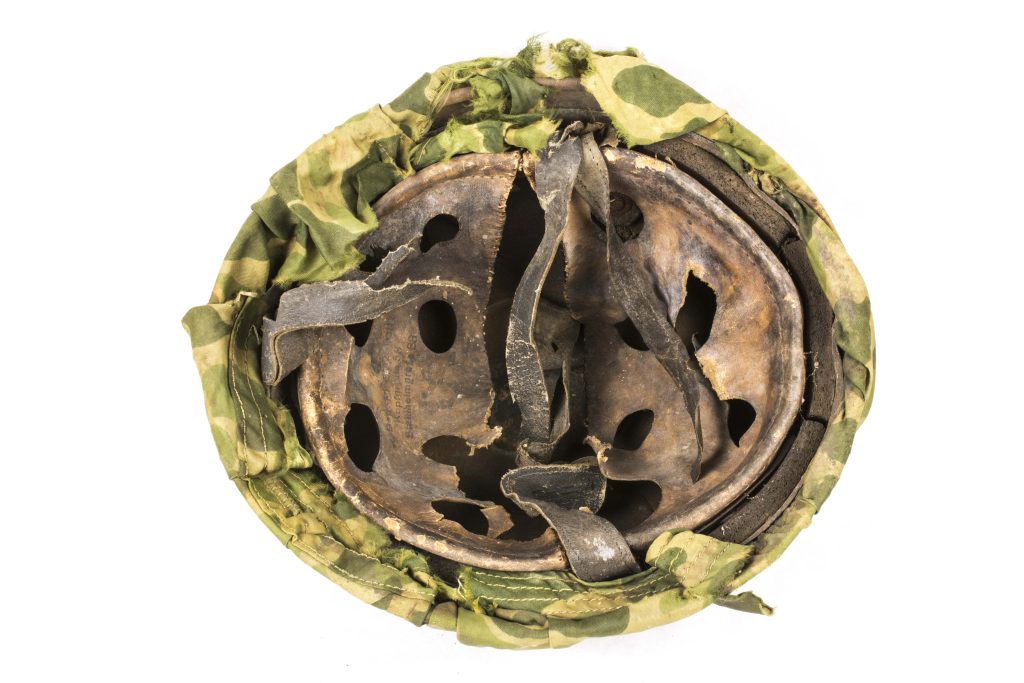
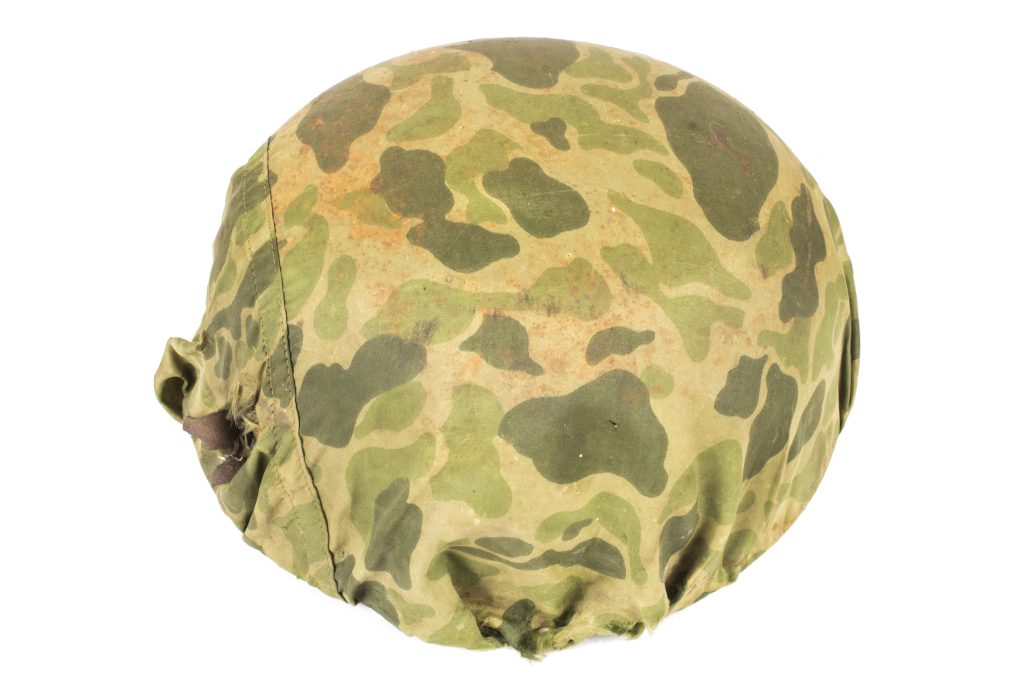
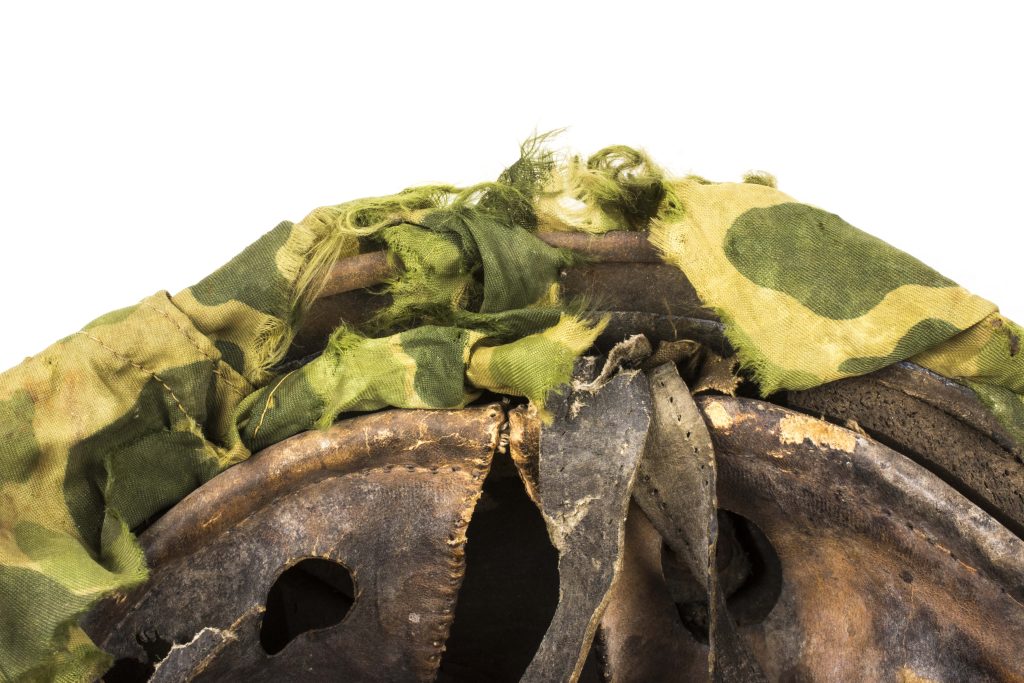
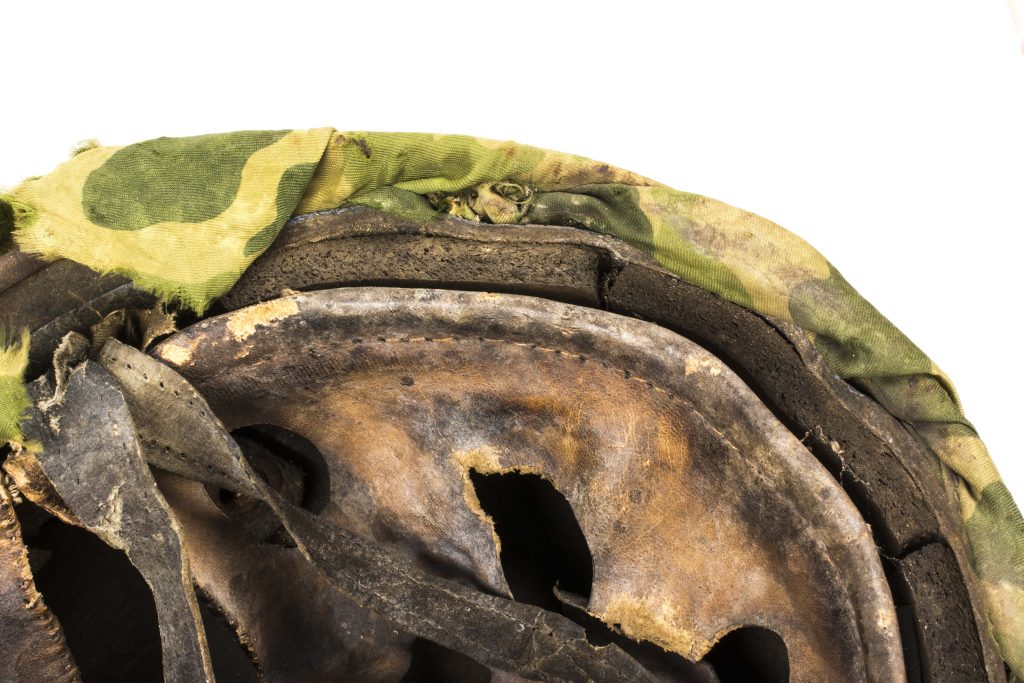
Private collection
Another most interesting example is this late war M38 no decal patatrooper helmet with slotted aluminum bolts. Even if it’s not camouflaged in the typical two-tone pattern I decided to include it into the article. In the first days after the invasion of Normandy, after the first encounters with the 101st Airborne left behind many discarded parachutes. This camouflaged material was used by both sides but only the Germans used this camouflaged material to adapt as helmet covers. There are numerous photographs of these adapted helmet covers in use with members of FJR6 and there are several ground dug examples with the parachute material still originally attatched. Yet this is as far as I know, the only example which still retains it to this day in as found, non relic condition. The helmet bears no name or distinctive camouflage pattern. Yet it was recovered near the Grootdonk farm or the Vlagheide in Eerde. This small village was fought over by the 501st Parachute Infantry Regiment and FJR6. Machinegunner Carl Beck from H comp 501 PIR 101st Airborne Division recalls seeing Fallschirmjäger wearing these covers and saying the US paratroopers never wore these on their helmets so we always immediately opened fire when we saw these. The helmet was found in the Market Garden area but it is unclear wether is also a veteran of the fightings in Normandy. The helmet has a bullet hole in the rear of the helmet indicating the soldier that wore this was shot in the face with the bullet exiting through the shell. The liner is blood soaked and badly damaged. Sadly there is no name inside the helmet to do further research but presuming the nature of the damage on the helmet we presume he was killed in action.

Above; Fallschirmjäger Erwin Kreidemann served in FJR6. Whilst his Gnome Rhone AX II motorcycle is camouflaged in the typical camouflage pattern, his helmet is painted in a distinctive other pattern. This is so far one of the only photographic proofs of FJR6 troops serving with different camouflage patterns I could find. Therefor my quest started to finding other helmets which even without the typical wood chip camouflage pattern; could be attributed to FJR6.
Below are three helmets featuring a camouflage pattern without wood chips mixed into the paint. While some may argue that this is not a “typical” pattern for FJR6, these green and tan colors were used extensively for equipment pieces without the addition of wood chips. In my opinion, this is a variant that was possibly still used by FJR6, as the colours and pattern match exactly with ammunition cases shown later in this article.
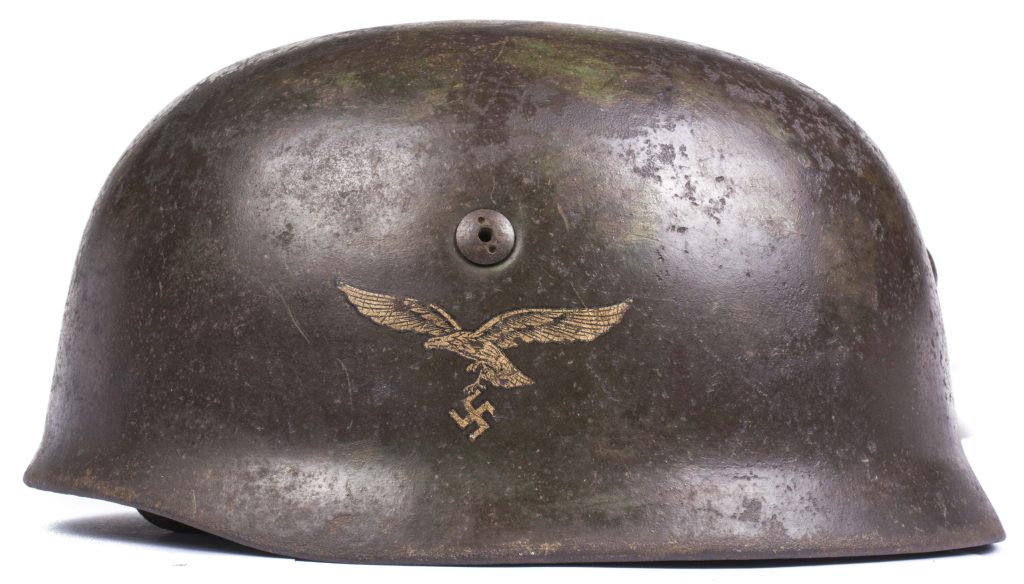


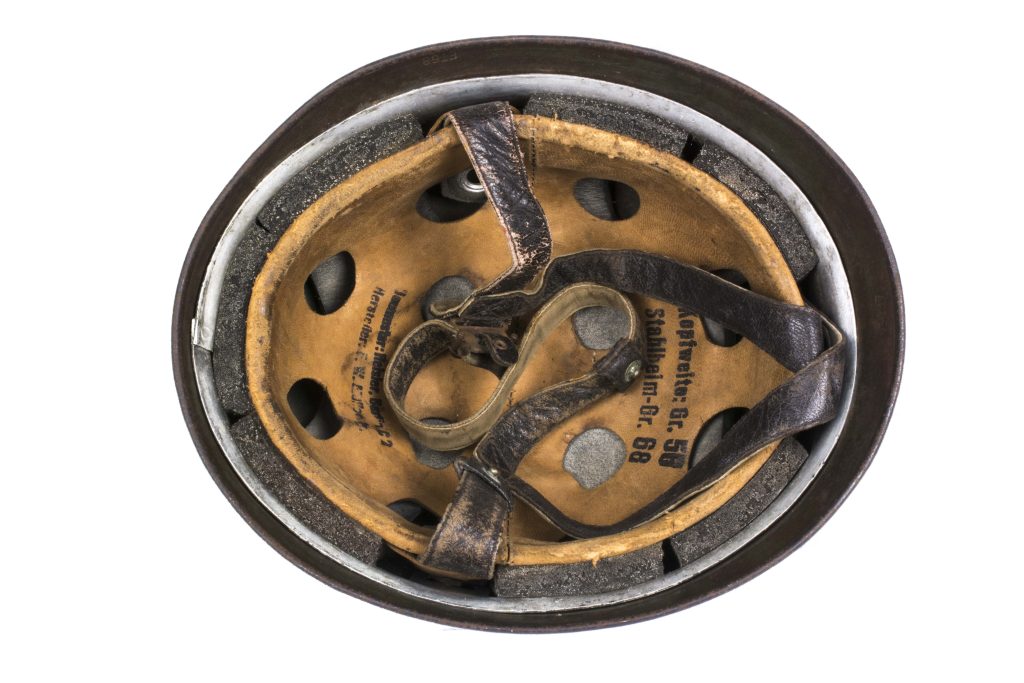

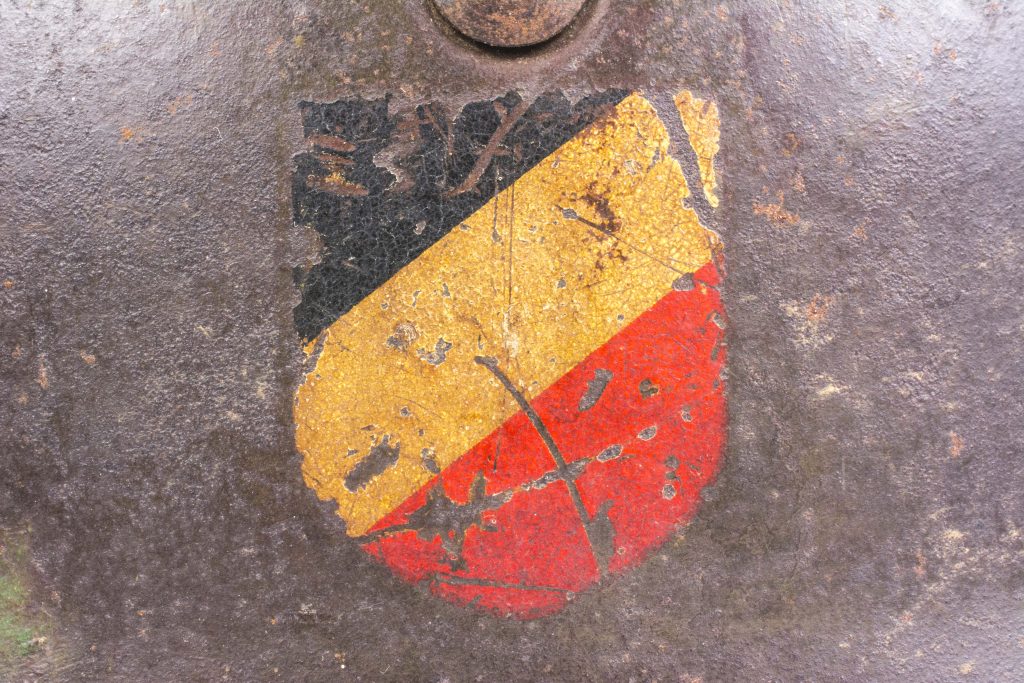
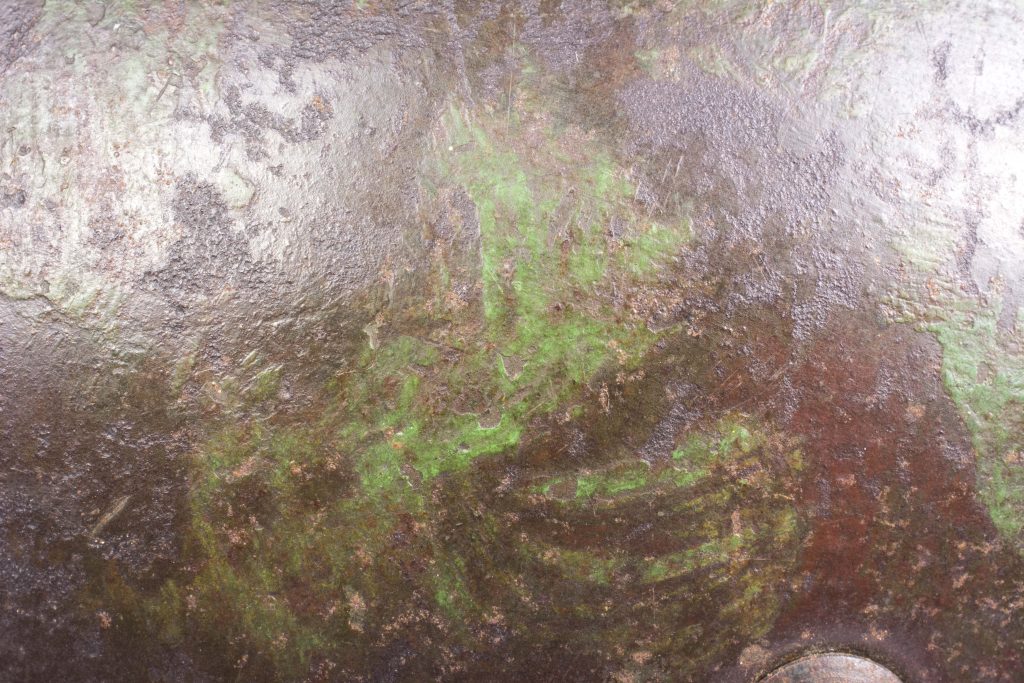
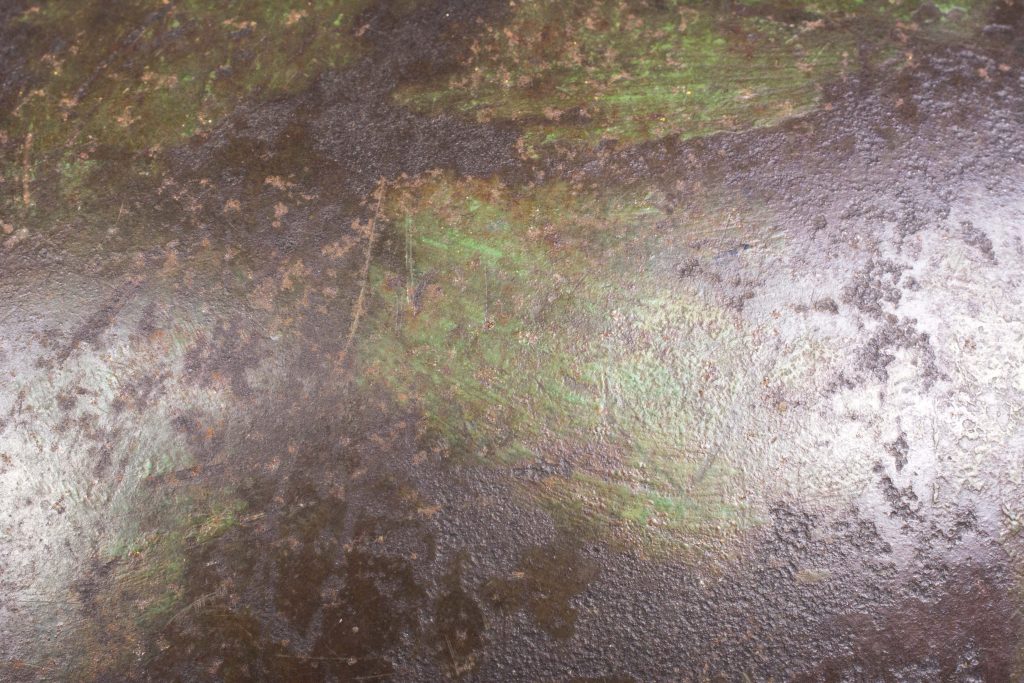
Normandy collection
An interesting camouflaged M38 paratrooper helmet. A beautiful, pre war double decal example with a light brushed camouflage overpaint in a light green colour. The helmet was originally found in Normandy but there is no name or comparable pattern to assign it to a certain unit. Although it is not camouflaged in the typical FJR6 pattern; looking at the units photos taken at Cologne Wahn we observe at least one double decal M38 helmet in a sea of two-tone camouflage helmets. This helmet was found in a farm between Coutances and Carentan which is right in the FJR6 area of operations.
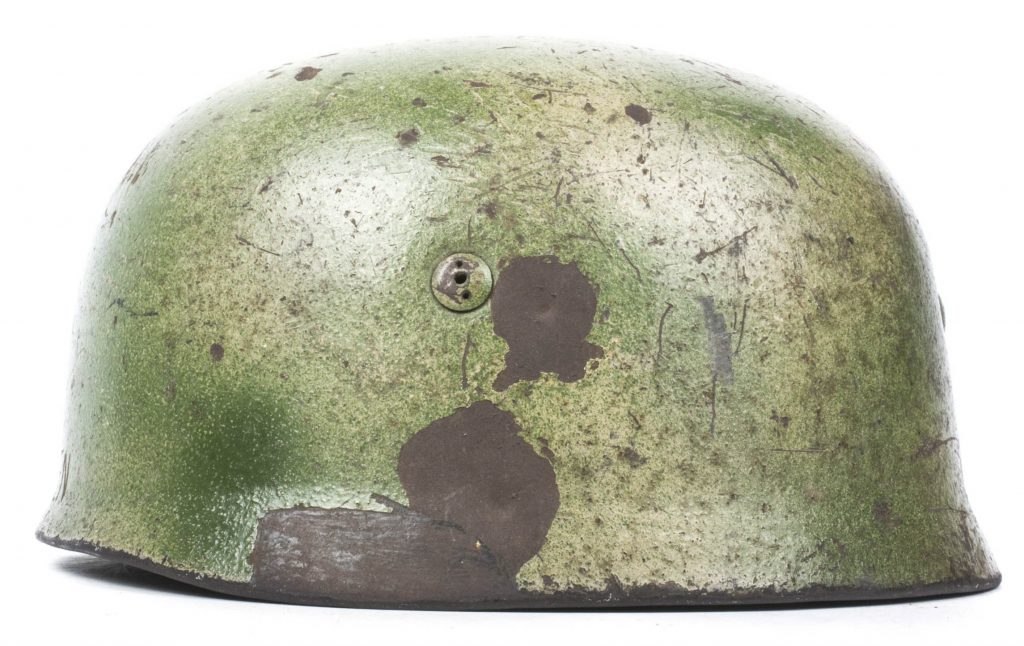
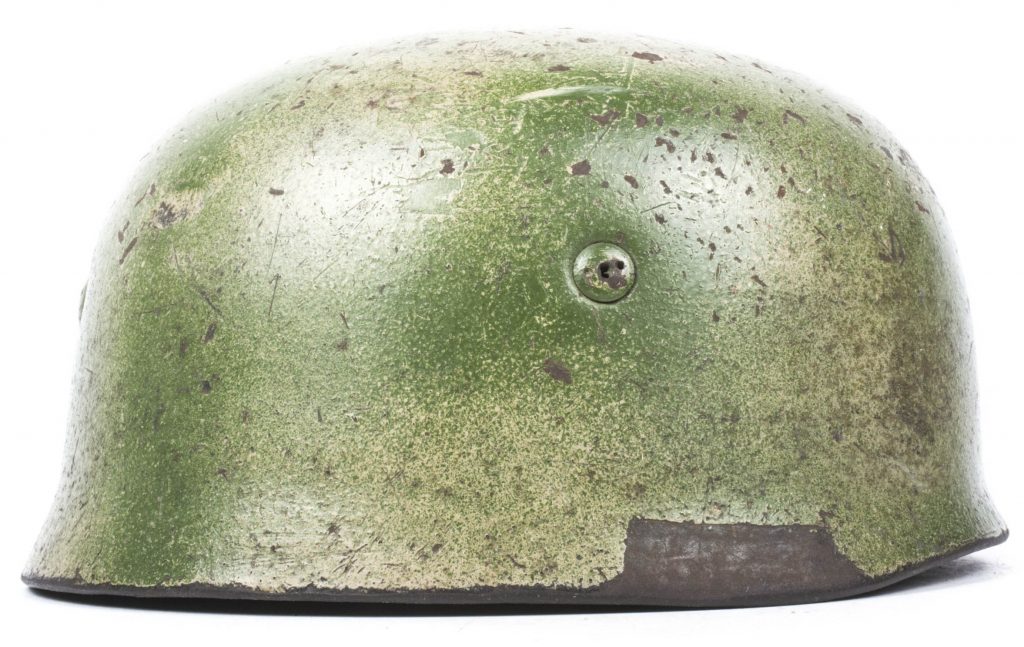
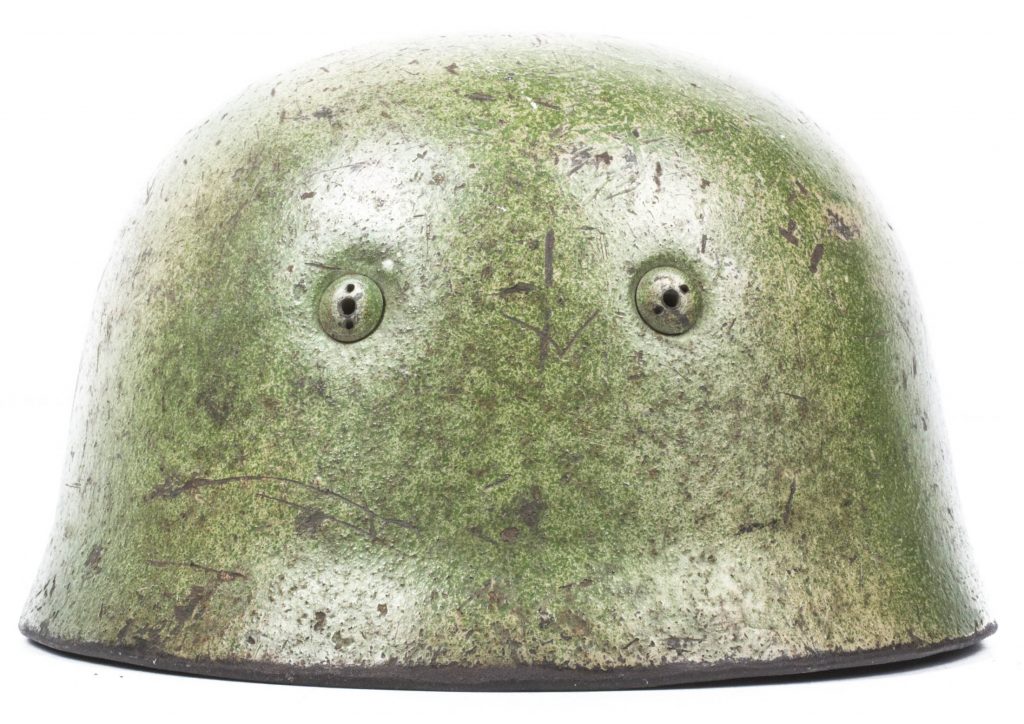
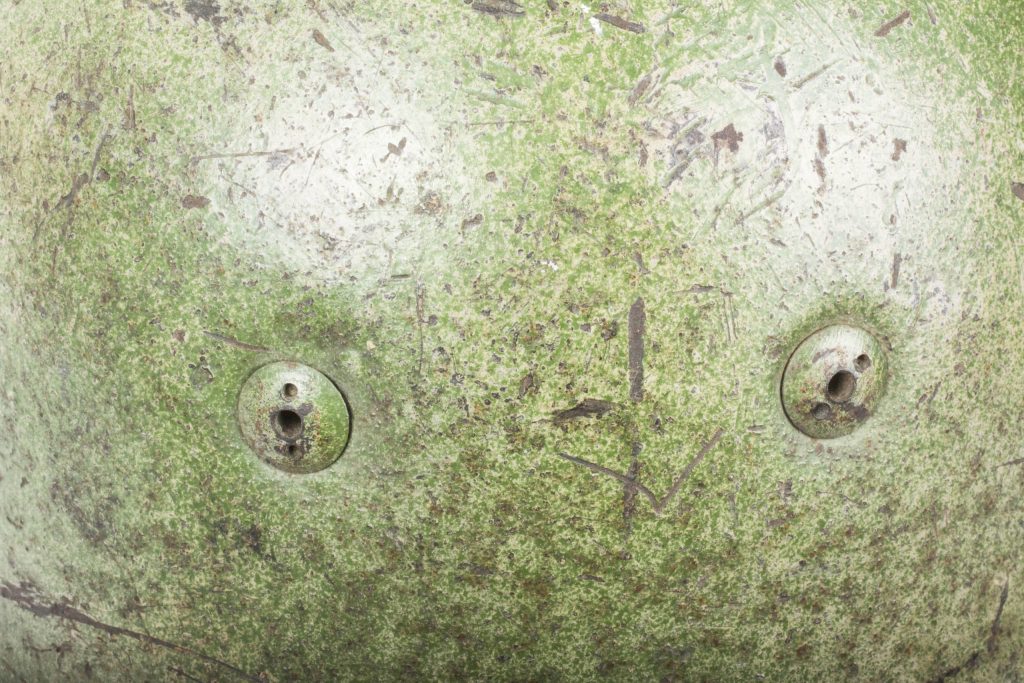
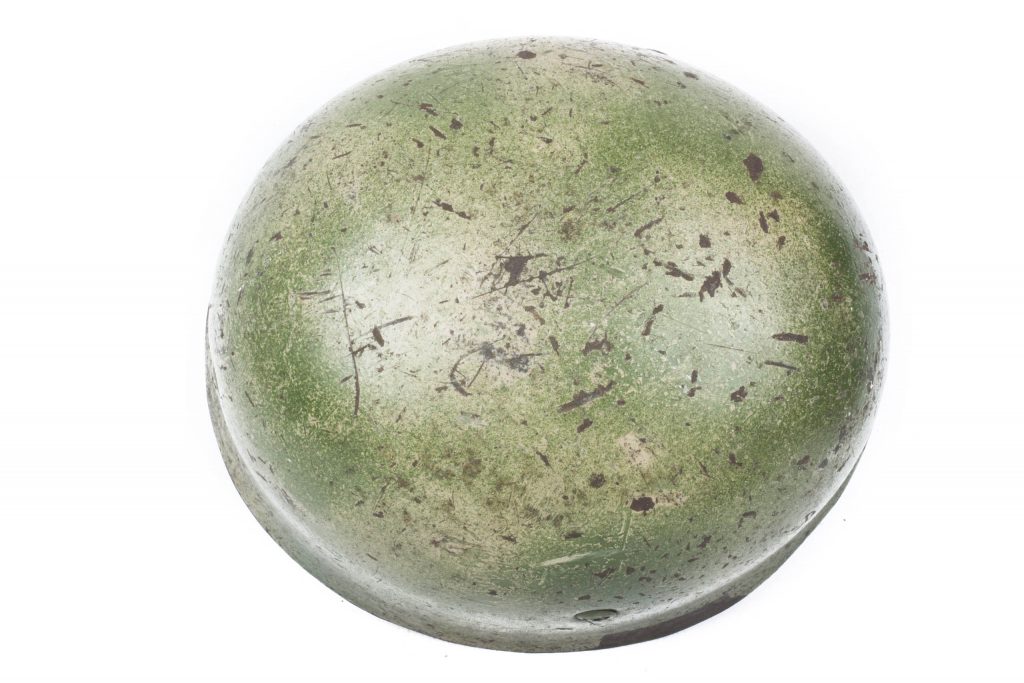
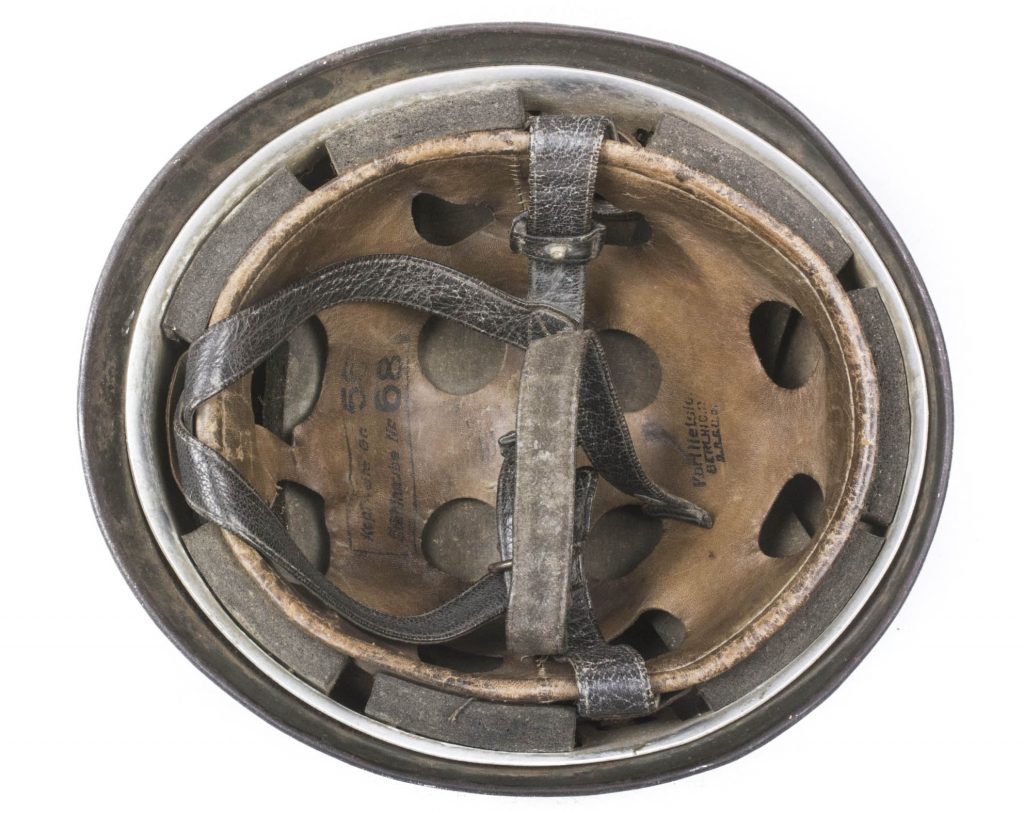
Stunning and textbook M38 paratrooper or Fallschirmjäger helmet in the tell-tale sawdust two-tone camouflage pattern as used with the 6. Falschirmjäger Regiment. The helmet was factory finished in feldgrau with a single decal which can still be seen underneath the paint. This helmet shows no wood chips in the paint yet it is a exact colour and pattern match to one of the MG ammo boxes we can observe below.
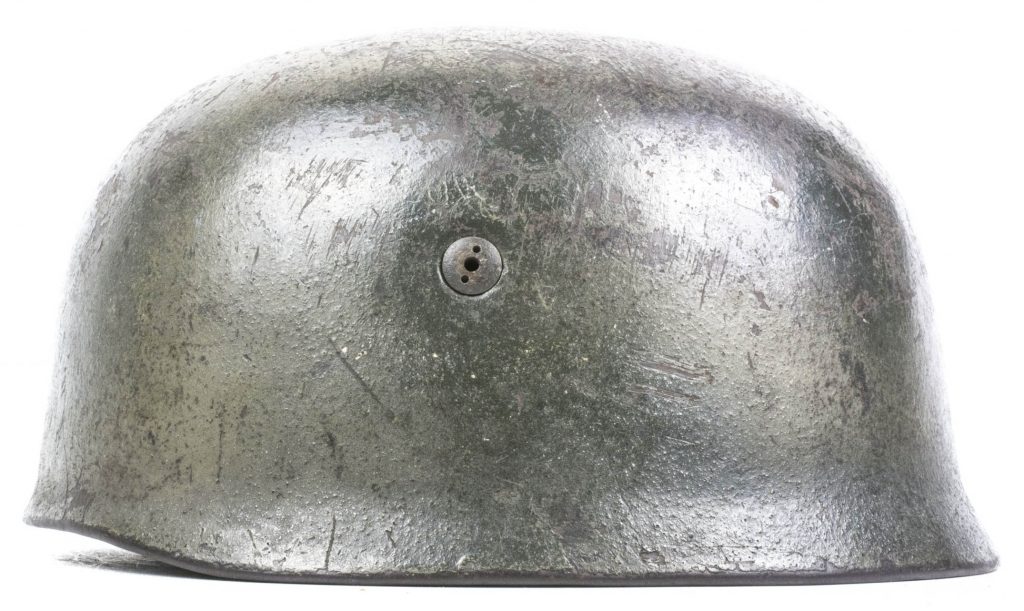
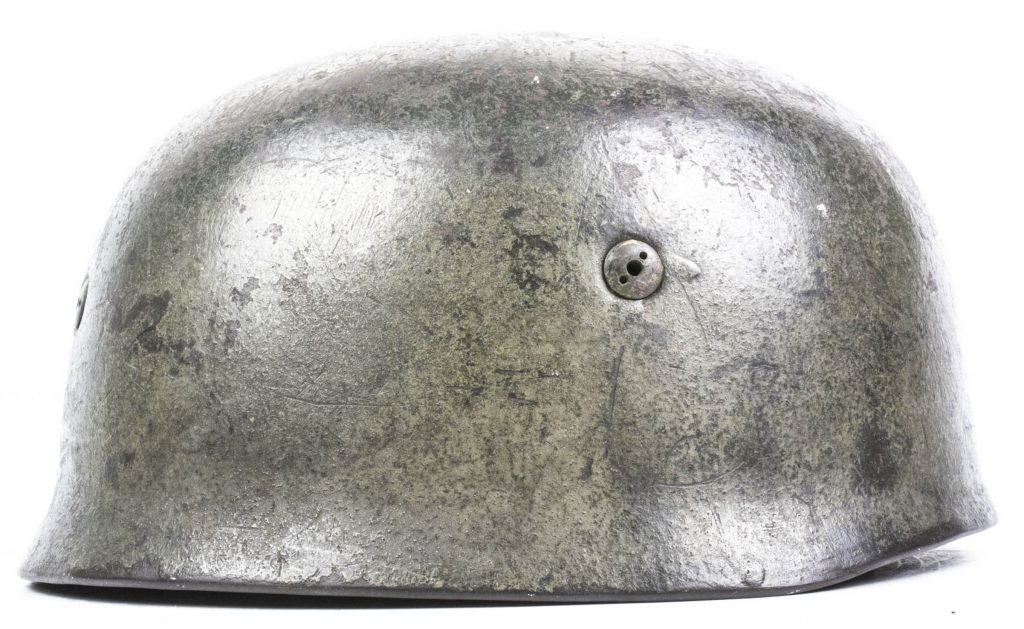
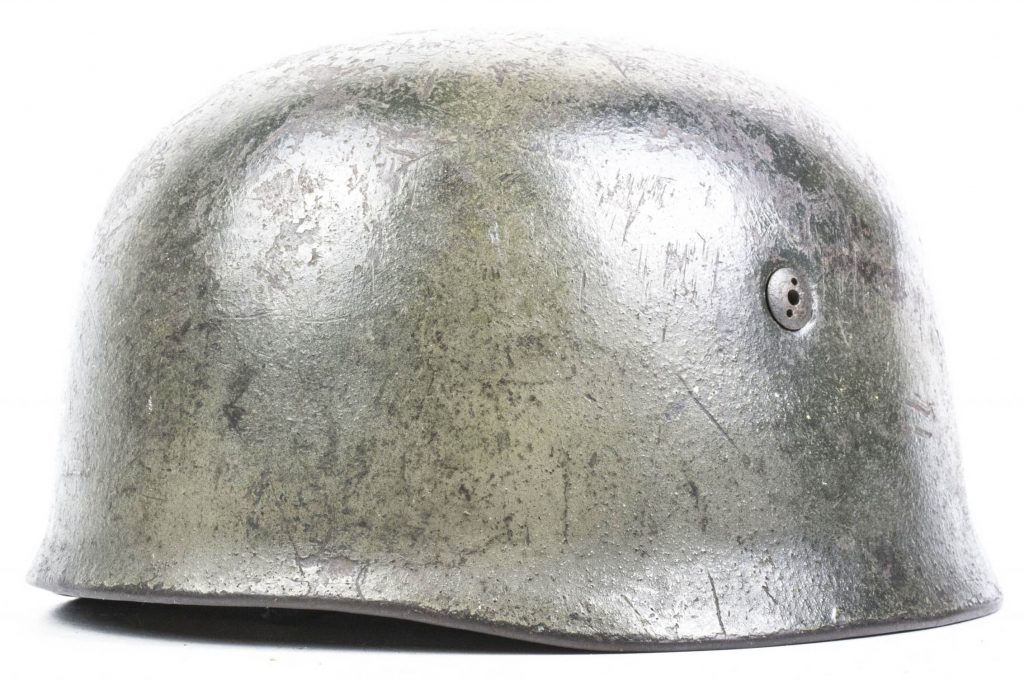
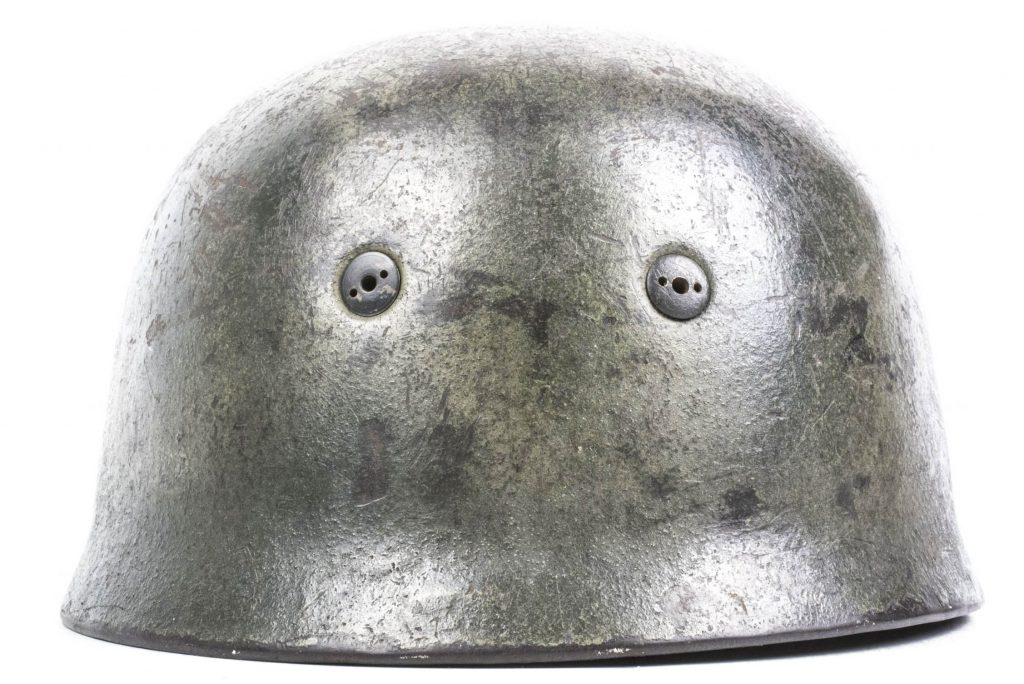
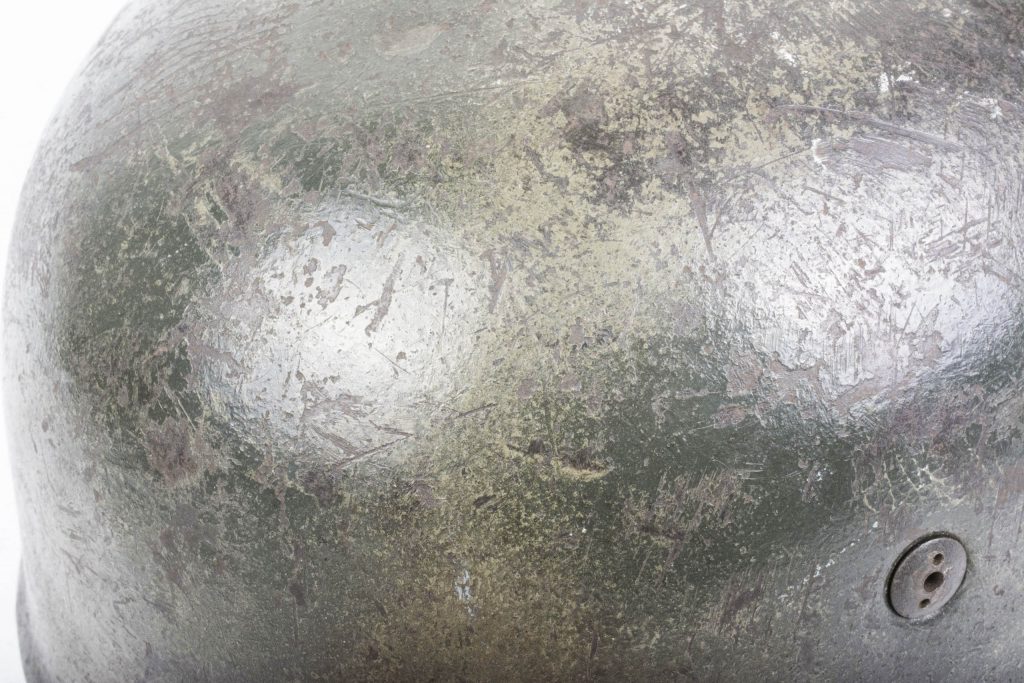
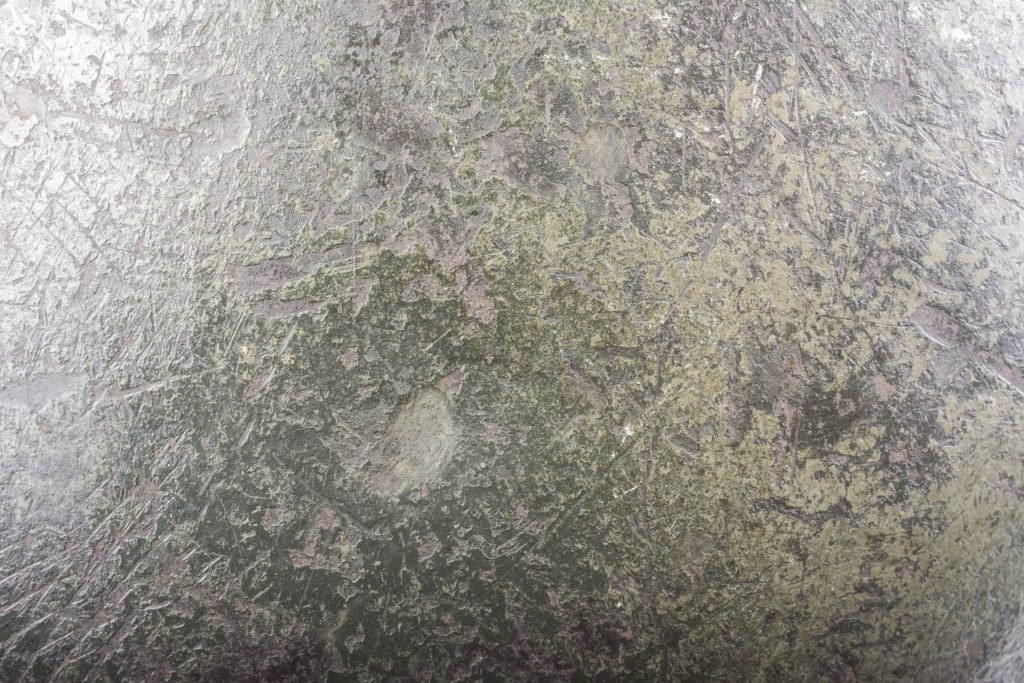
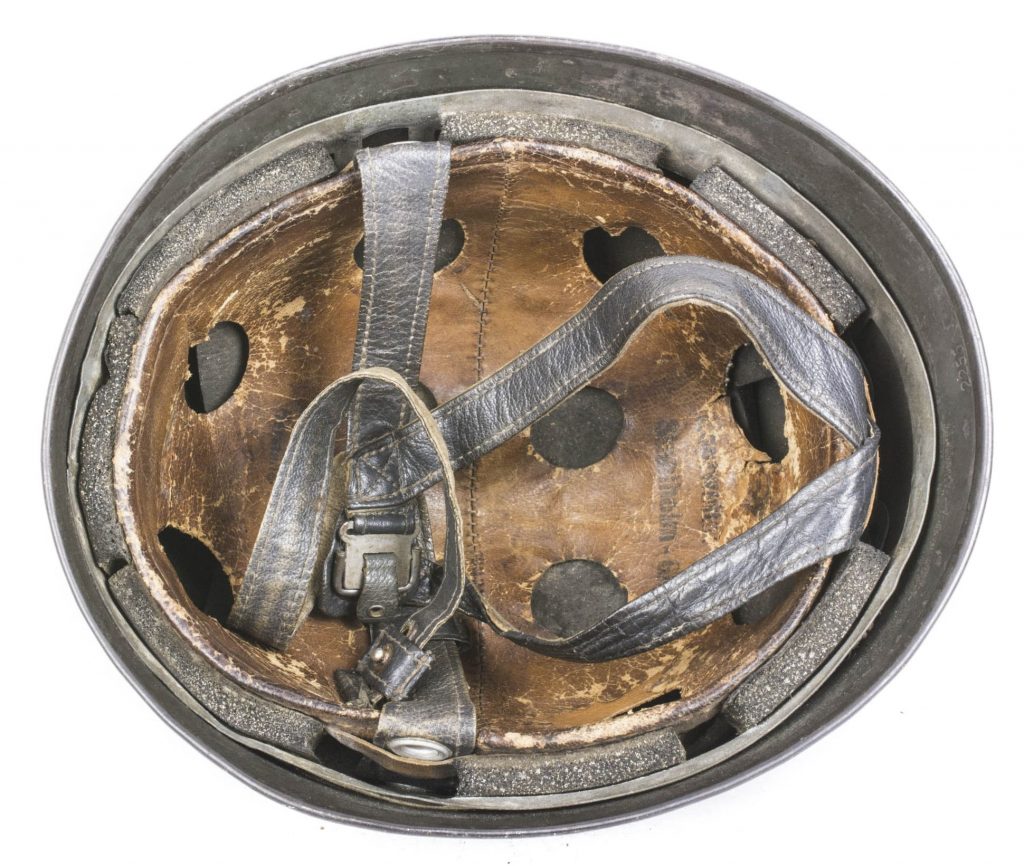
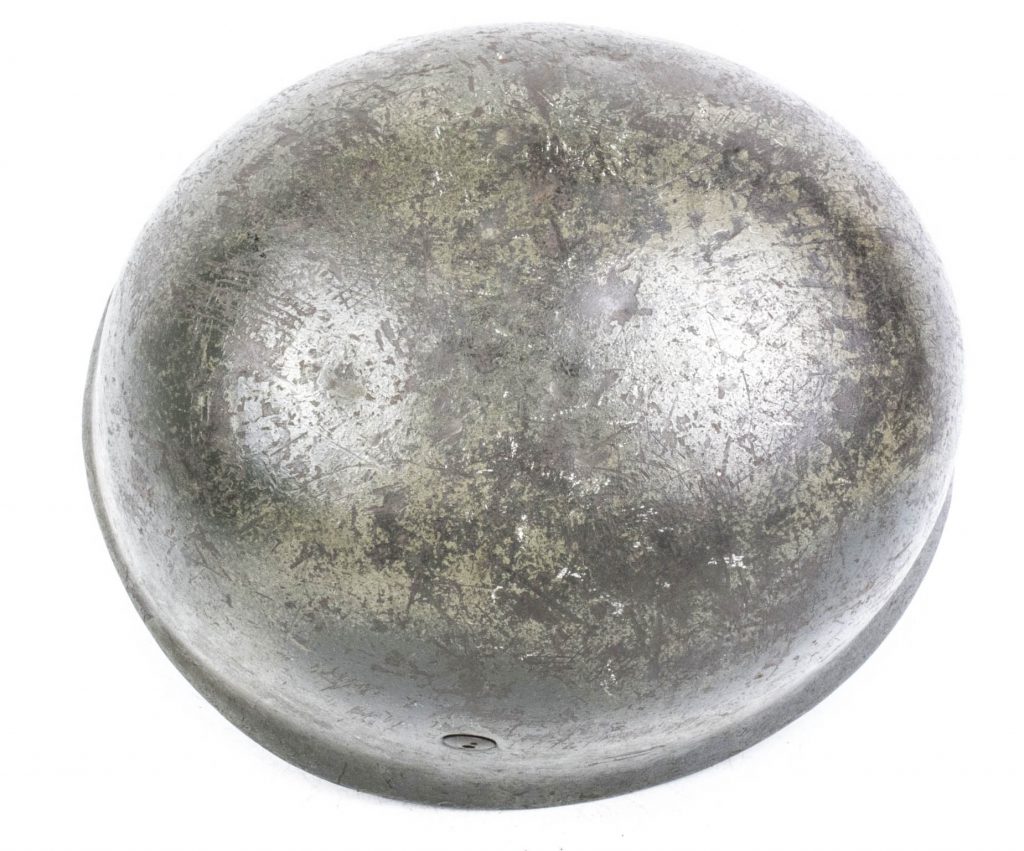
Stunning and textbook M38 paratrooper or Fallschirmjäger helmet in the tell-tale sawdust two-tone camouflage pattern as used with the 6. Falschirmjäger Regiment. The helmet was factory finished in feldgrau with a single decal which can still be seen underneath the paint.
Other items used and camouflaged by Fallschirmjäger Regiment 6.
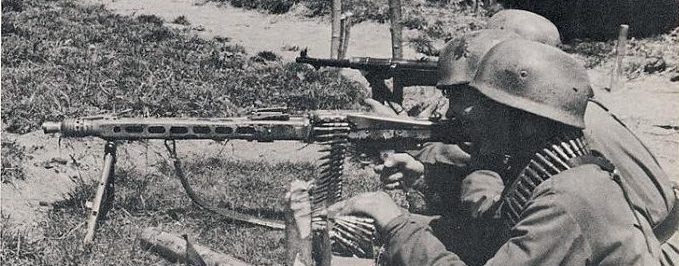
Out of a very wide range of field camouflaged items used by FJR6 here are several noteworthy and typical examples. Unlike most other German units serving on the western front FJR6 stood out in the large percentage of camouflaged equipment. All of these have been spray-painted or brush applied in the same colours.


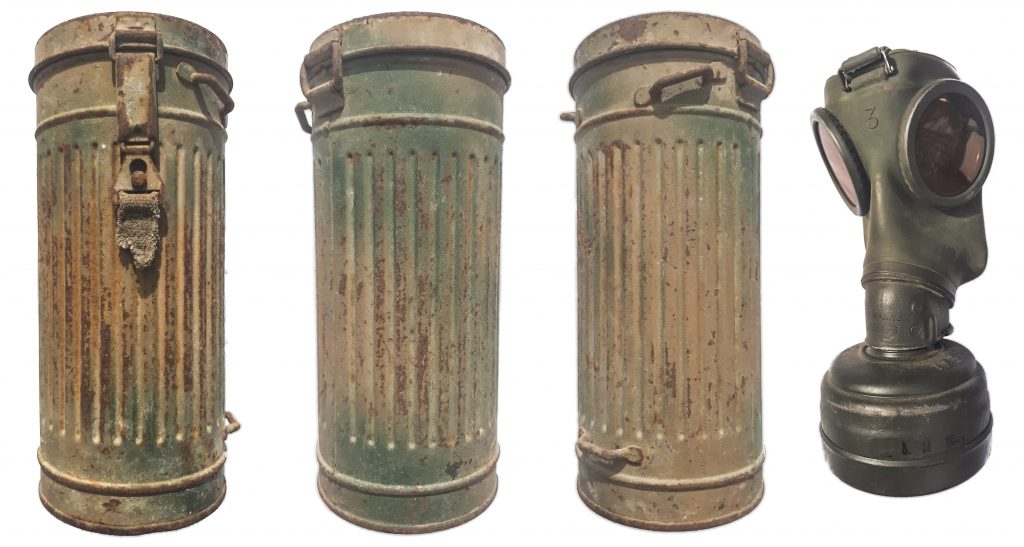
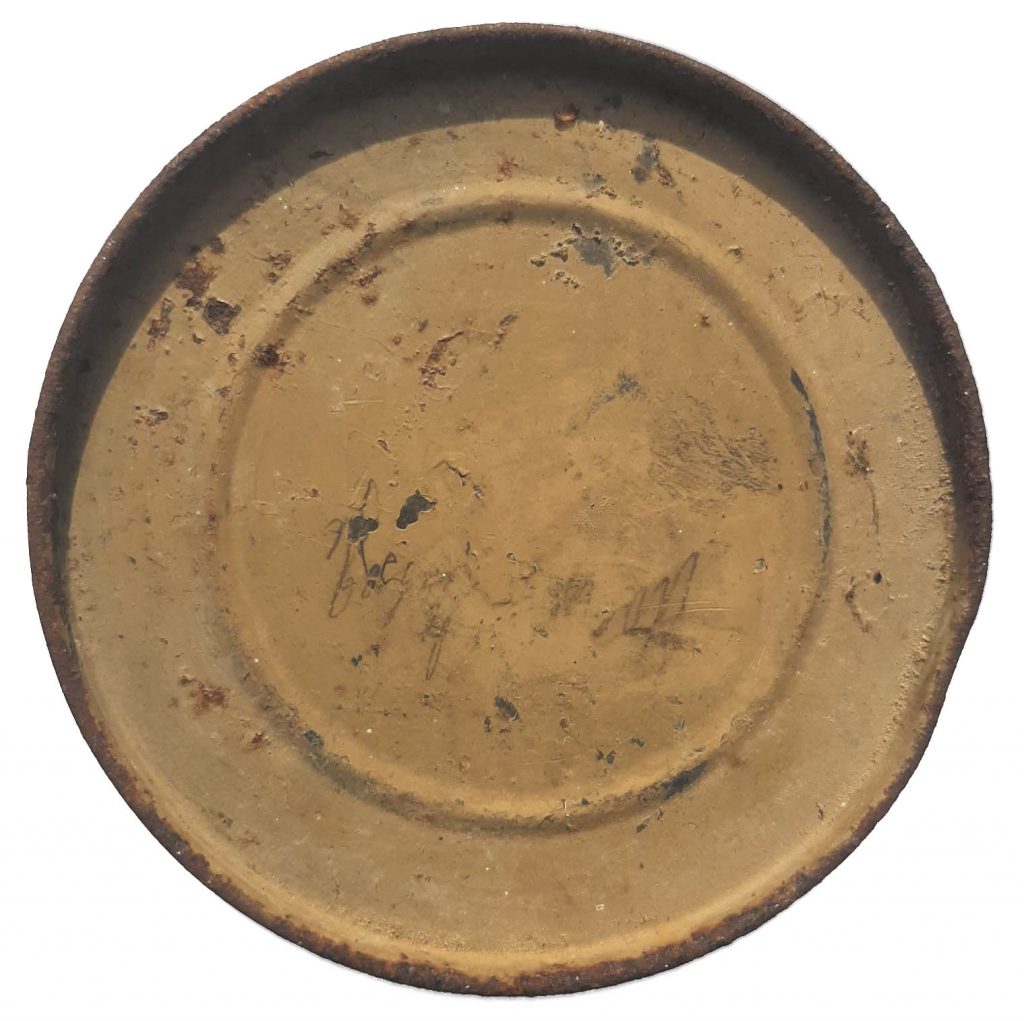
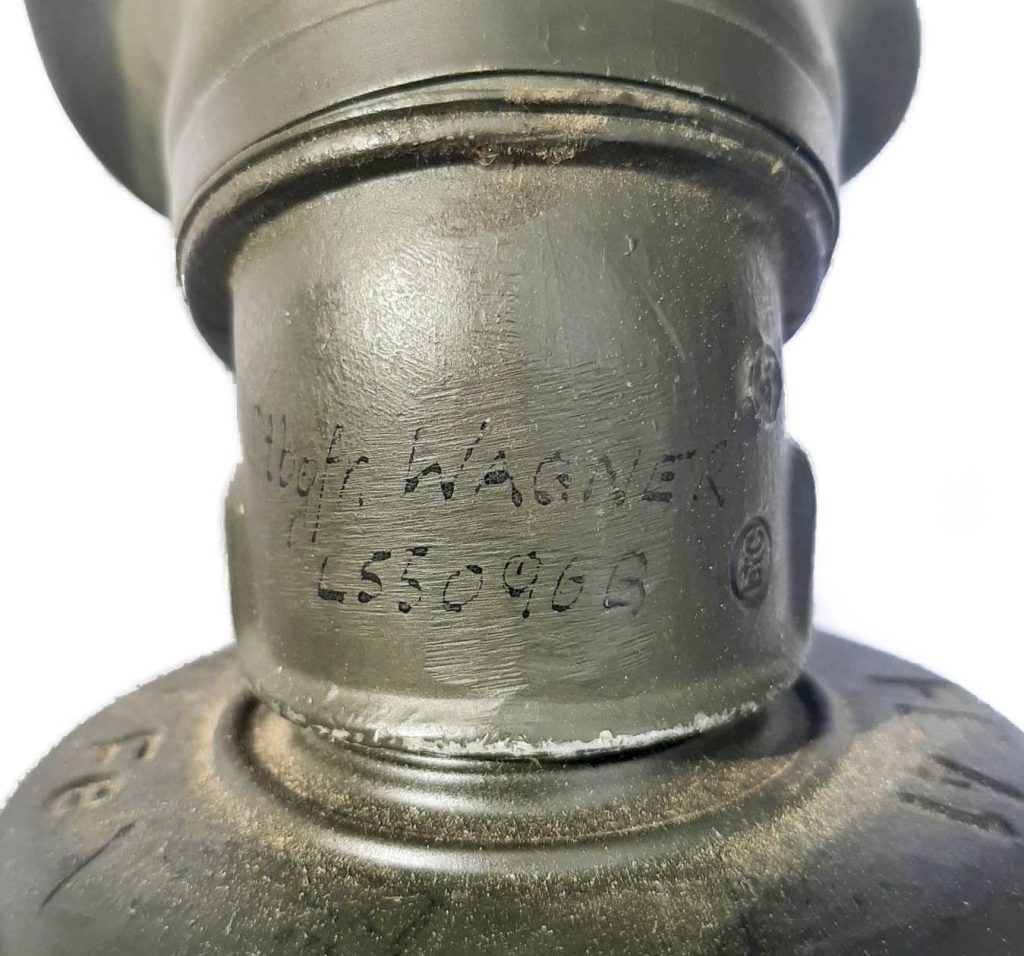
Unlike most Fallschirmjäger who were issued the lightweight gasmask bag it seems that some of the men who did not serve in an immediate combat role were issued a regular gasmask. This theory is strengthened because of the Feldpostnummer 55096 which indicates Stab II u. 5.-8. Kompanie Fallschirmjager Regiment 6. The Stab or staff of any unit was positioned behind the lines in stead of the front. Even when they did not portray a direct combat role they still received the combat equipment and that equipment was also camouflaged. The gasmask was found in an attic in Kaisheim, Bavaria six years ago and had never been in a collection. More pictures with other items found together with the mask on WAF.

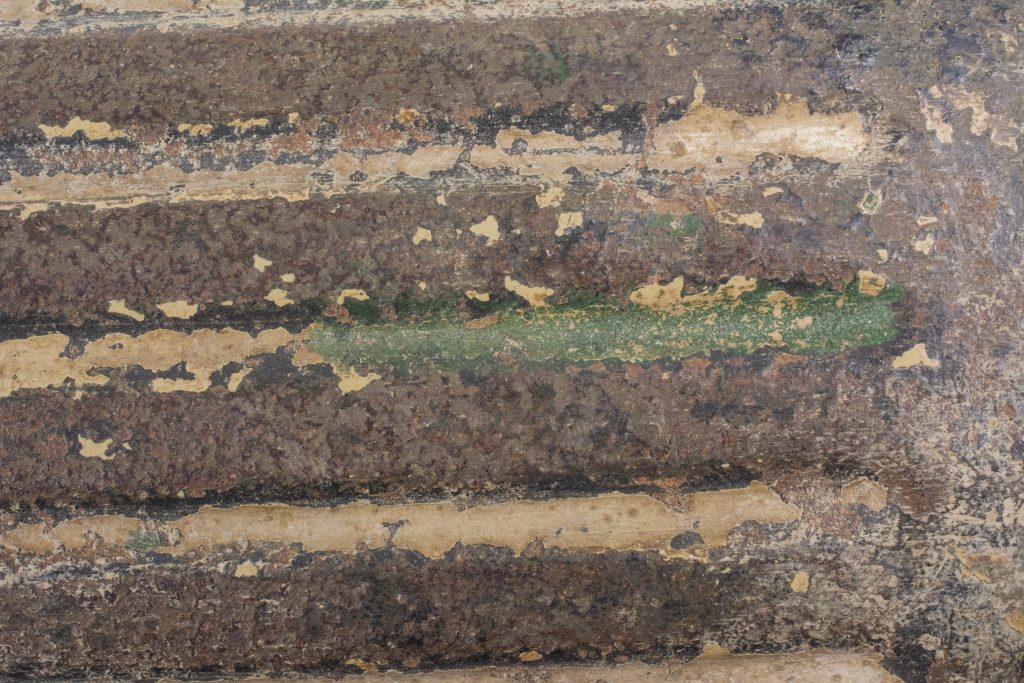
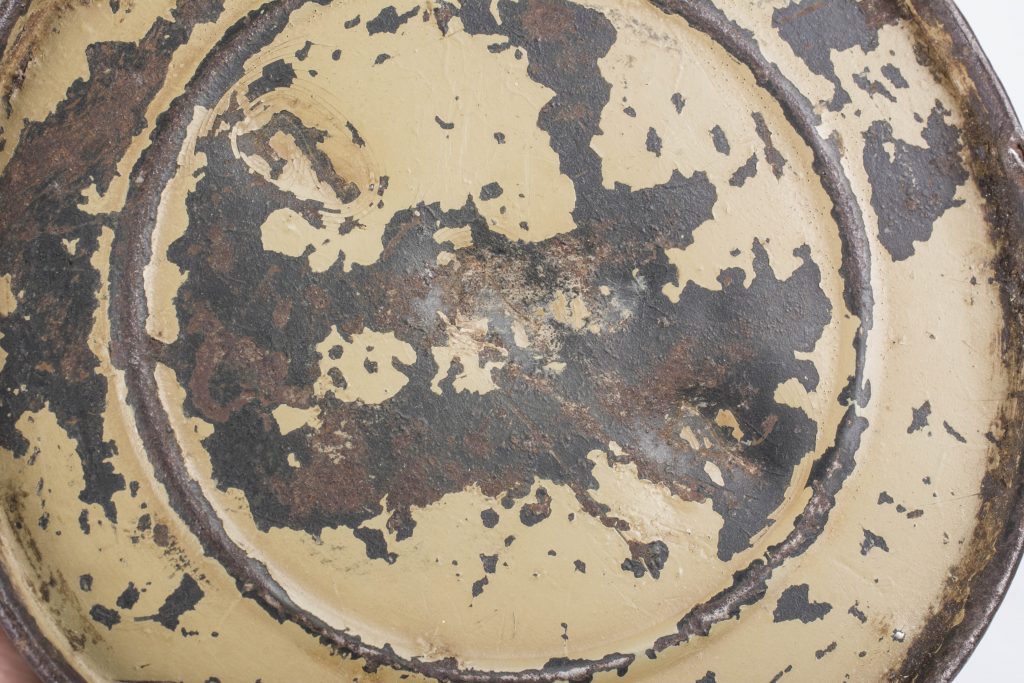
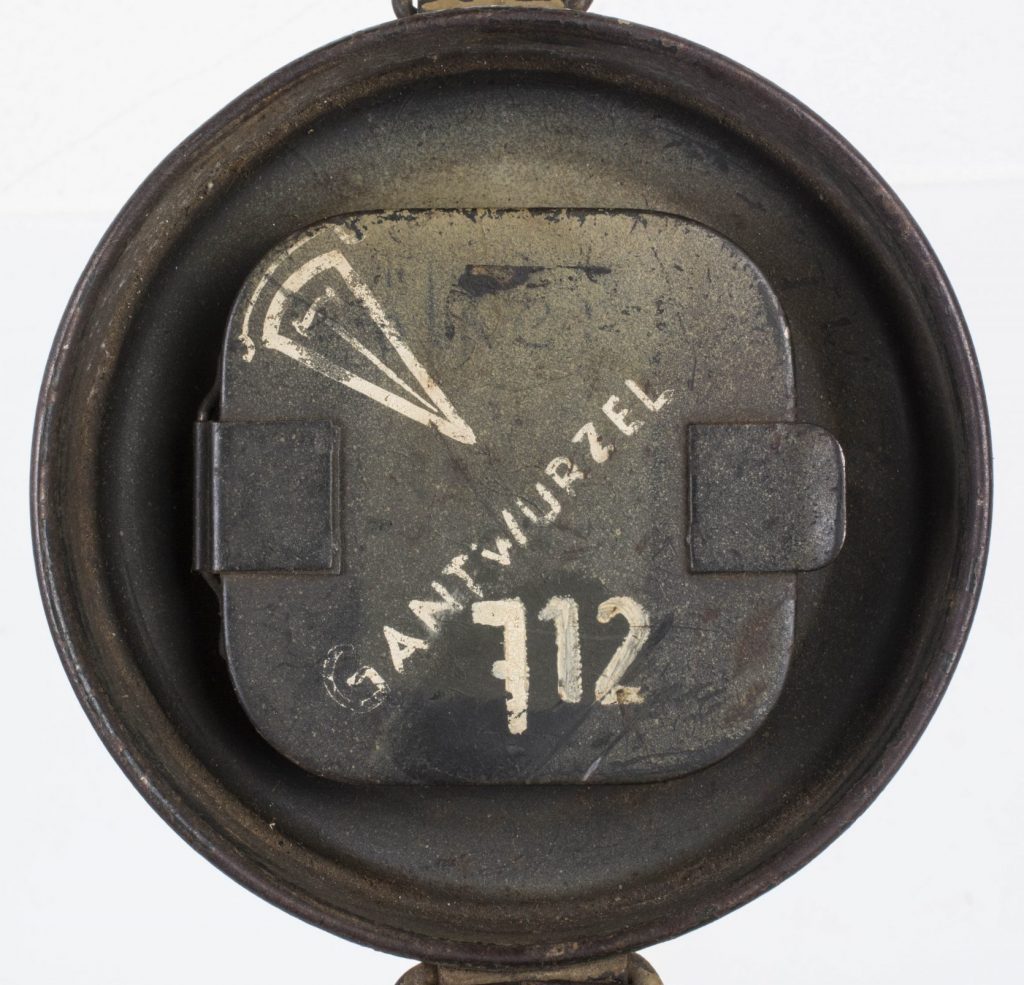
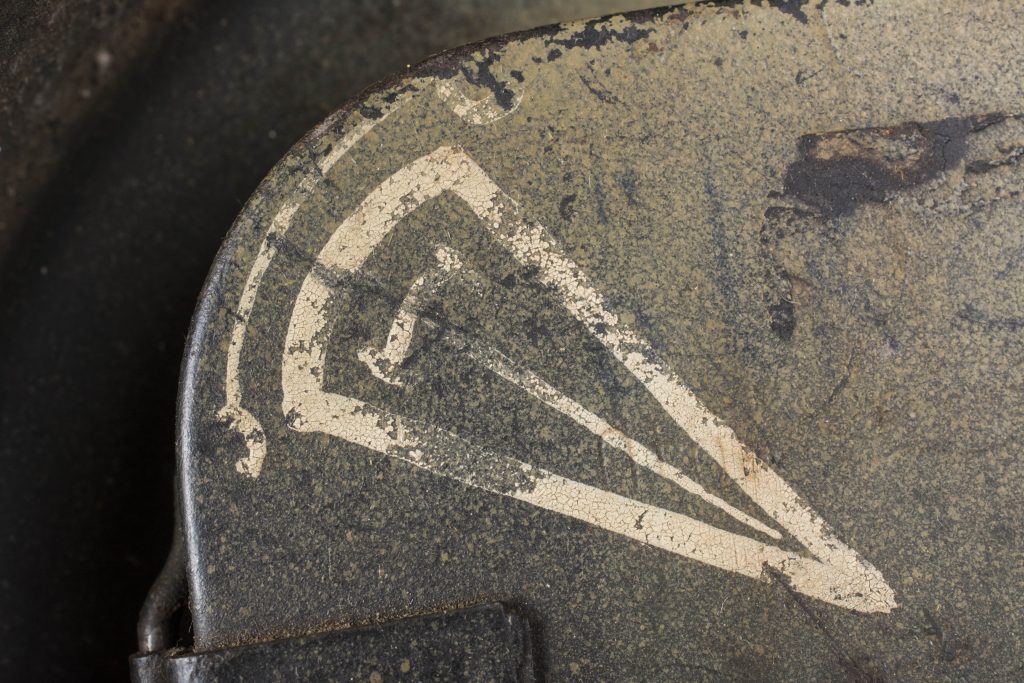
Gasmask from Gantwurzel. This gasmask was found in Hoogerheide, The Netherlands some 20 odd years ago. This gasmask canister is nearly fully finished in tan paint yet very heavily worn with a underlaying layer of Luftwaffe blue on top of the factory green paint. When we study the piece up close it shows many remnants of the green paint that once covered the tan paint. Inside the lid we can see a interesting tactical insignia which probably indicates a certain Kompanie. The name Gantwurzel is very rare so with some luck and research, one day, we will find out what Kompanie this insignia indicates.
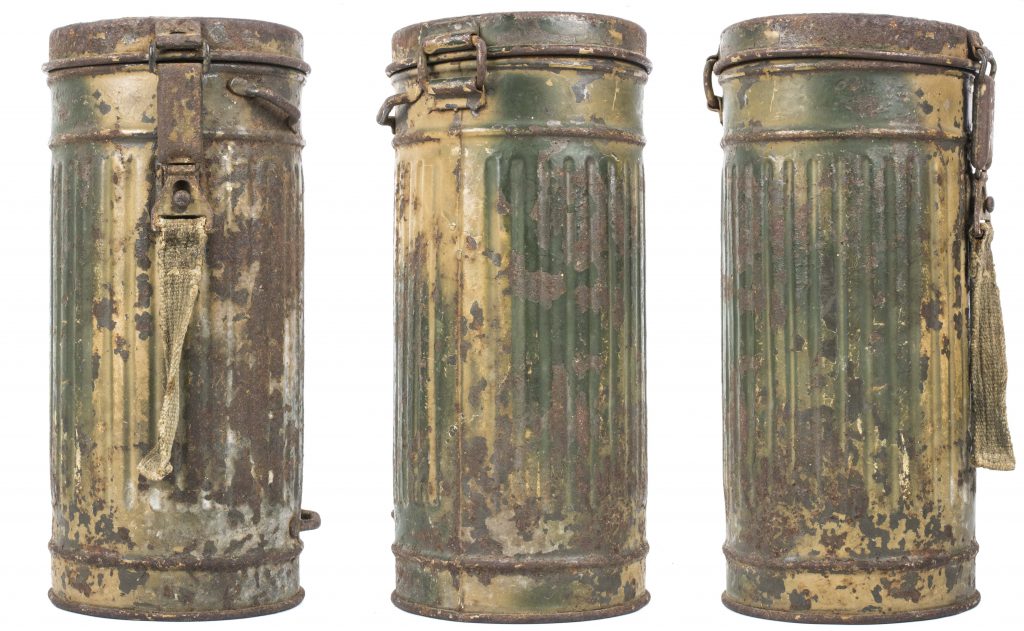
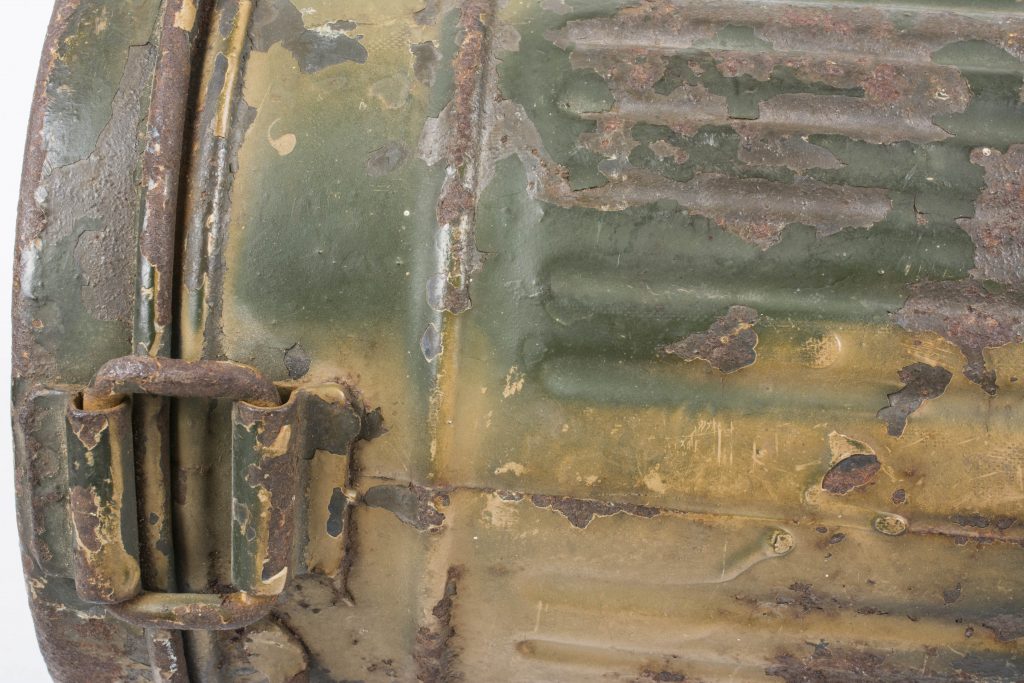
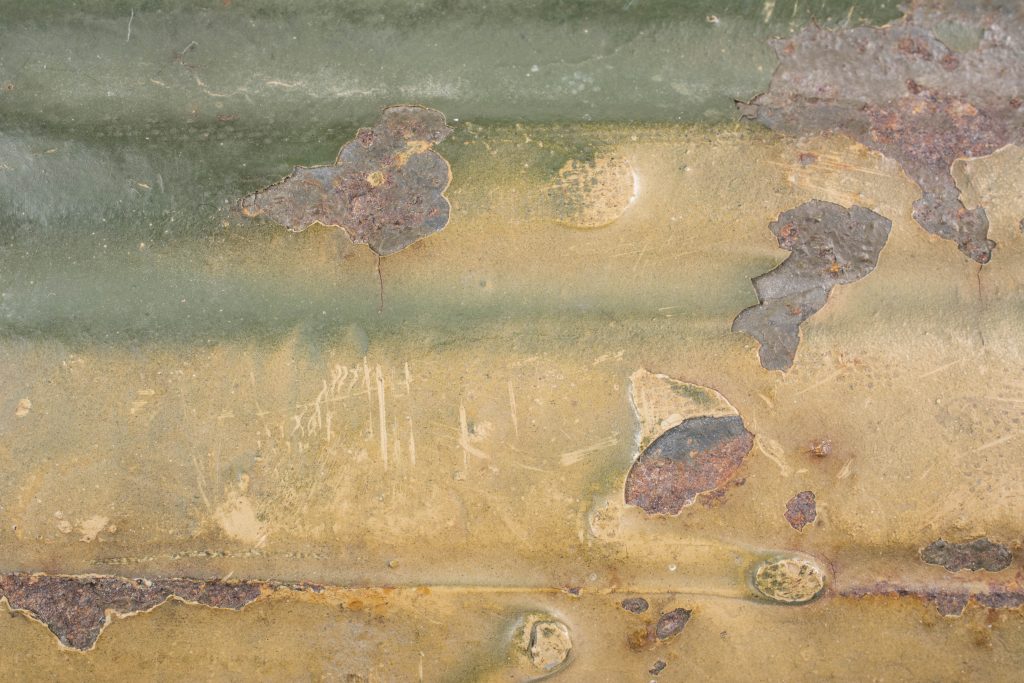


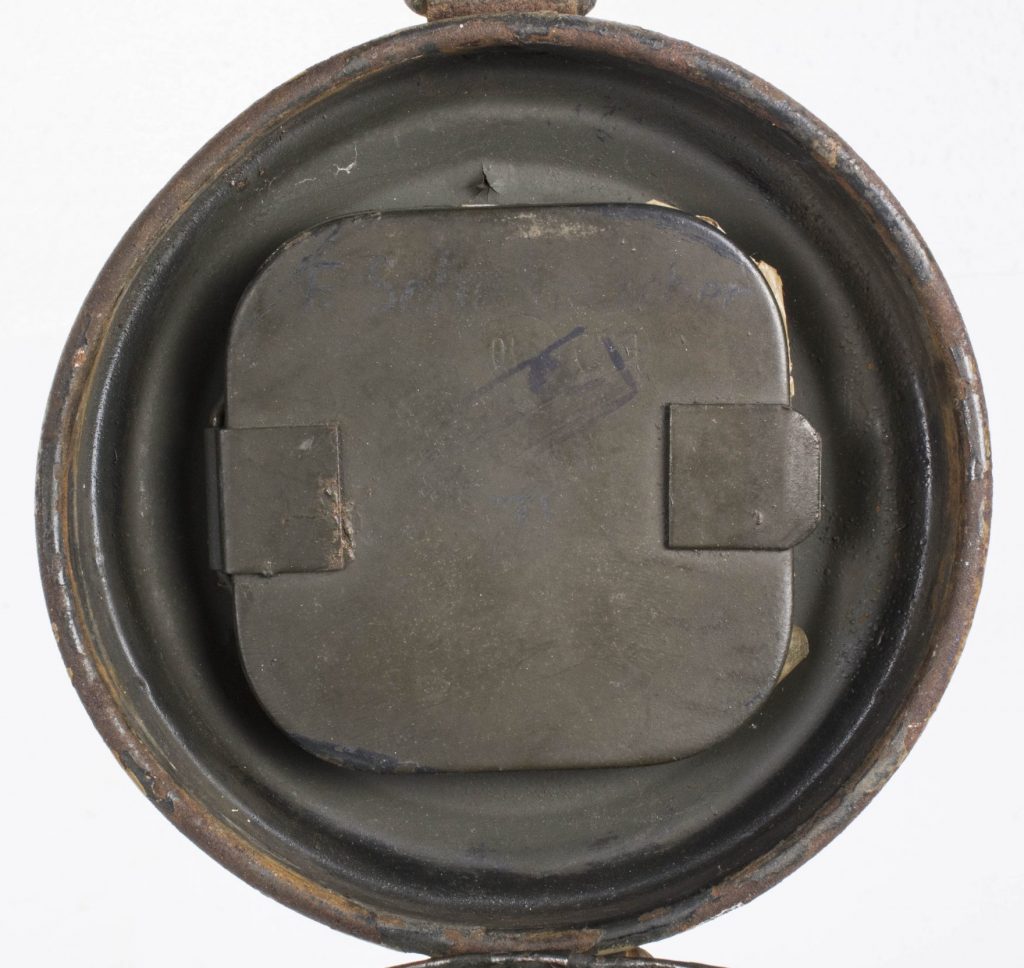
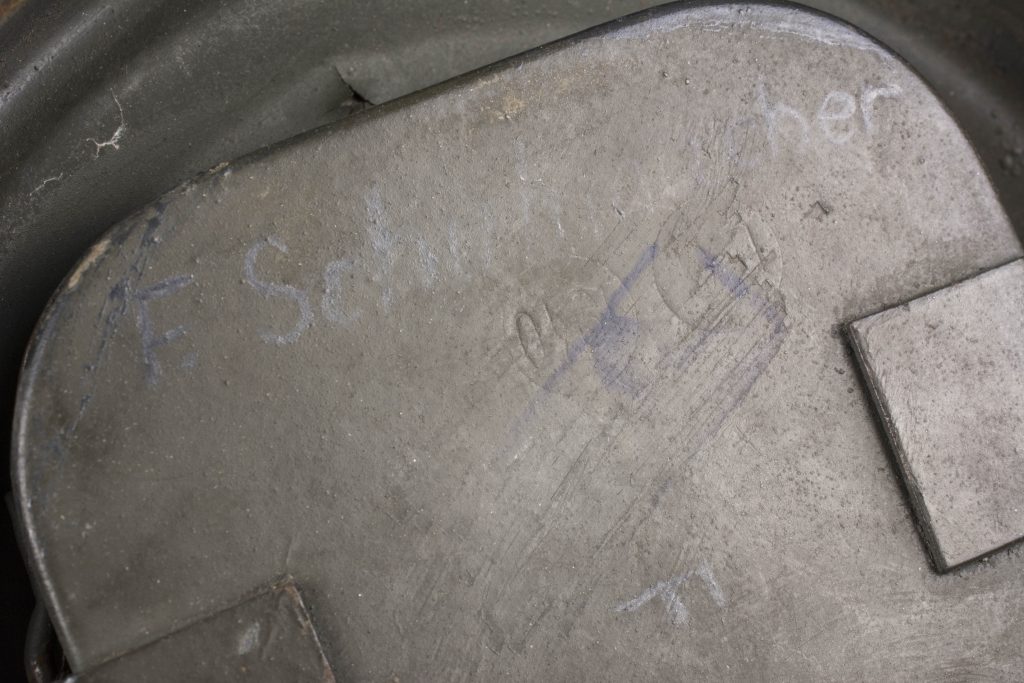
Another camouflaged gasmask canister that was retrieved north of Bergen op Zoom which after Hoogerheide and Woensdrecht, was heavily fought over by FJR6. The canister is also in the typical camouflage pattern but is void of unit markings. Underneath the camouflage paint its obvious that whilst it left the factory in green paint it was resprayed in dark blue Luftwaffe paint. The canister is named F. Schuhmacher inside. The canister was picked up just after the war and is still with the elderly finder today.


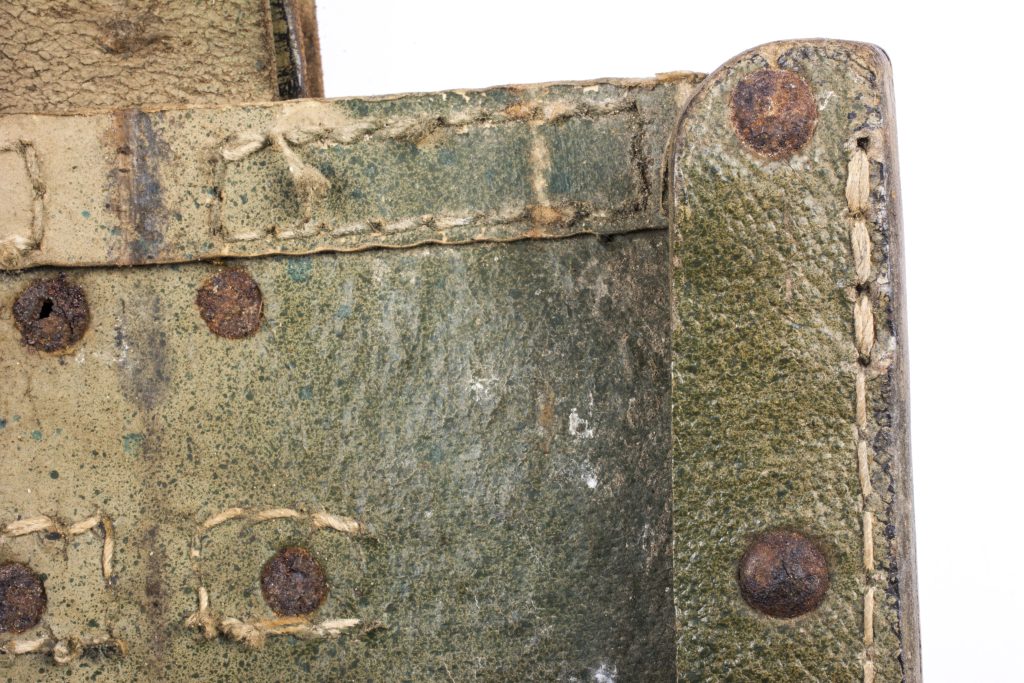
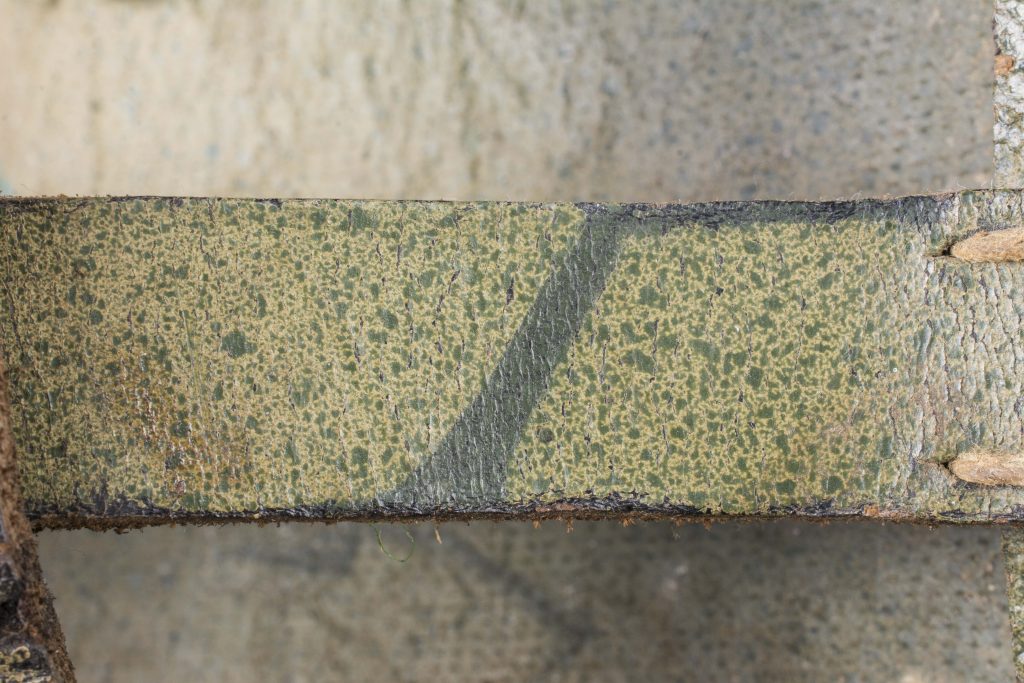
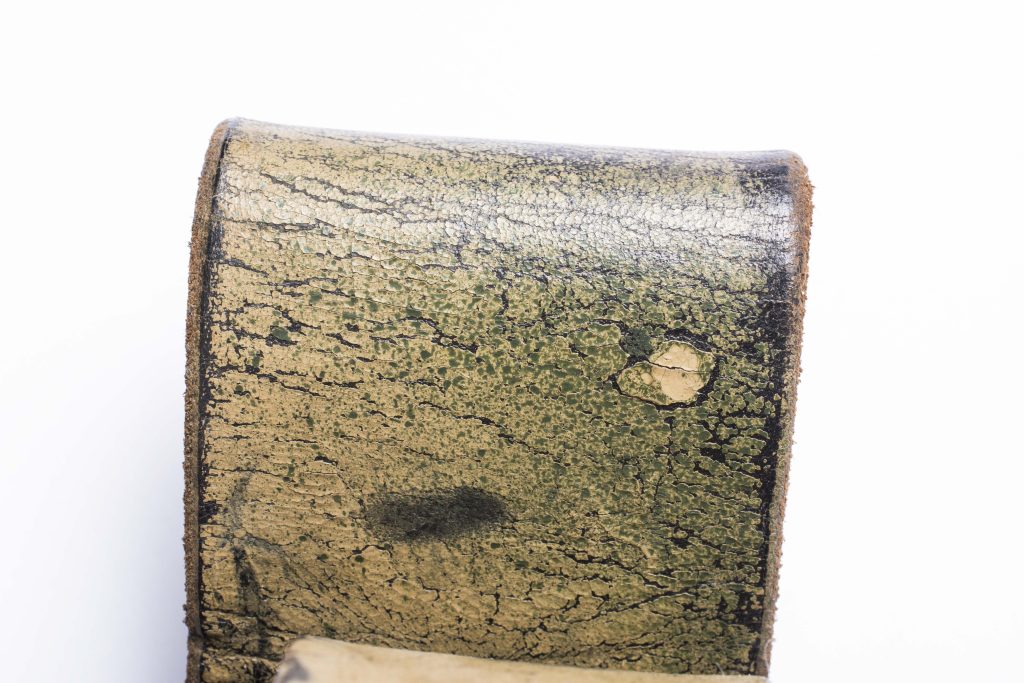

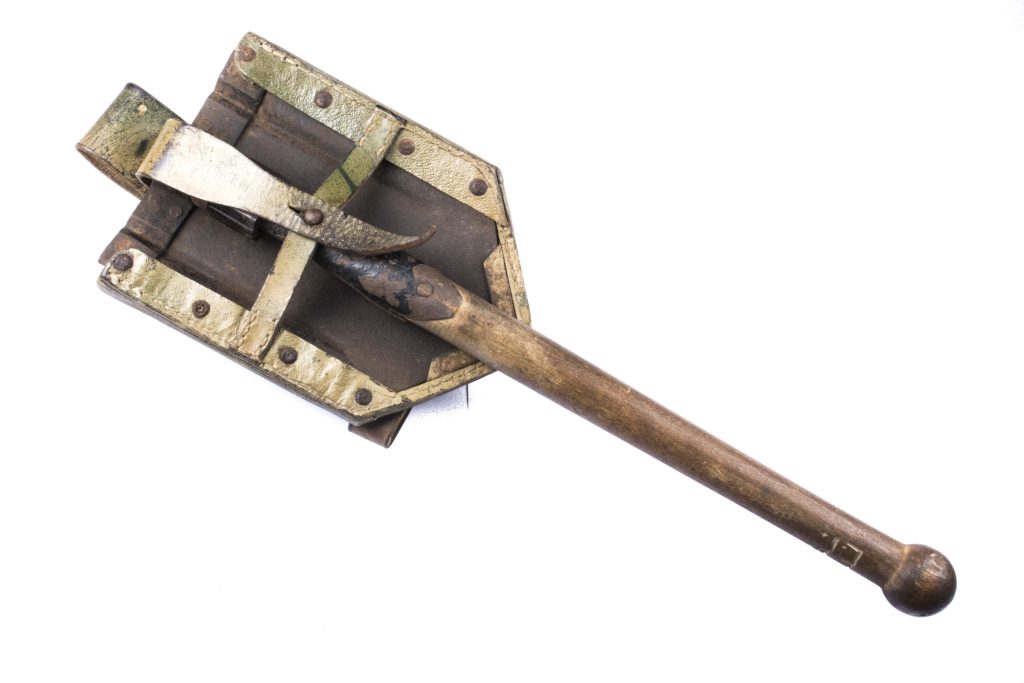
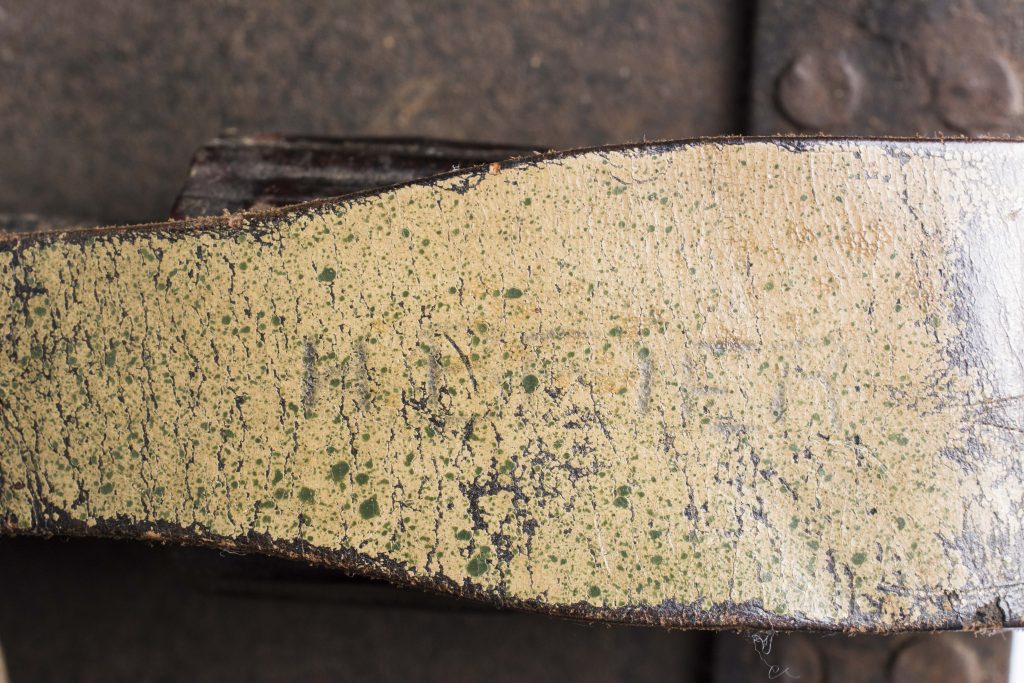
A beautiful second pattern folding E-tool cover found south of Carentan with a typical two-tone camouflage paint finish as used by FJR6. The cover is named H. Beier on the last photograph which is unfortunately a non researchable name. The E-tool and it’s carrier were found in Méautis which is south of Carentan, together with a MP40 and a SS helmet with cover in 1976. The carrier and it’s e-tool are a part of the Memorial Museum of Omaha Beach at Saint-Laurent-Sur-Mer which were so kind to take it off a mannequin to let me photograph it and is for sure worth a visit!
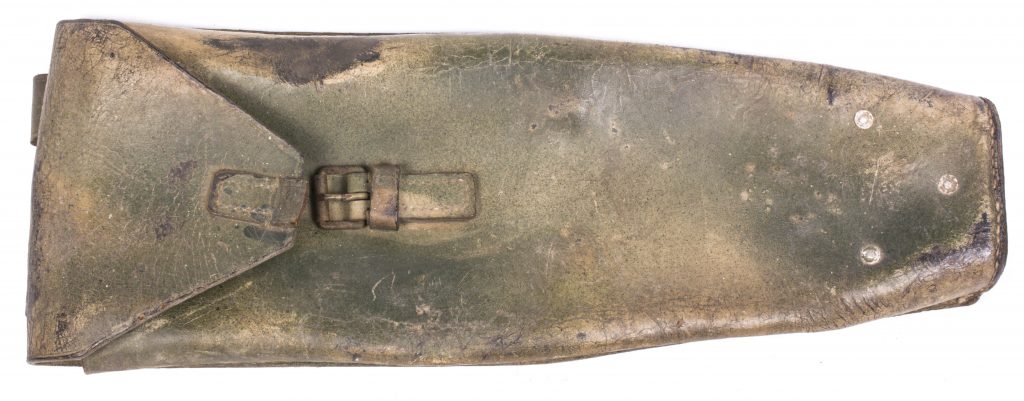

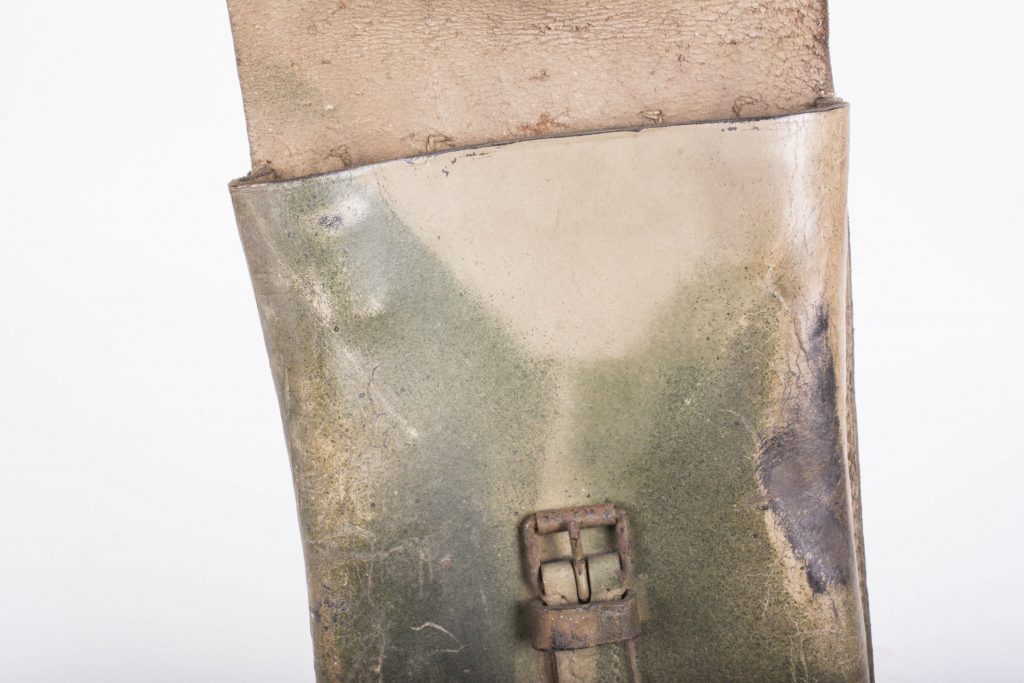
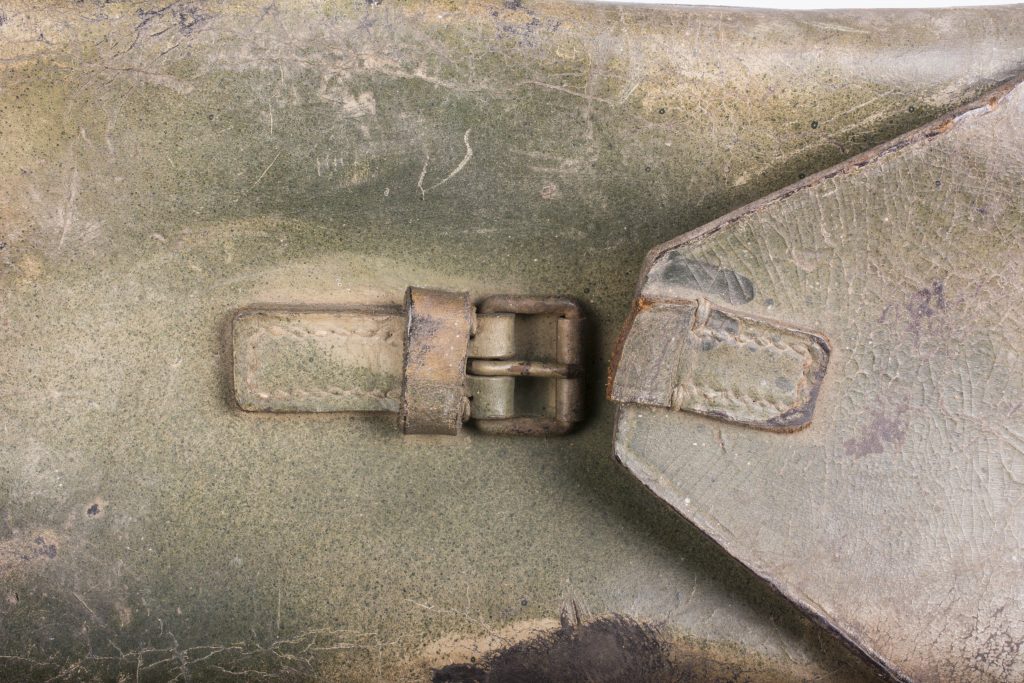
A leather short handled wire cutter pouch. This pouch came from Normandy and is a part of the Normandy Victory Museum.
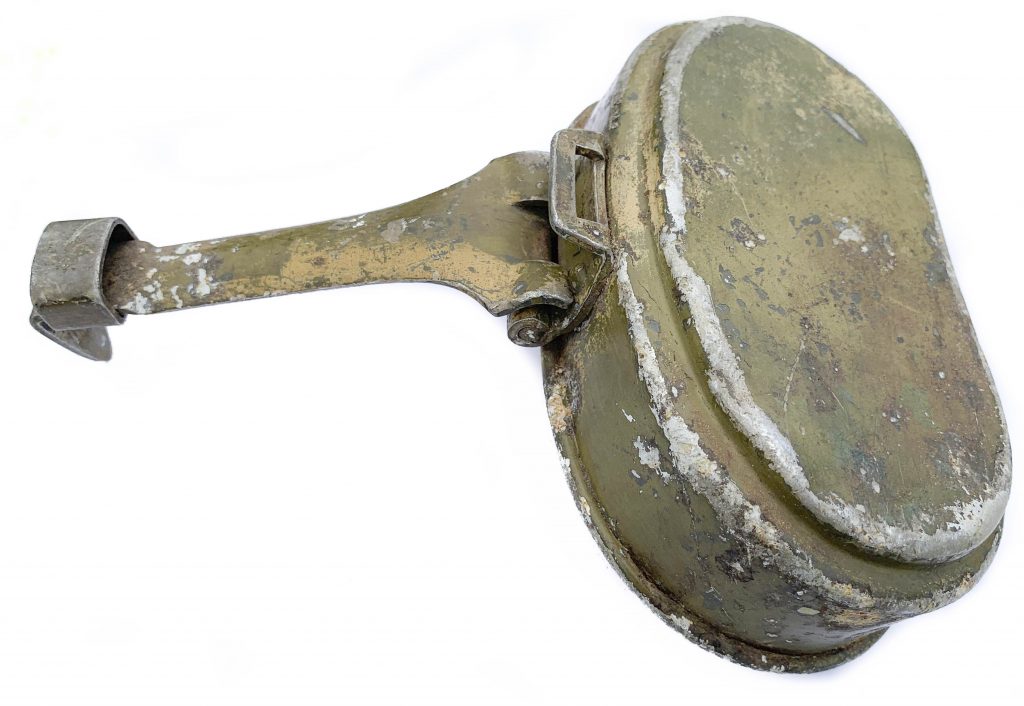
Another interesting camouflaged piece is this M31 messkit lid in two-tone finish. The lid was found by my friend Mike who was visiting our mutual friend Gerard in Hoogerheide between the Duinstraat and Antwerpsestraatweg. A walk on the former battlefield revealed this messkit lid which was found right in the former positions of FJR6. After 70 years in the ground the lid still retains a large portion of its two tone finish. There is a part which looks like a third brown tone has been added but this is one of the most common mistakes made; the paint on mess kits usually transforms to a red/brown tone when it is heated on a Esbit stove or open fire. A lot of mess kits have this red/brown stain on the top or bottom which is mostly misjudged as being camouflage paint.

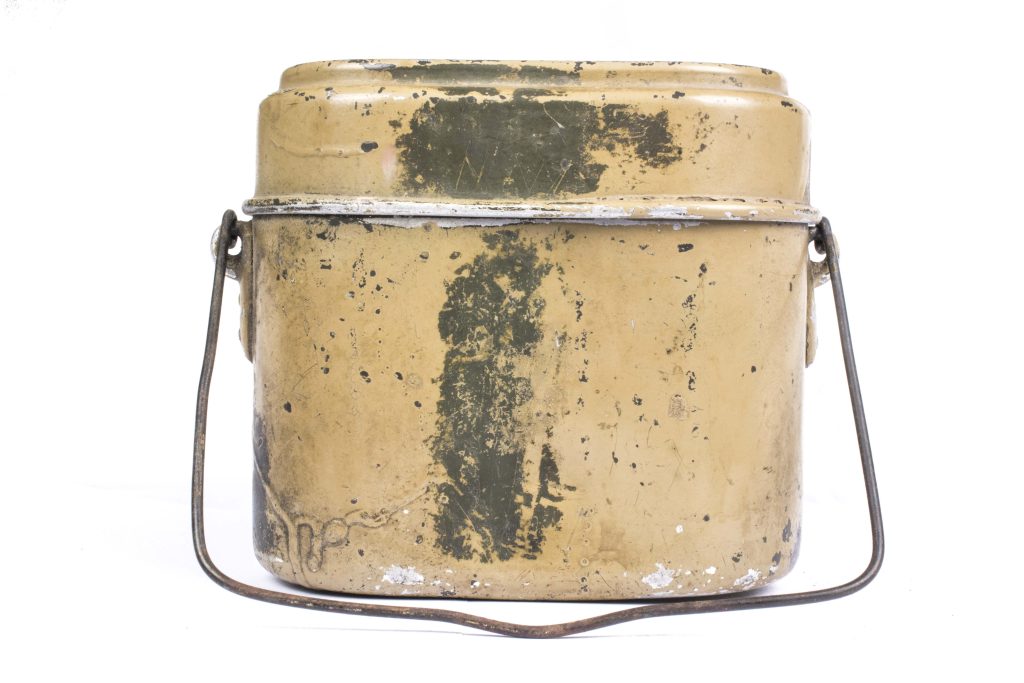
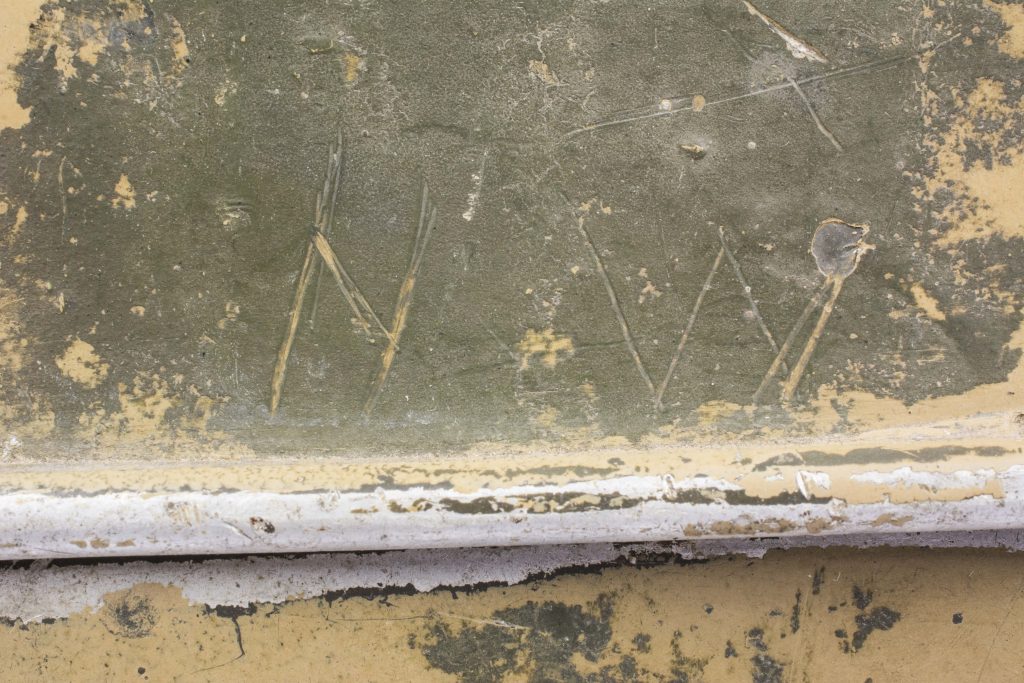
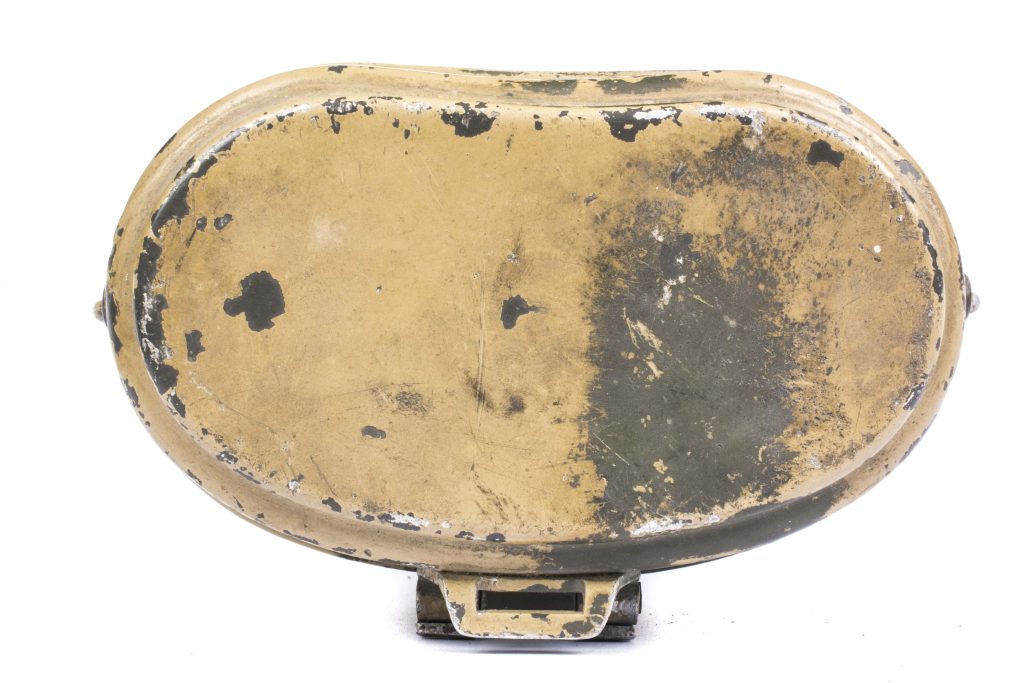
Normandy collection
Another interesting messkit was found by a Normandy based collector some 30 odd years ago south of Carentan. It also features a typical two-tone camouflage finish and for me it is likely this messkit was used by FJR6. There are several initials engraved but there is no first and last name sadly.

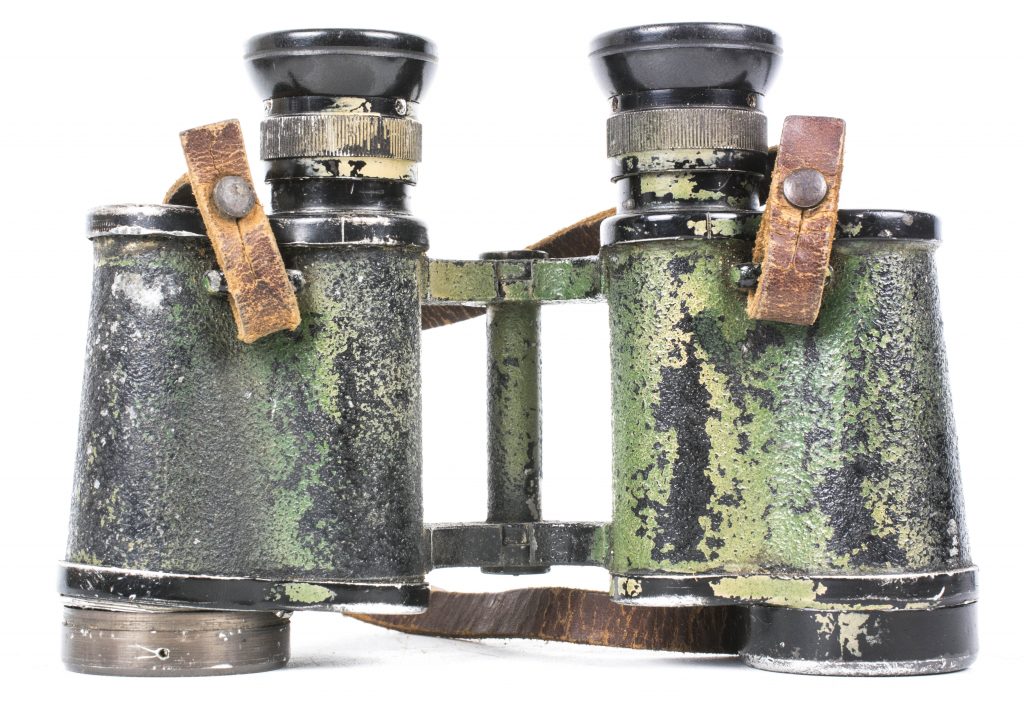

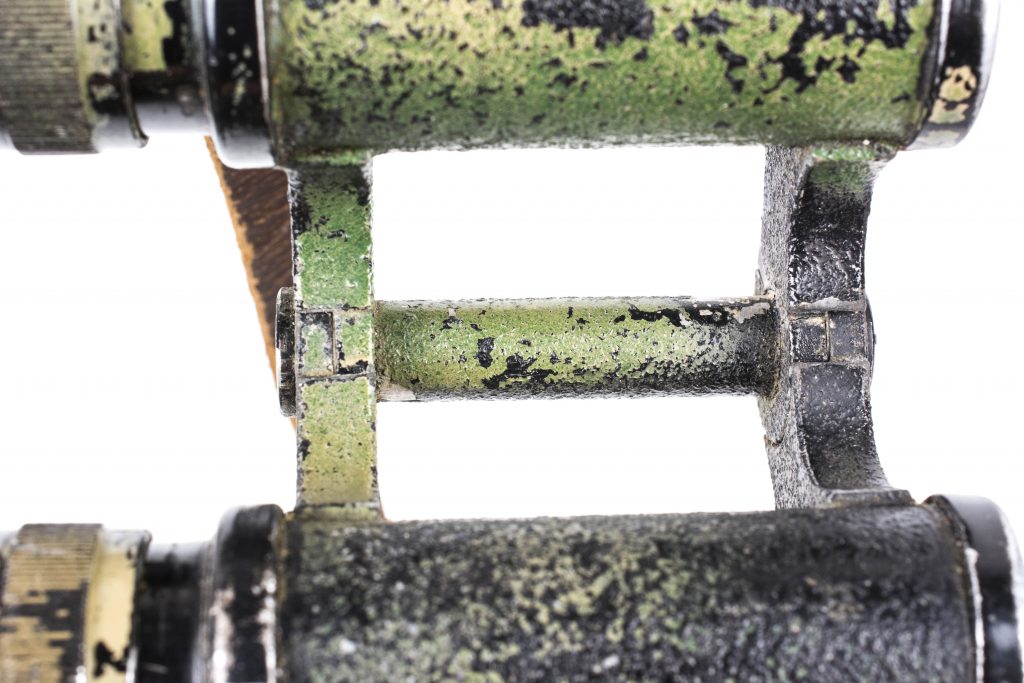
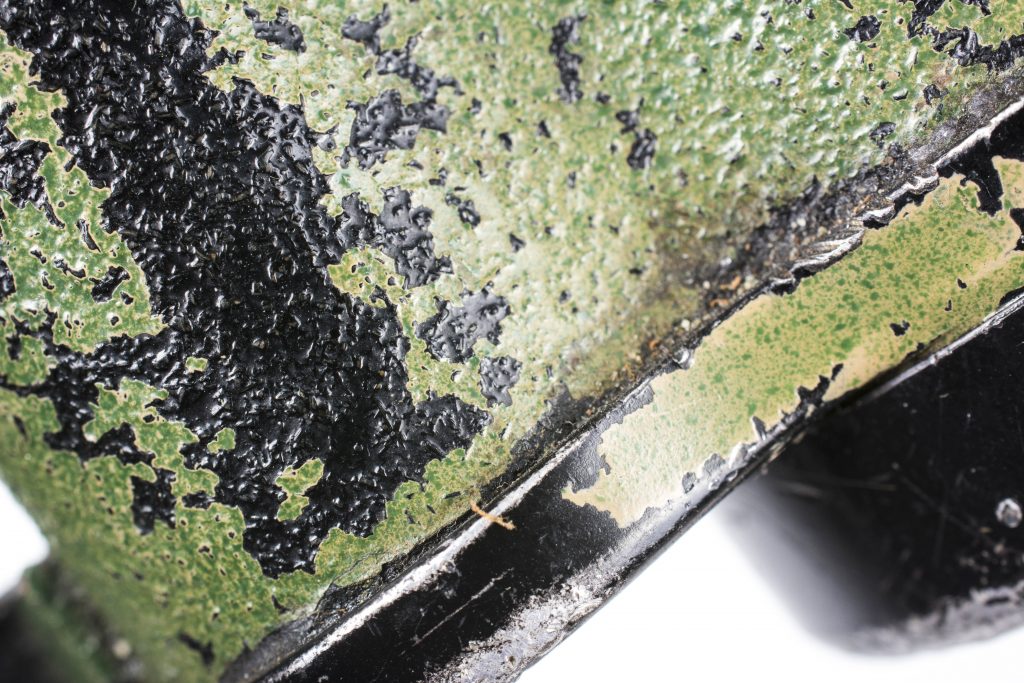
FJM44 collection
A part of my own collection is this standard 6×30 Dienstglas issue binoculars finished in the typical two-tone FJR6 finish. The binoculars are in used condition yet still the camouflaged pattern remains. The binoculars were brought back by a US or Canadian veteran. The colours are still bright today!
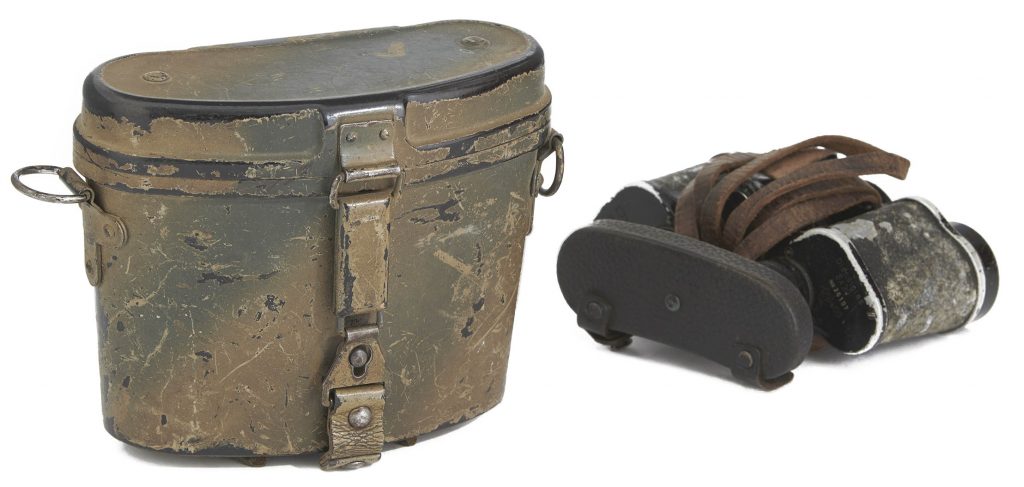
US paratrooper Ray Geddes, 501st PIR, 101st AB souvenired a pair of binoculars from Von der Heydte’s former headquarters at Saint-Côme-du-Mont. He found these German issue binoculars and noted These 6×30 binoculars were picked up by me on the morning of 6/8/1944 in the cellar of the German aid station at dead man’s corner. Interesting feature is that the case is finished in the typical FJR6 camouflage. The binoculars are now back at the place they were originally found; at Dead Mans Corner, the D-Day experience museum which hosts one of if not the best FJR6 themed collections!

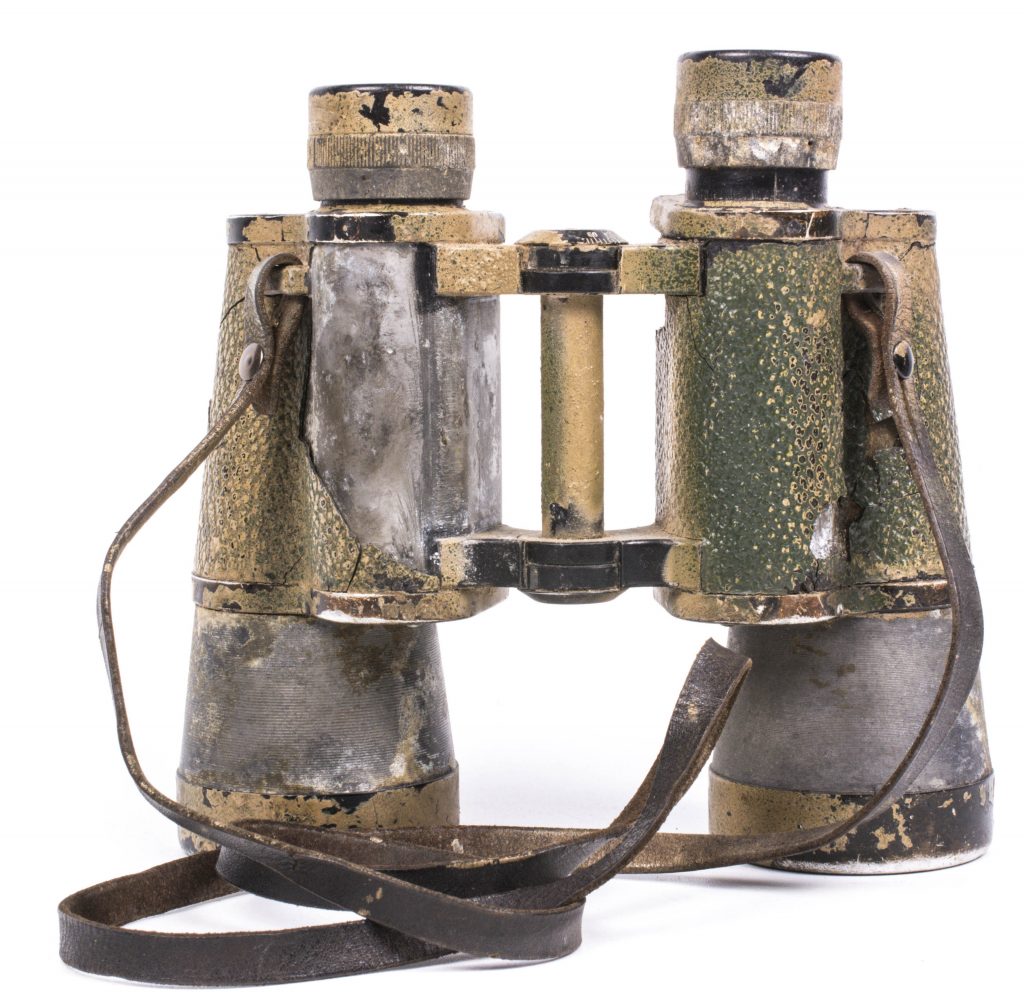
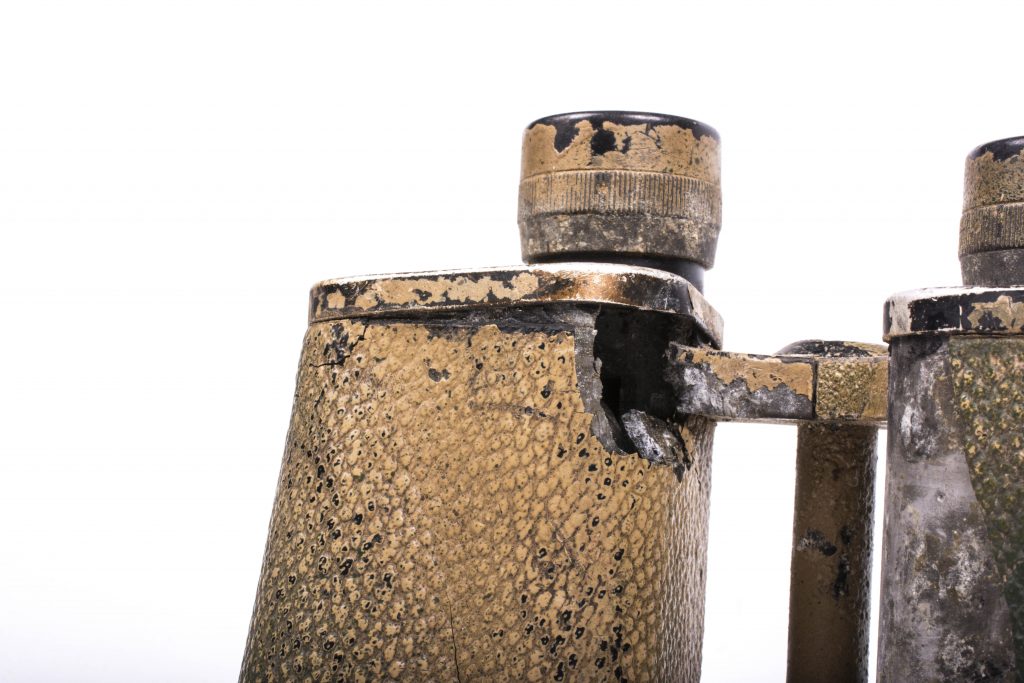
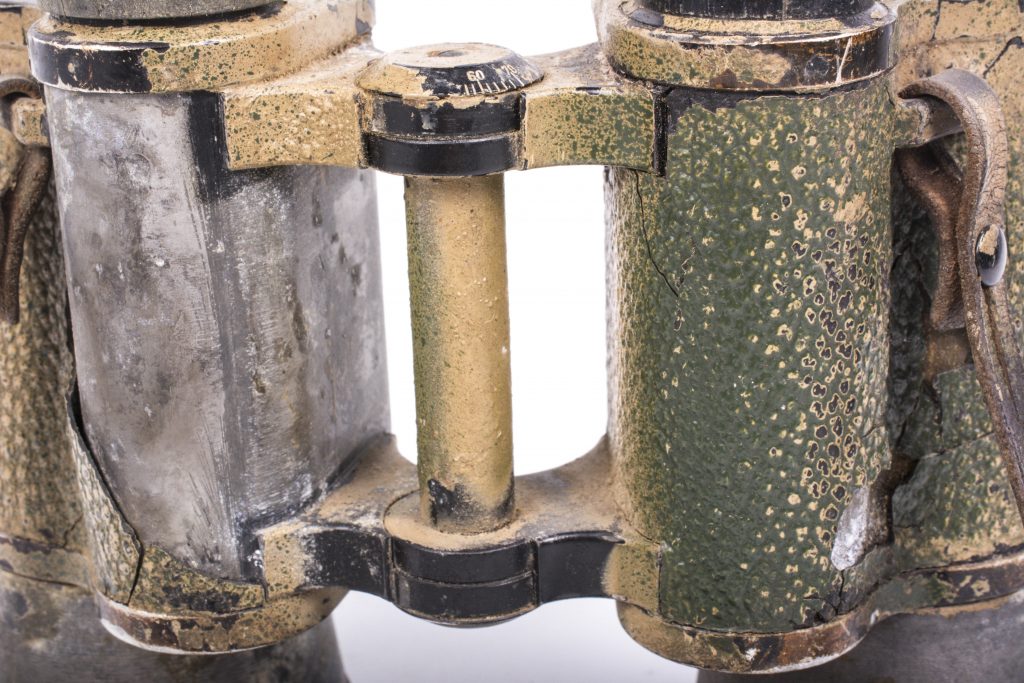
Another set of FJR6 camouflaged binoculars is this battle damaged example marked E. Leitz Wetzlar Dienstglas 10×50. This example is camouflaged in the tell tale pattern and was left behind after the battles in Normandy. It has a large shrapnel or bullet hole which rendered the optics damaged. These large binoculars were typical for Kompanie– or Zugführer.
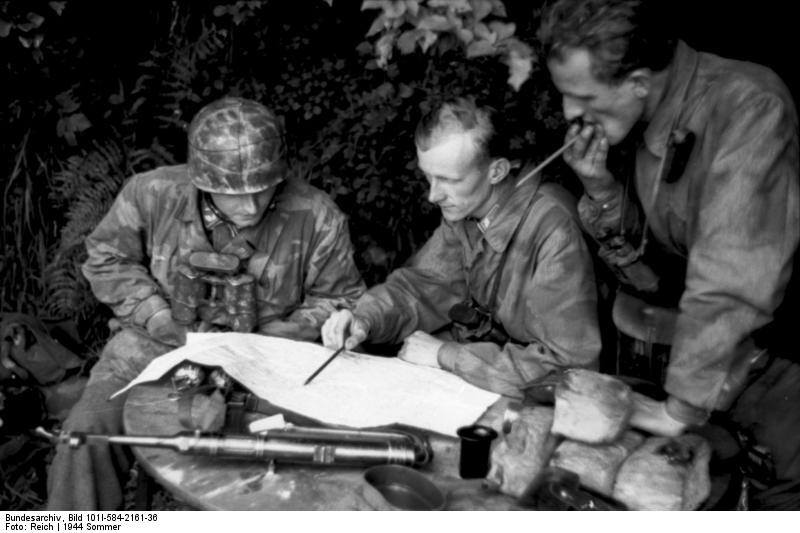
A interesting photograph showing several Fallschirmjäger officers, probably A Kompanieführer together with his Zugführer. The interesting feature on this photograph is the officer on the left is wearing a wired and camouflaged helmet and his binoculars are camouflaged as the pair shown above.
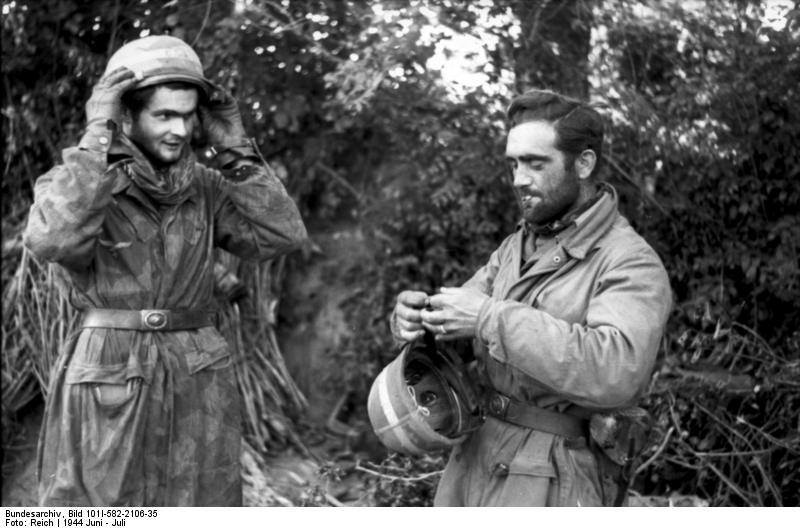
Another interesting photograph taken during the battles in Normandy is this one. Two paratroopers, both with helmet covers pose in front of a hedgerow. Judging by the beard growth they have been fighting for some time. But the interesting feature is the camouflaged P38 hardshell holster and the US T-5 parachute material scarf.
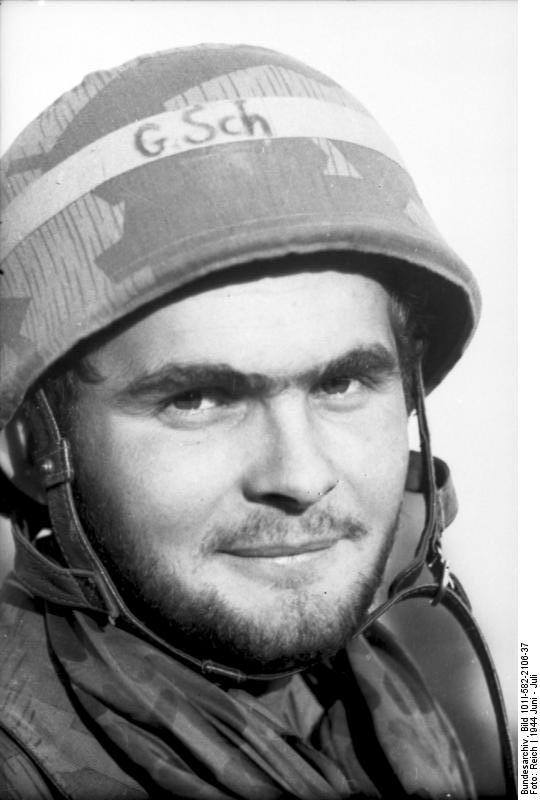
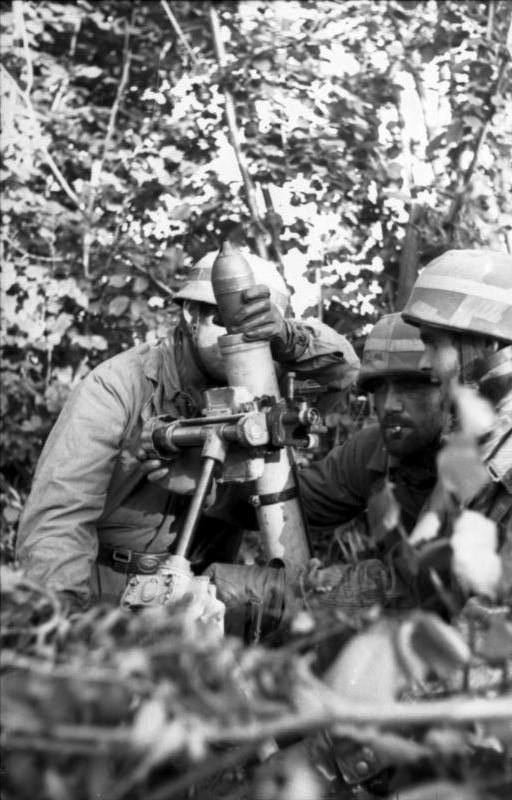
The same guys can be seen in the next photos. Judging by the print in the cover, the faces and the smocks I am sure.
The following MG ammunition cases in FJR6 camouflage are a part of the Normandy Victory museum in Catz. They all originate from the sector of FJR6. It proves a good chance to see that not all FJR6 tones are the same but in the same two tones. Whilst some greens are very dark others might be light. When we take a look at FJR6 helmets we also need to consider the fact that when they camouflaged their helmets and equipment in 1944 they had to paint at least 3500 helmets. Combined with several sub units it is more then logical that there are several different tones used. Yet all bear the same characteristic two tone finish.
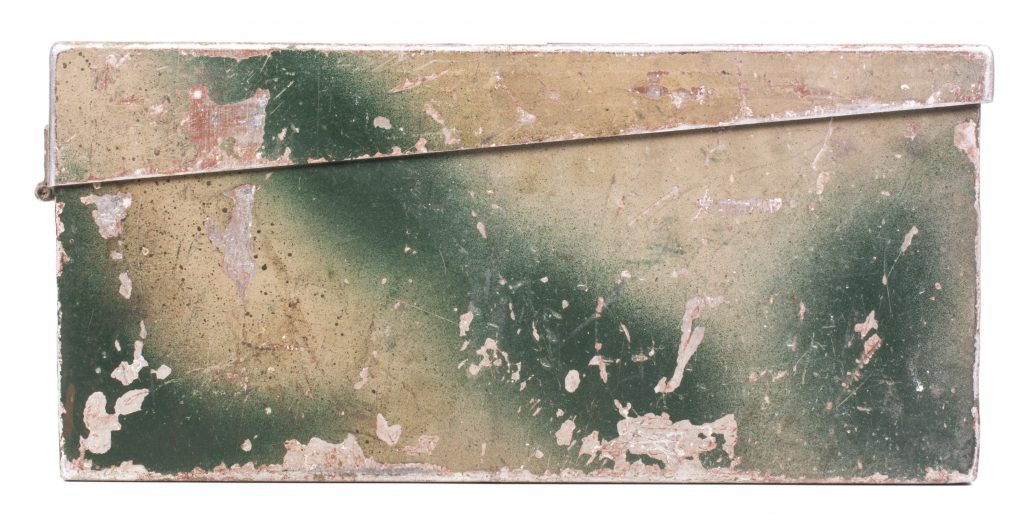
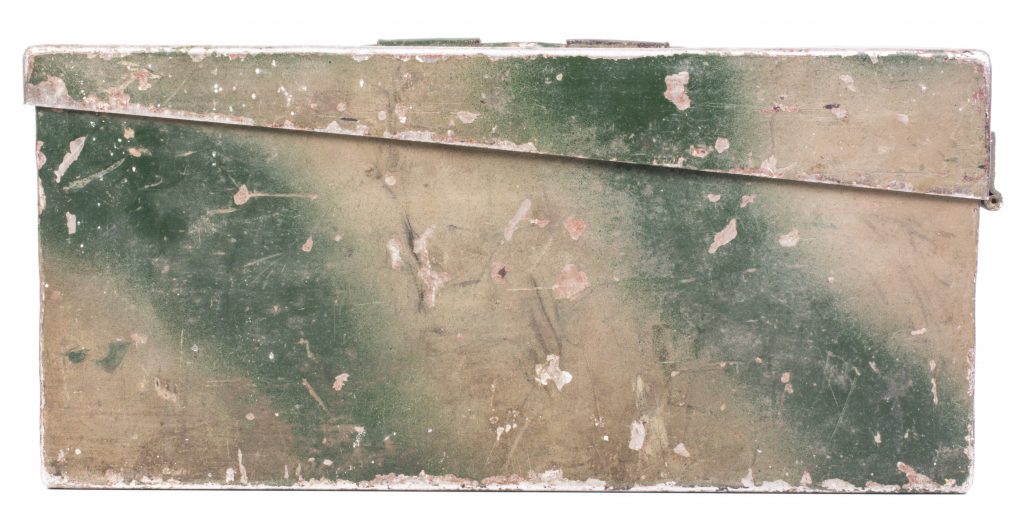

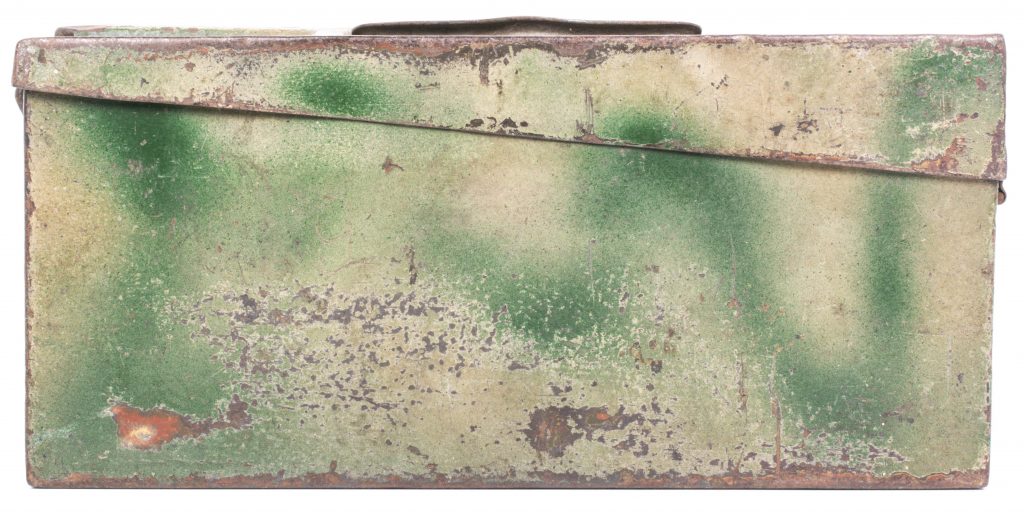

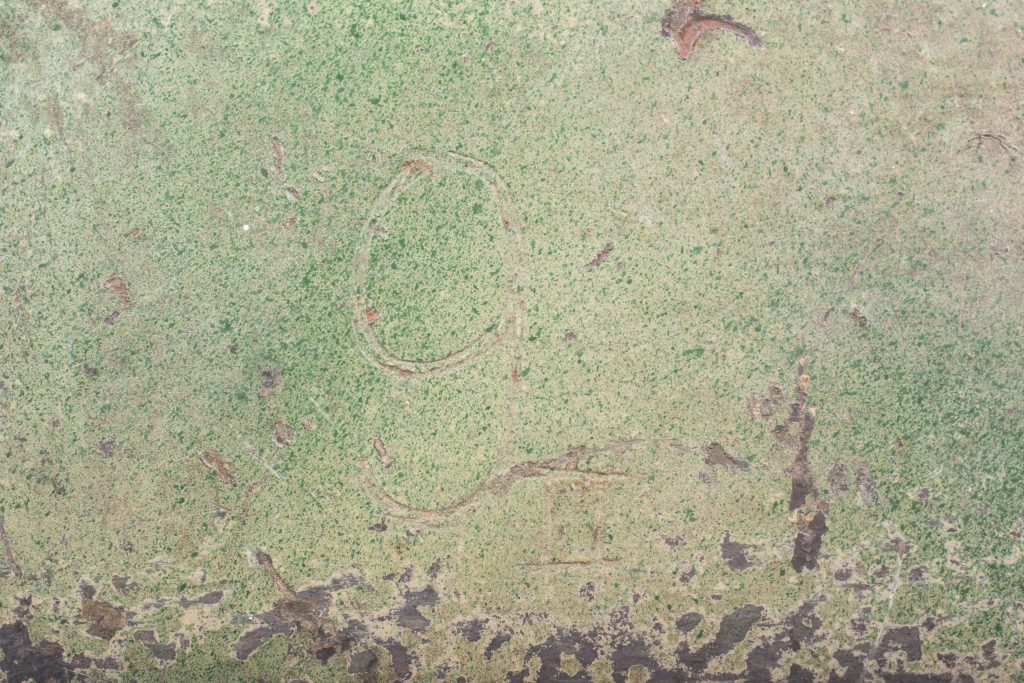
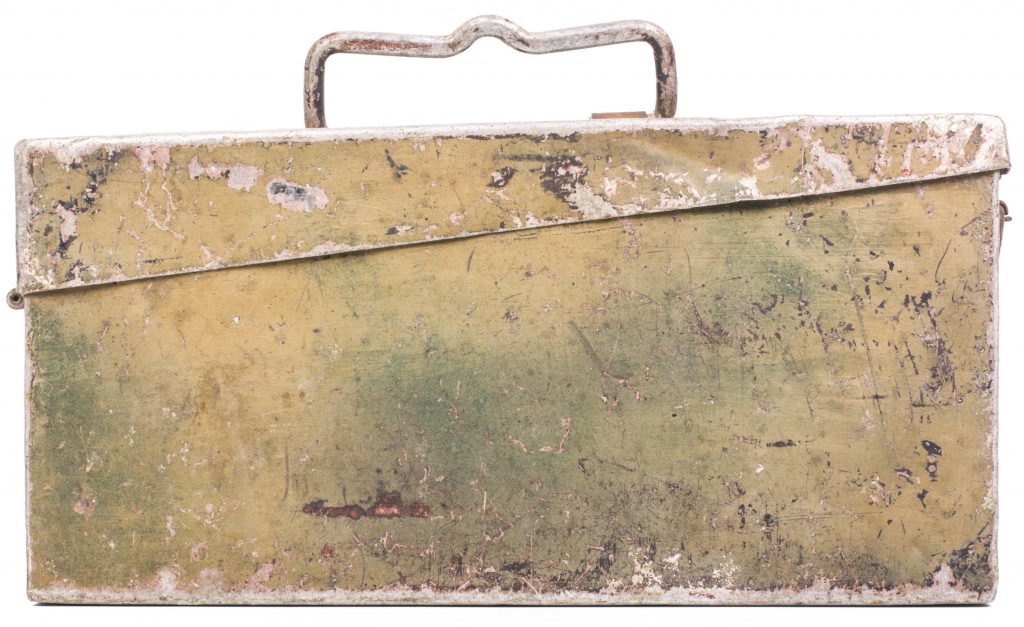
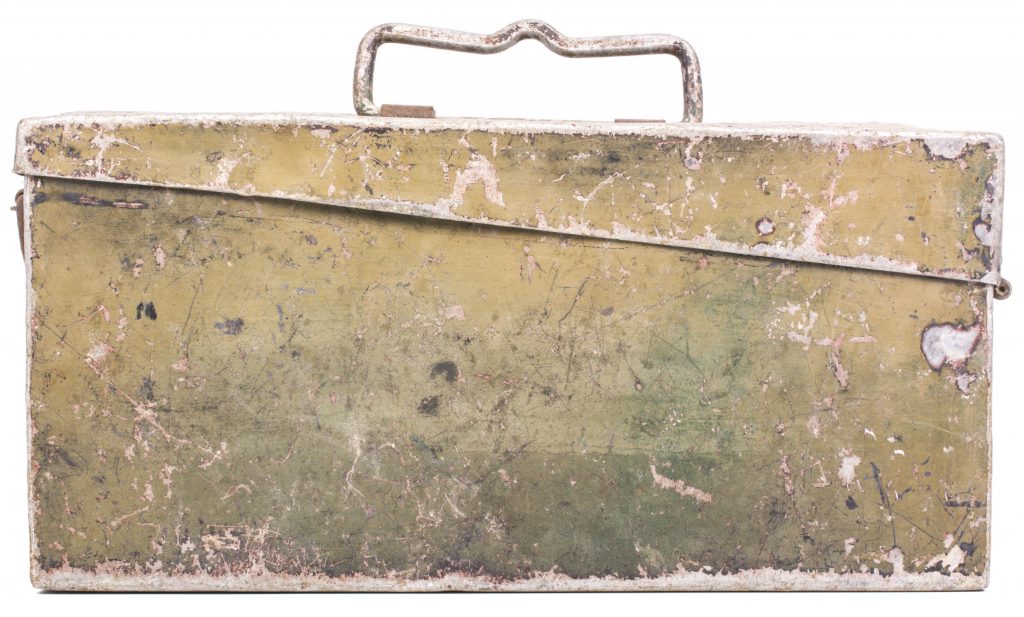

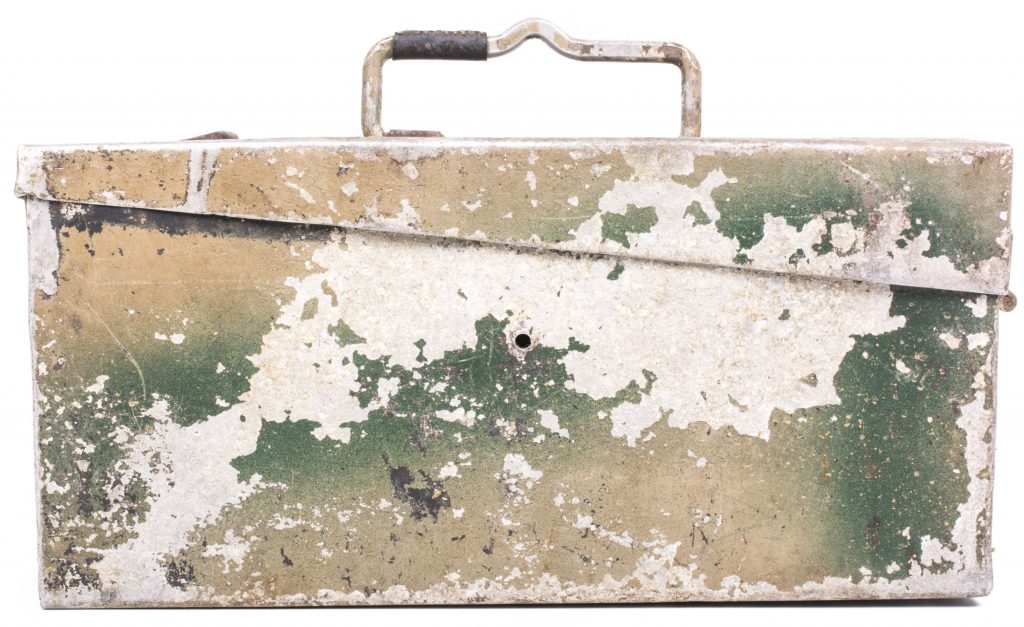
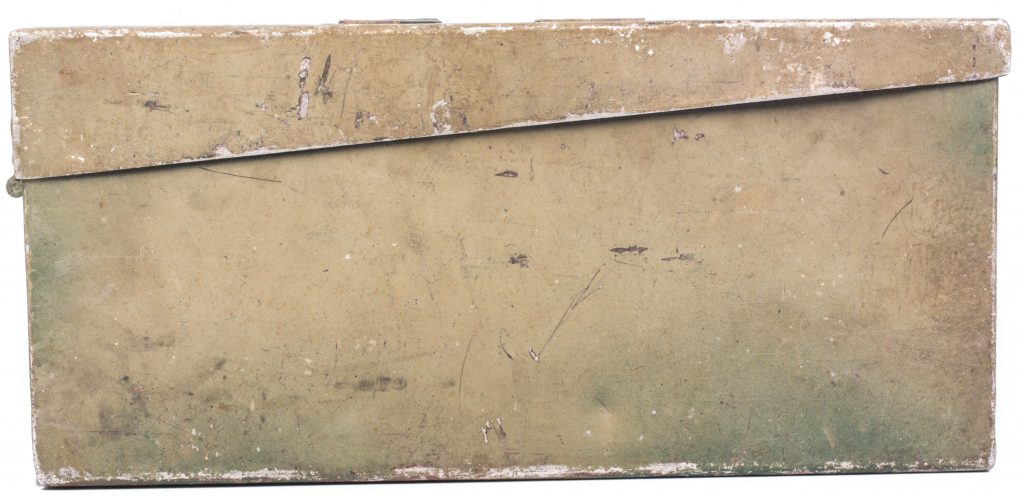


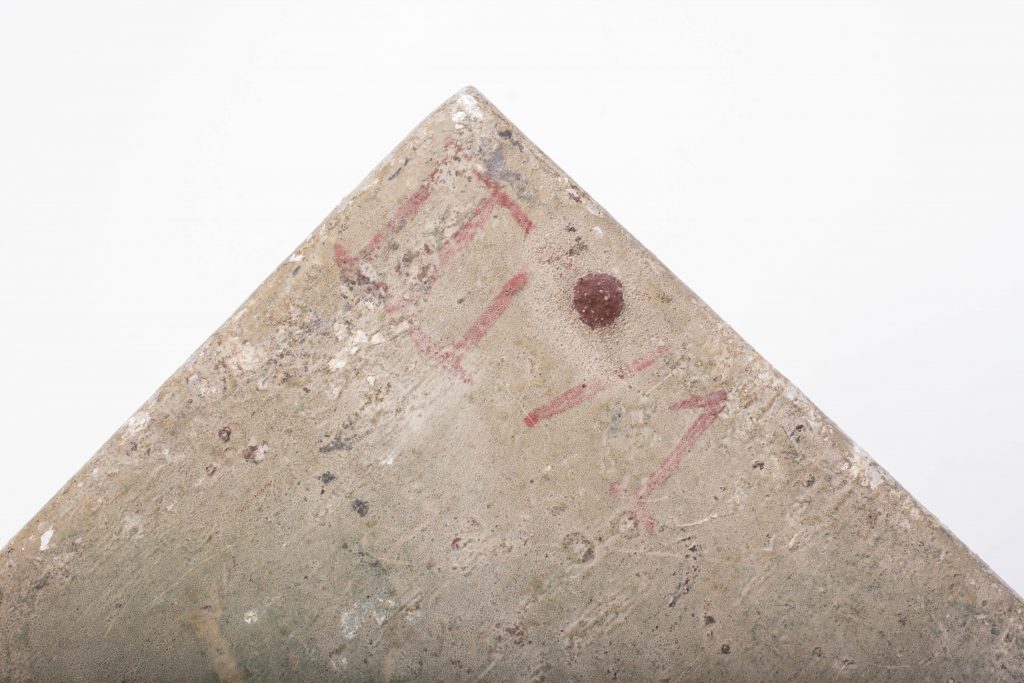
The last MG case is probably one of the most interesting; it bears red, hand painted tactical insignia used by FJR6 accompanied with a roman and numeral. Judging from the numbers I’ve seen on these cases ranging with codes which I presume are individual (heavy) MG’s.
The 4, 8 and 12 Kompanie in every Fallschirmjäger regiment served as a fire support section. This Kompanie contained 4 Zuge of which the 1 and 2 had 4 MG42’s on Lafette each.
The markings I have seen are;
III / 1
V / II
VIII / 2
This would suggest the roman numbering would mean the individual MG, and the second number would mean the Zug.
A second possibility; as Gruppen and either the first or second MG42 in each individual Gruppe. I have not seen a number higher then 8, so I presume this would be a lesser possibility.
Other camouflage patterns used by Fallschirmjäger
Other then the typical camouflage pattern used by FJR6 there are various other camouflage patterns which can be seen. Below is another few camouflaged paratrooper helmets which sometimes can be traced to certain Fallschirmjäger units but are different then FJR6. These are interesting to study, because with studying several other examples it makes it that much clearer how the FJR6 pattern distinguishes itself from other known paratrooper helmets.

Exceptional woodwork find camouflaged M38 paratrooper helmet from Musselkanaal, the Netherlands. This helmet and other items where worn by a Fallschirmjäger in the Netherlands. The items are all found together in a house in Musselkanaal. The story comes directly from the previous owner who owned the group for over 70 years is that a young Czech paratrooper in 1945 seeked refuge from the war with civilians after fierce battles. The civilians in Musselkanaal took him in and dressed him in a blue coverall with wooden shoes to hide him from the Germans and the NSB neighbour. They burnt his uniform but kept the helmet, mapcase, pocket book, holster and fighting knife. Because of the language barrier they called him “Loekie”. Loekie lived with the family for over a year in hiding and left just after the war. Loekie was most probably member of the 6th or 8th Fallschirmdivision. The helmet and group are exactly how they where found on the attic when the house was passed down from father to son.
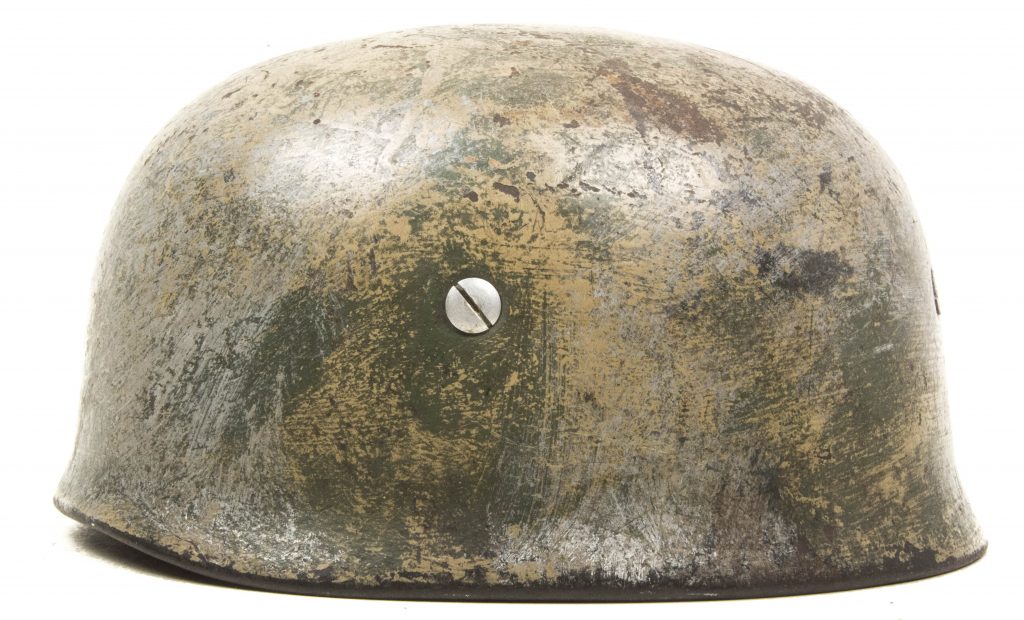

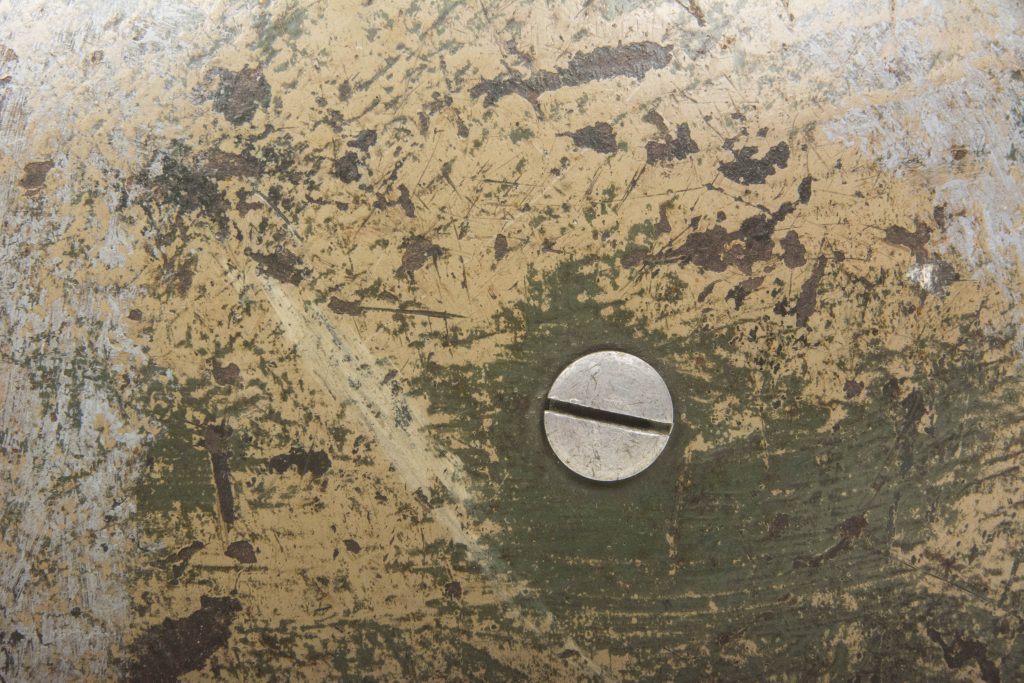
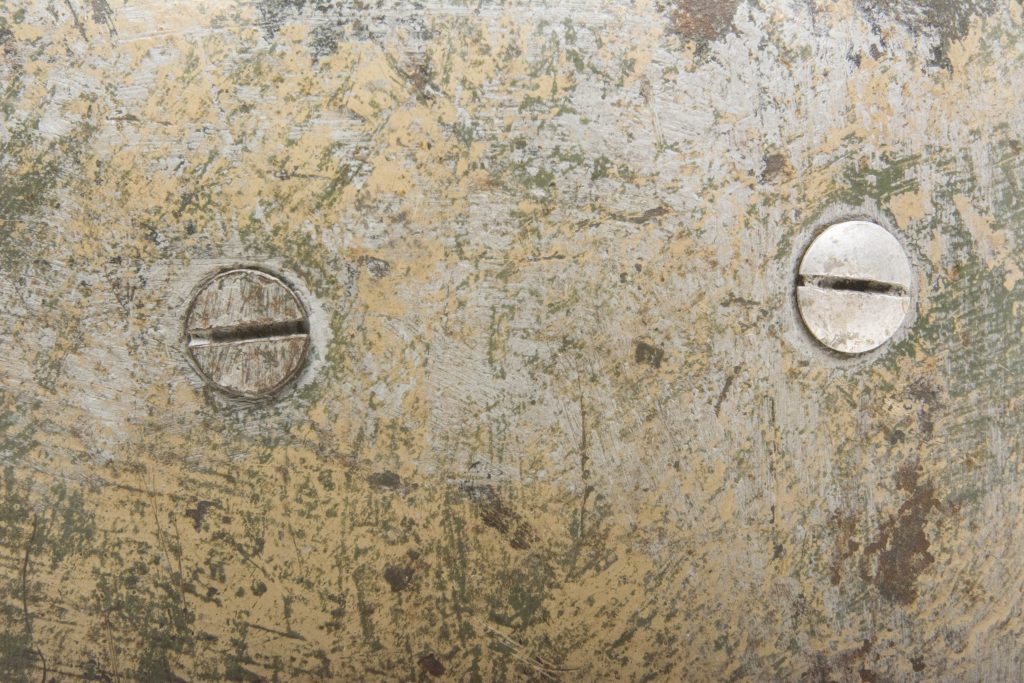
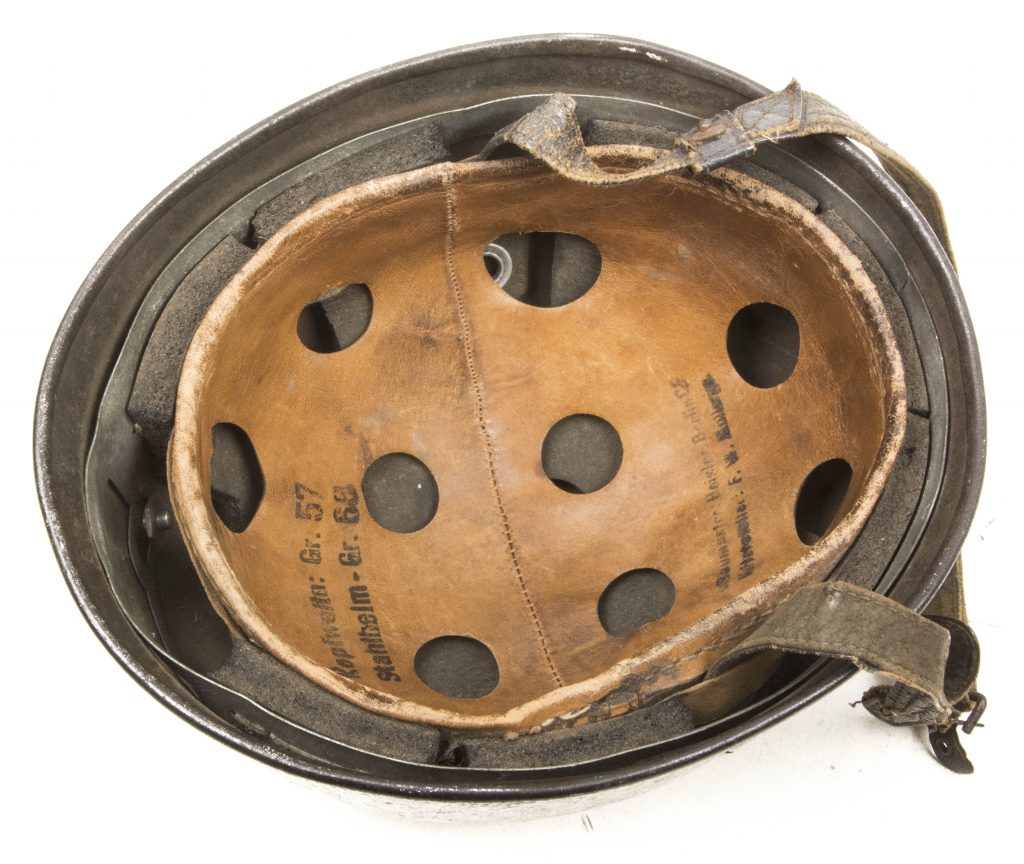
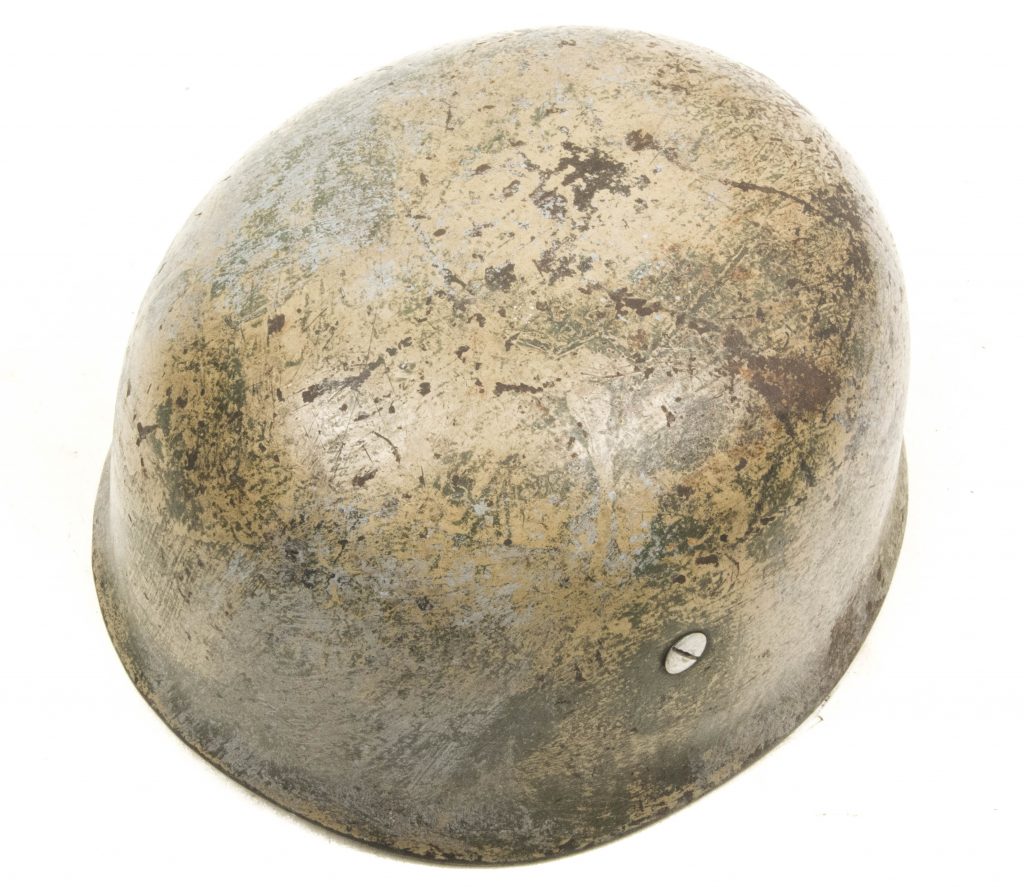
The helmet is marked CKL68 indicating production by Eisenhüttenwerke, Thale. The helmet retains its original liner and personalized chinstrap. The helmet is in good worn and untouched(!) condition with a nice and vibrant handpainted camouflage pattern. All 4 bolts are original to the helmet and are covered in paint. The aluminum bolts are The helmet retains its original named size 57 liner and its personalized chinstrap. The chinstrap was modified during the war. One of the rear bolts is a wartime replacement.
The mapcase is a standard Luftwaffe pattern brown mapcase with aluminum buckles. The boot knife or Luftwaffe Stiefelmesser is nicely marked “S”. The (empty) holster is a privately purchased holster for a small calibre pocket pistol. The pocketbook comes with a few notes that I’m unable to decypher but comes with a number of feldpost numbers of his personal contacts who served in the 12. Luftwaffe Felddivision.
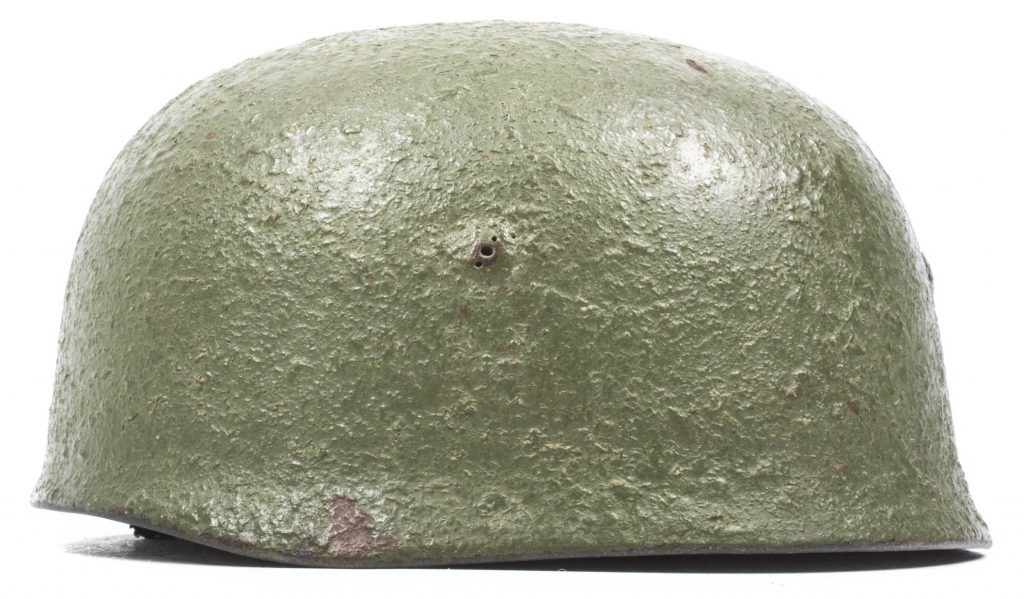
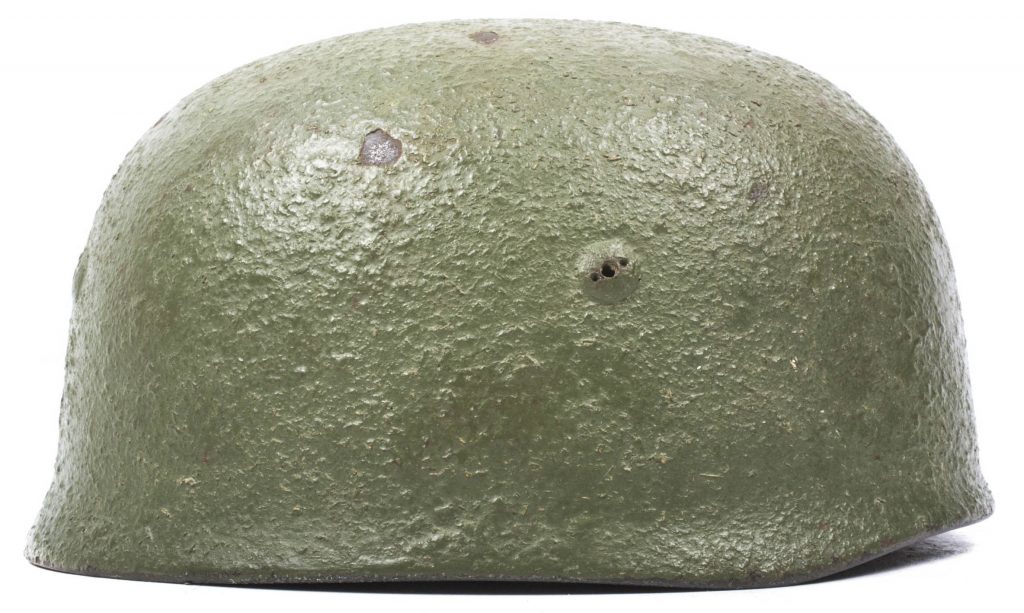
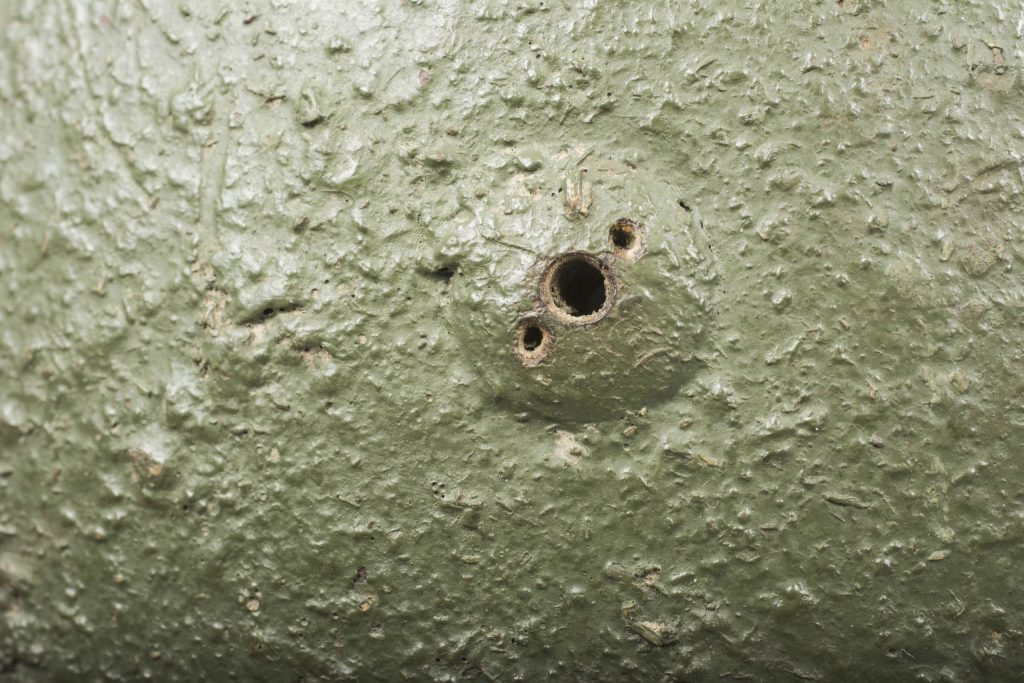

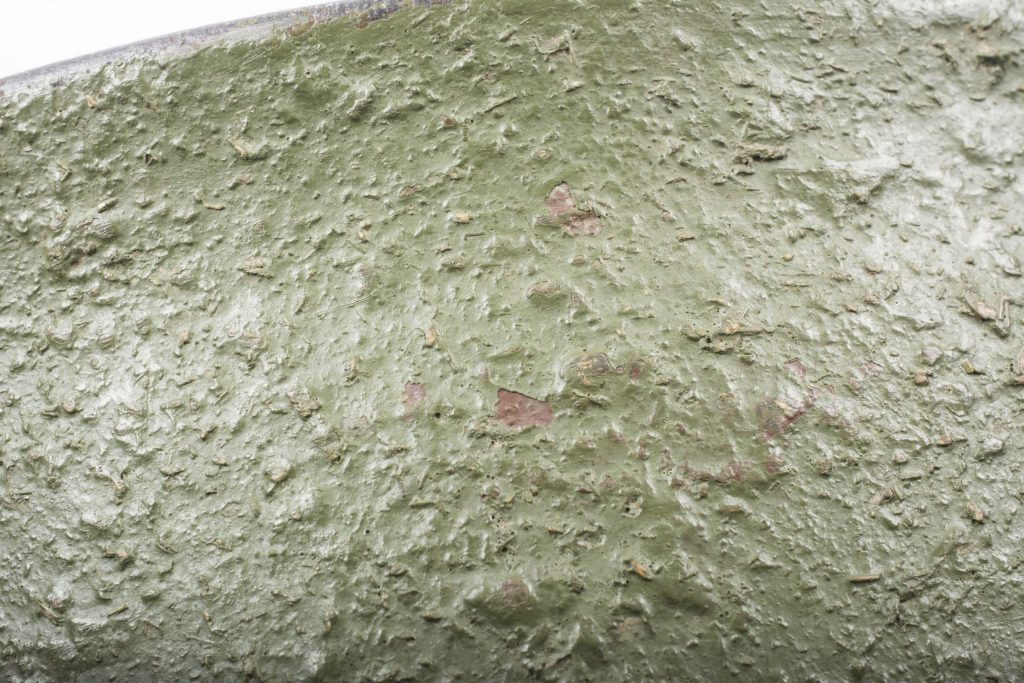
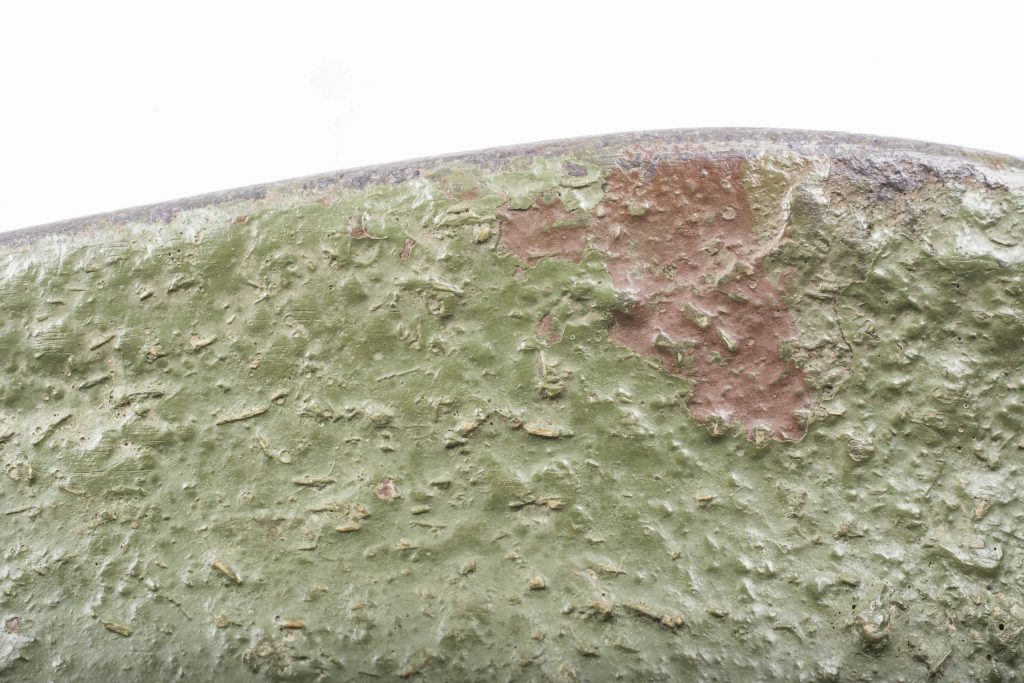
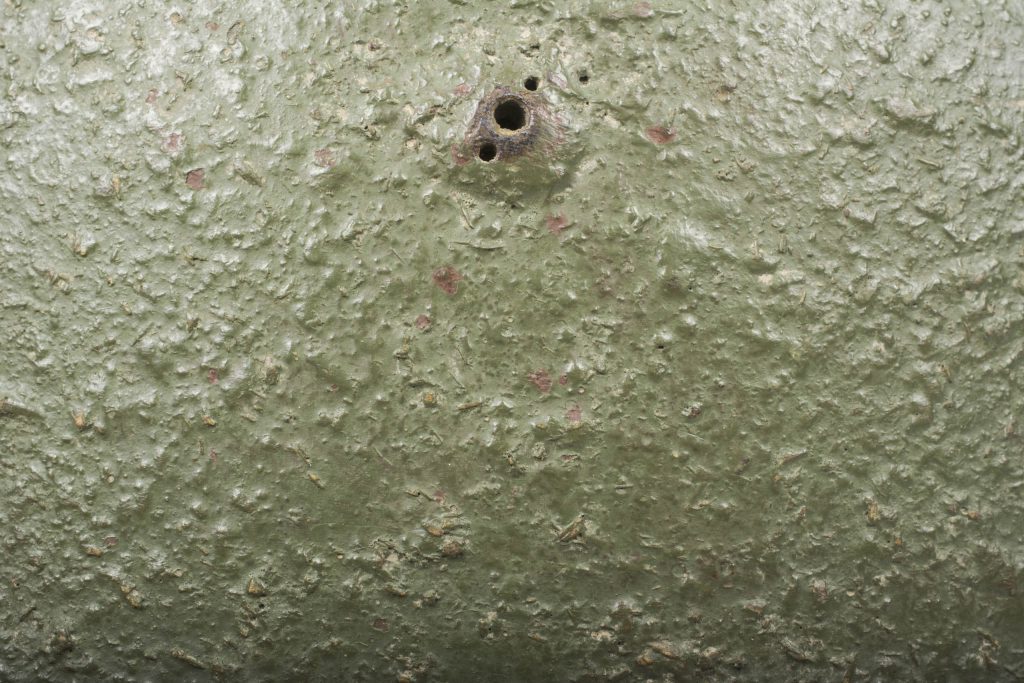
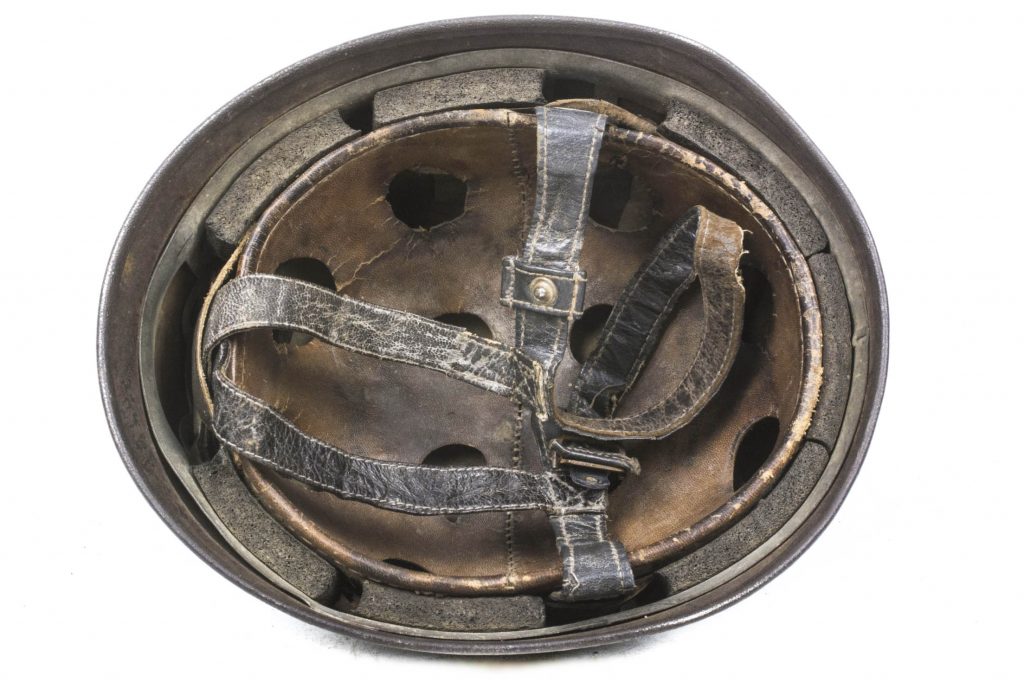
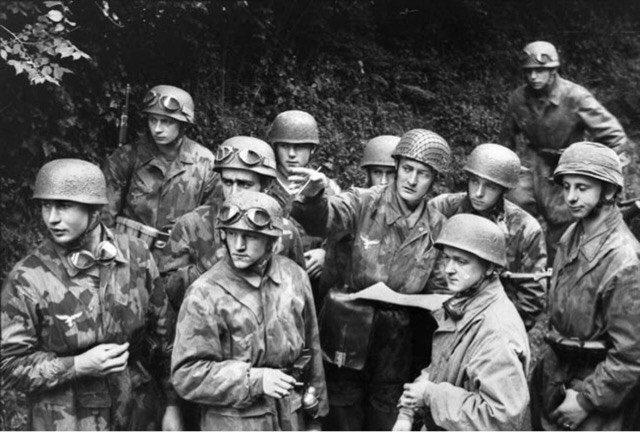
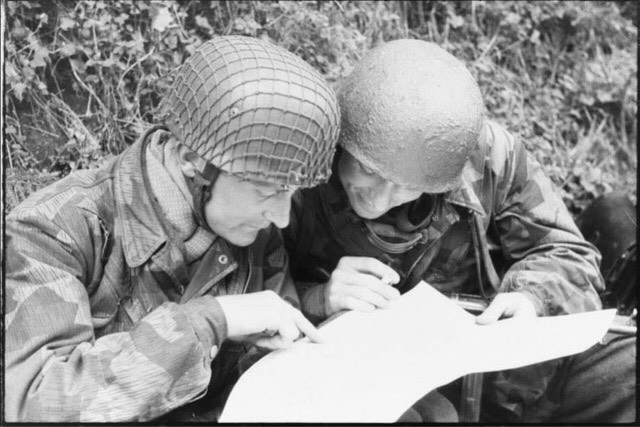
The helmet is a mid to late war CKL68 shell with factory installed liner and chinstraps. The helmet retains up to 95% of its wartime applied sawdust camouflage paint. The helmet is a typical camouflaged example as worn by members of the 3. Fallschirmjäger Division. This example has only a little brown mixed into the paint whereas most of the helmets from this unit have a 50/50 green and brown mix.
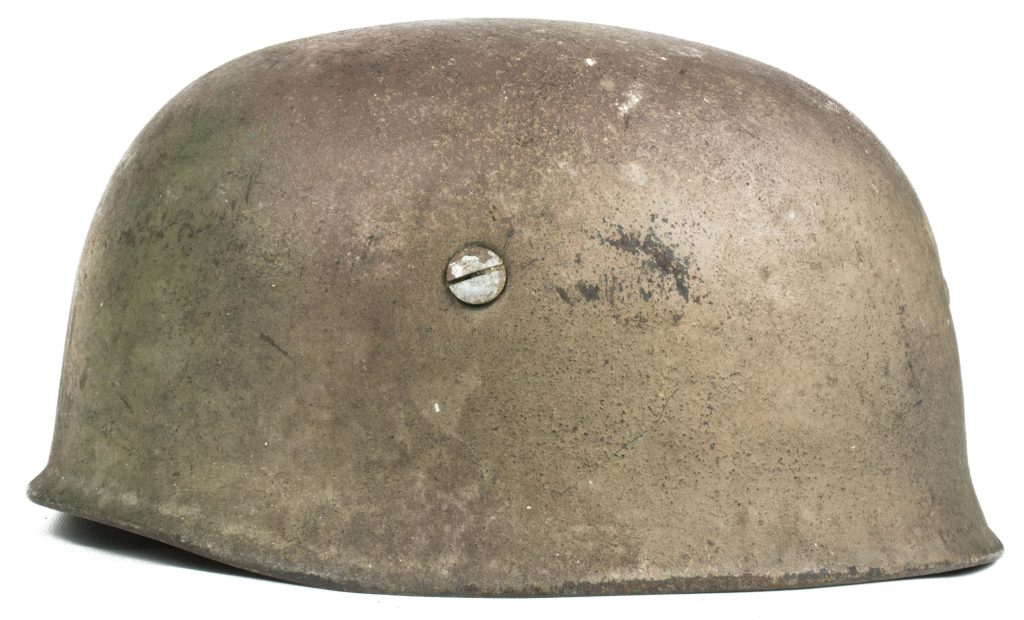


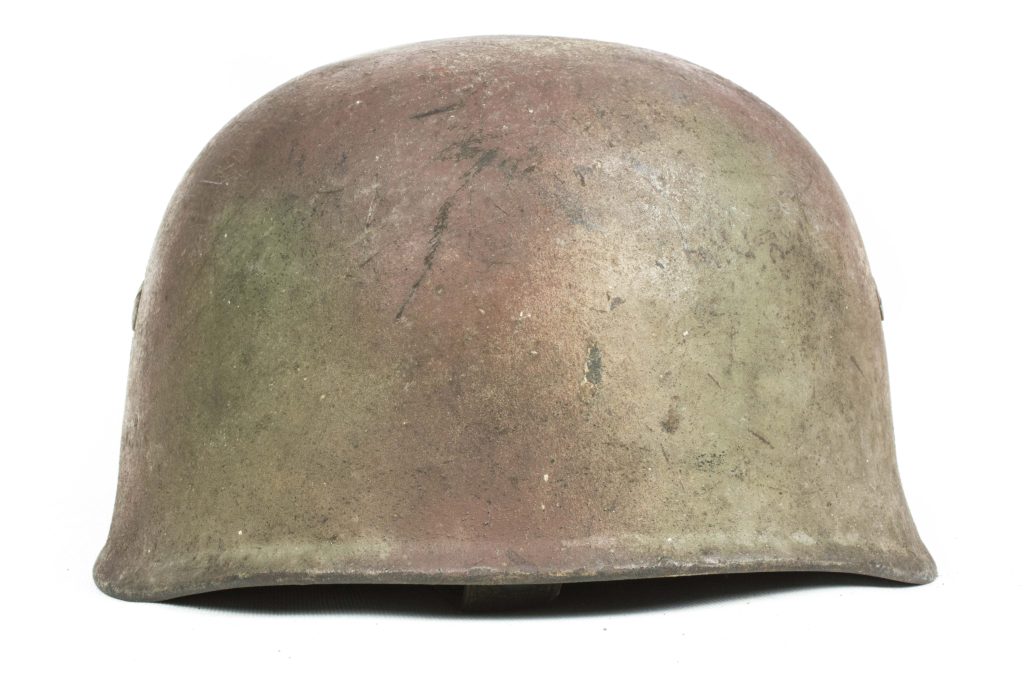
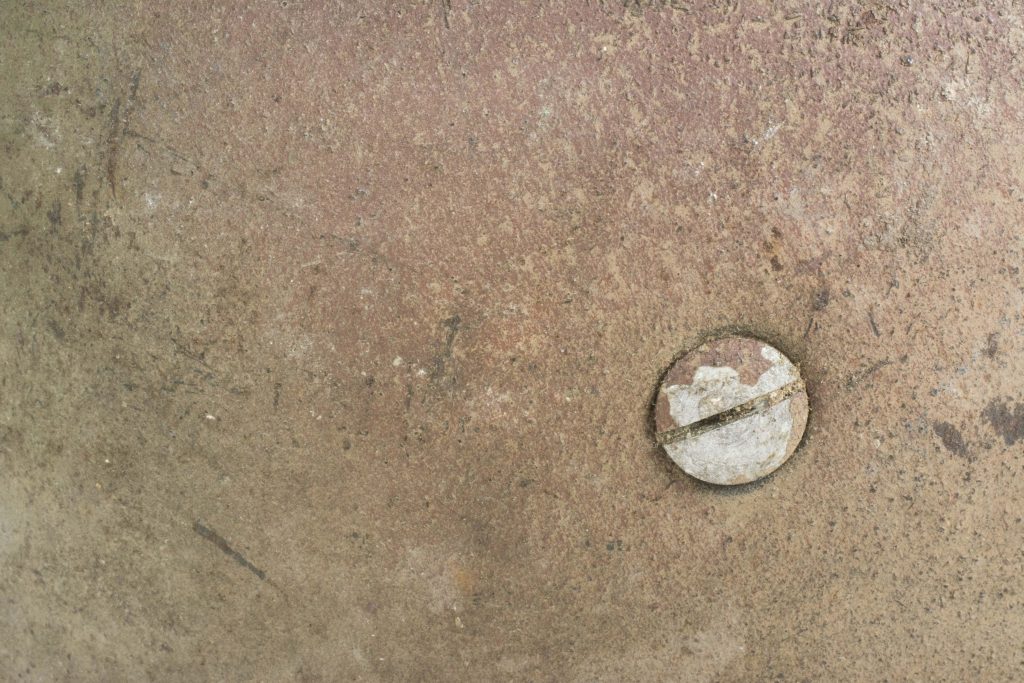

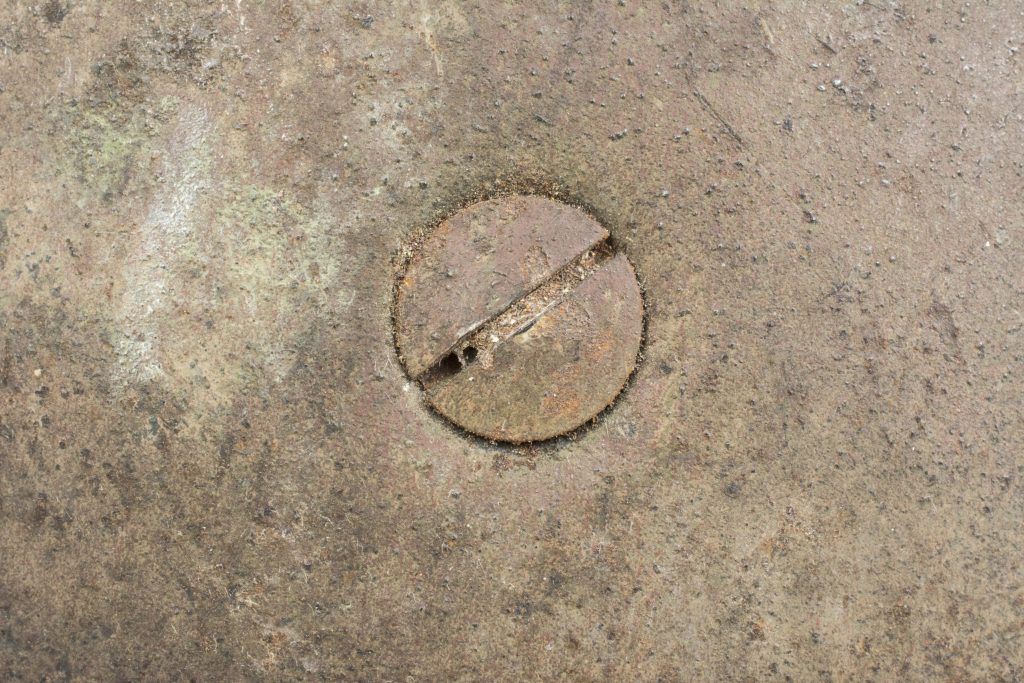


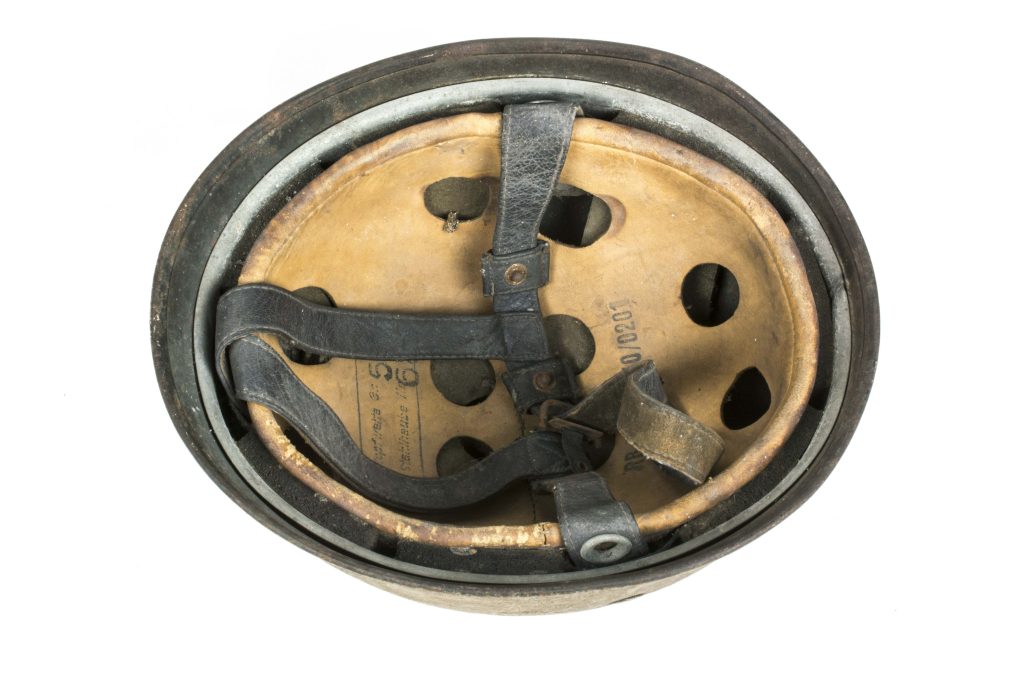
This above helmet was found in the area around Paris together with a Luftwaffe camouflage helmet probably belonging to a Felddivision. The helmet is a textbook late war example with two aluminum and two steel bolts and it looks to have no decal. The helmet is finished in a three-tone camouflage pattern which in my opinion, is very hard to find on a M38 helmet.
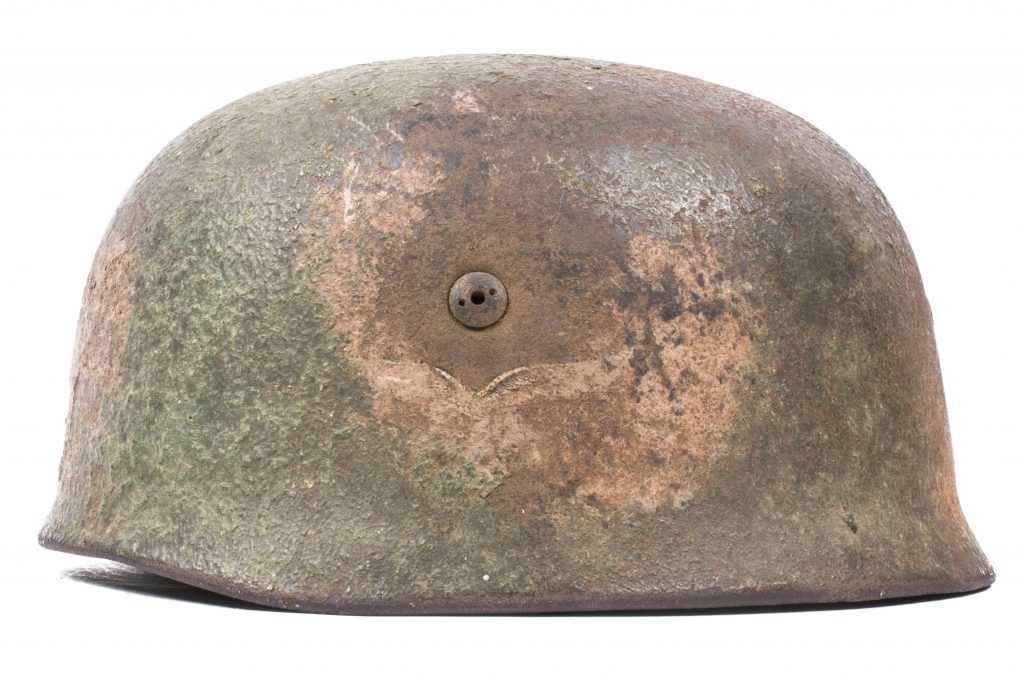

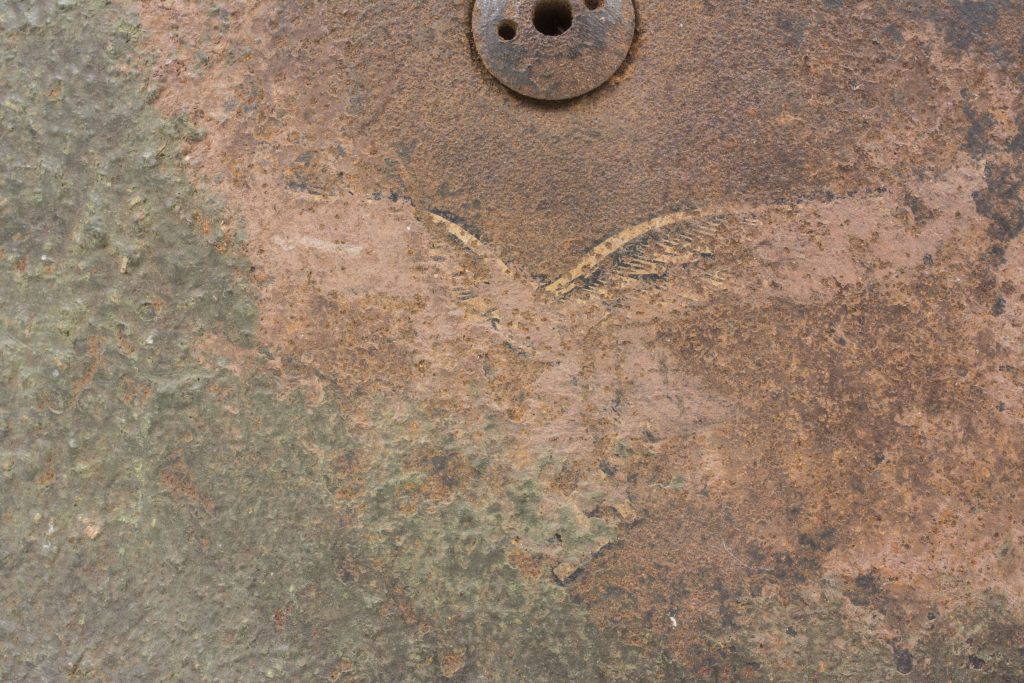

A beautiful camouflaged paratrooper helmet that was discovered just last year, south of the Netherlands in the village of Ospel. On the 27th of October 1944 the first battalion of Fallschirmjäger Lehr Regiment 21 under the command of Hauptmann Fischer attacked the small village of Ospel. During the taking of the village one helmet remained in the neighborhood of a farm where it remained until 2019. This helmet was worn into combat by a member of Fallschirmjäger Lehr Regiment 21 which was part of Kampfgruppe Hermann.
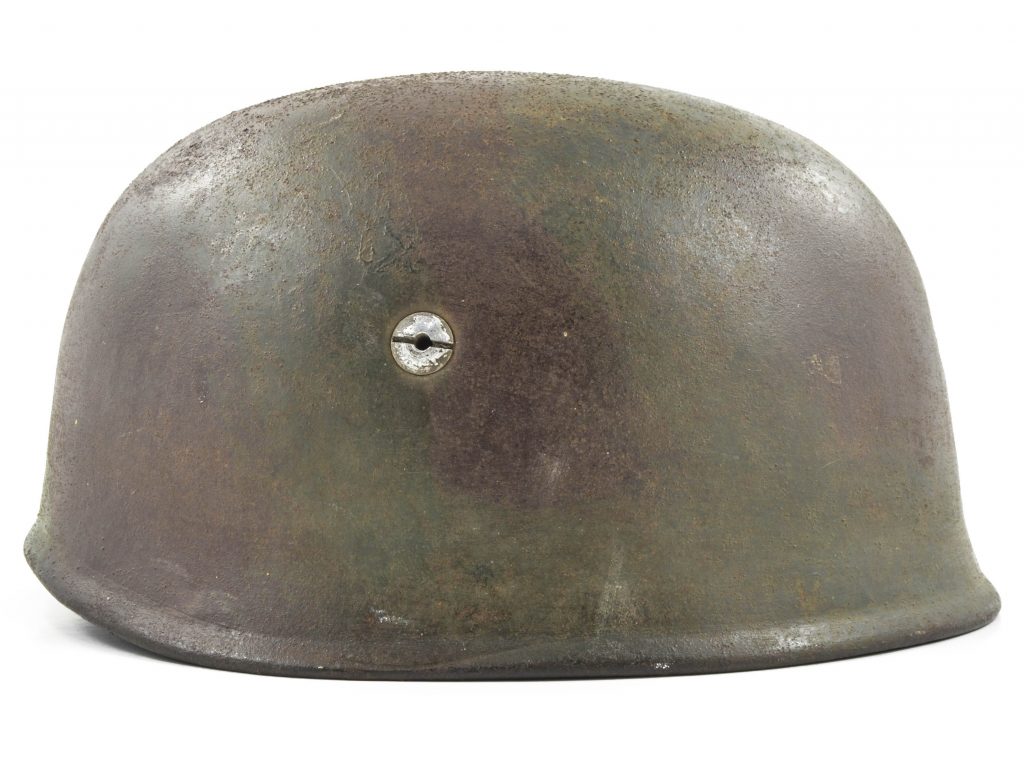
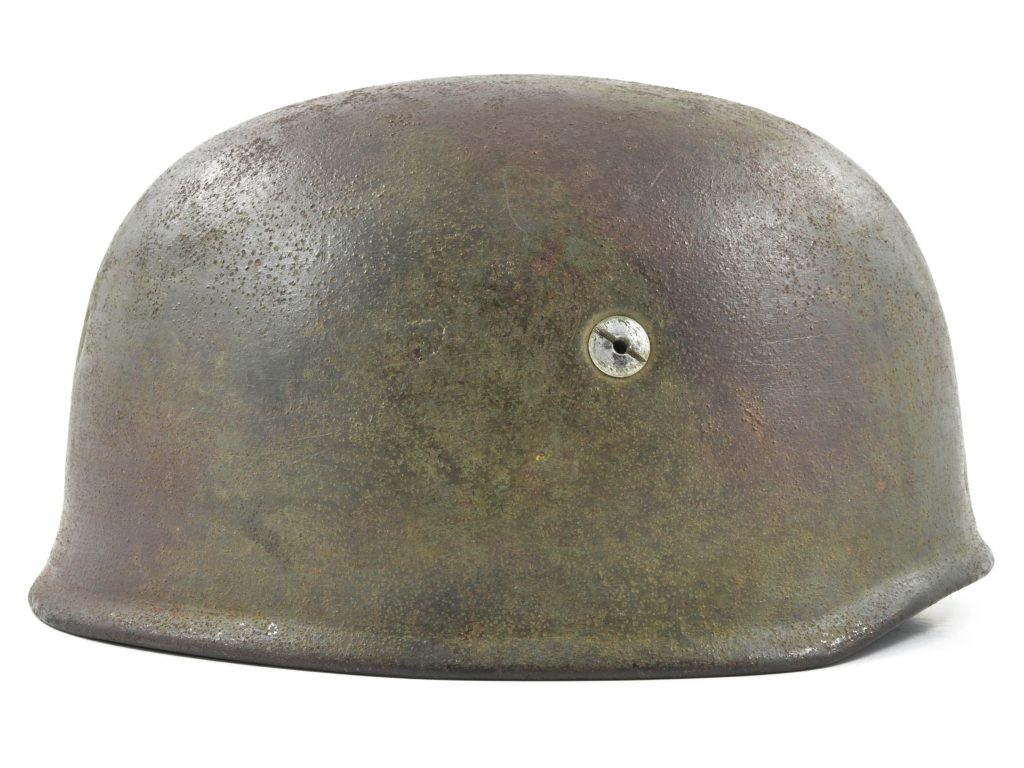
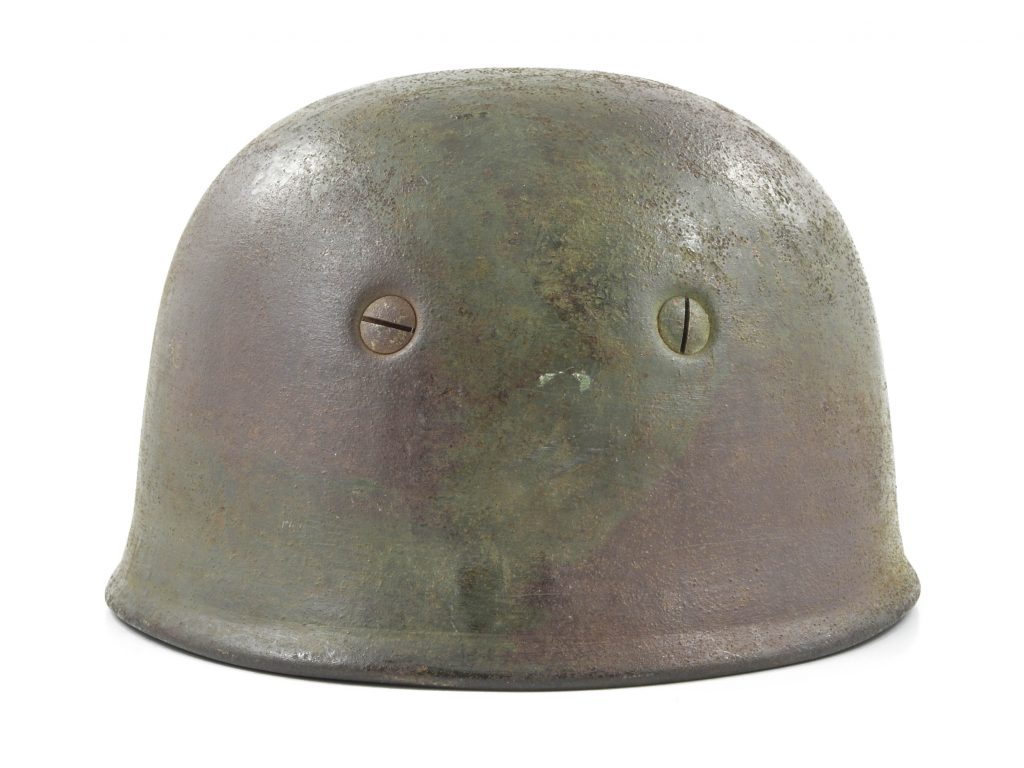
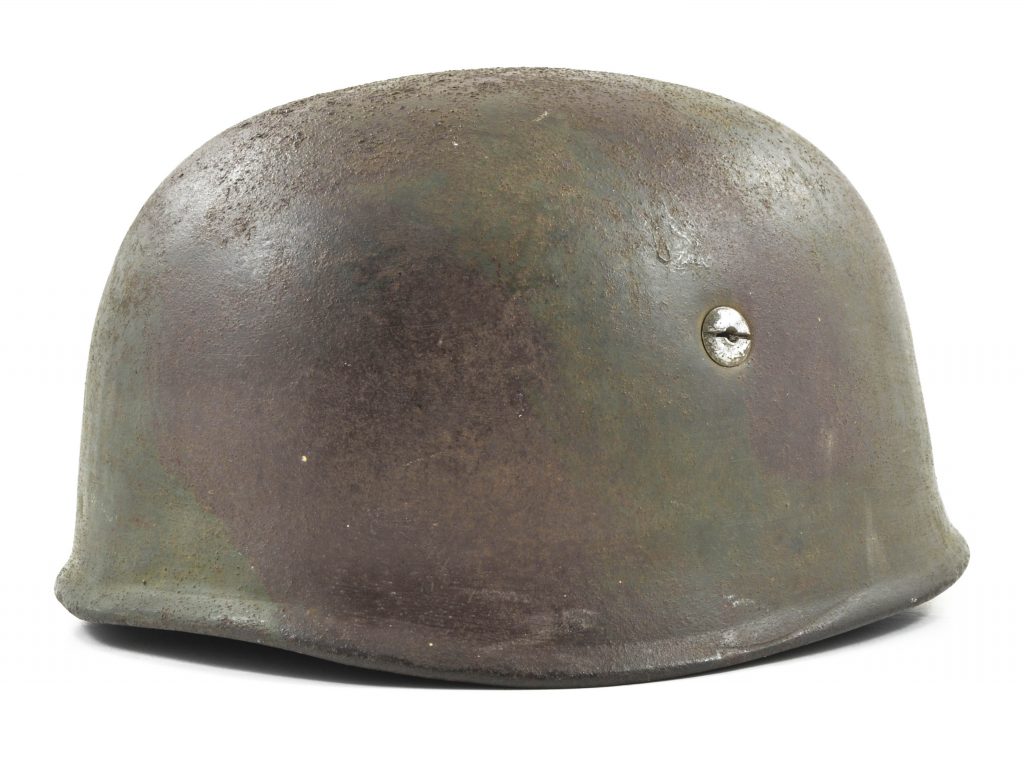
This example is a typical late war camouflage pattern with brown and green. The base helmet is a late war ‘flared rim’ example which is the indicator for the timeframe of the camouflage pattern. There is not a certain unit to be identified by this camouflage pattern as the liner is only named Obergefreiter Lange without a unit identification. Even with the rank and abbreviation of Fallschirmjäger it would be very hard to precisely identify the original owner and its unit.
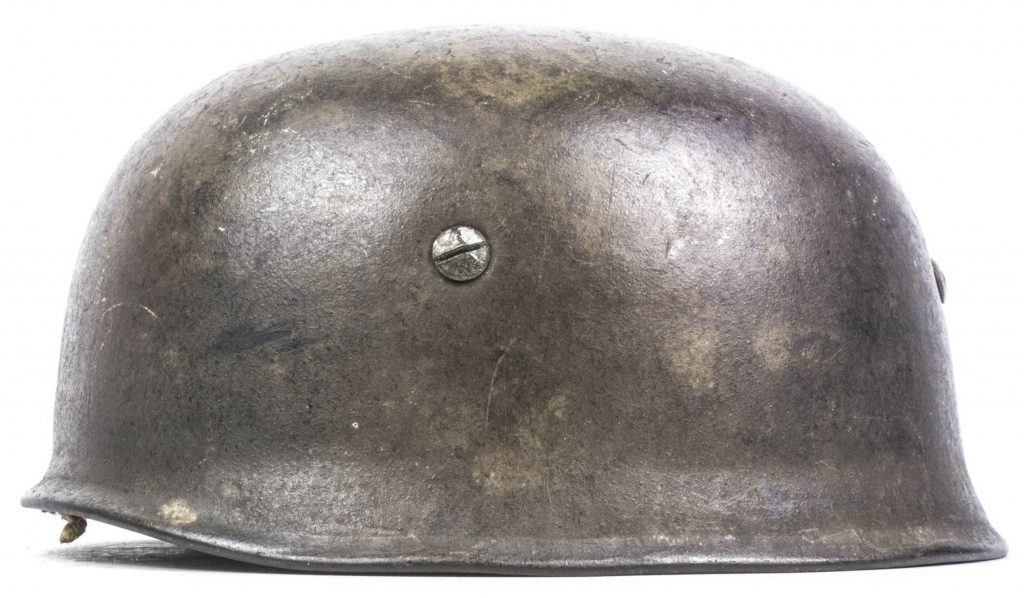
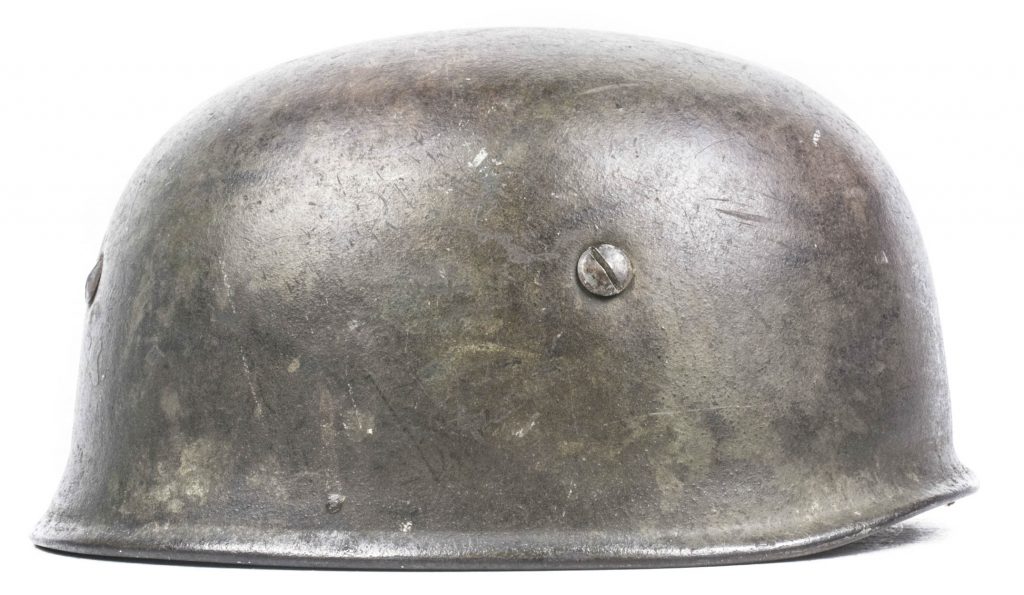

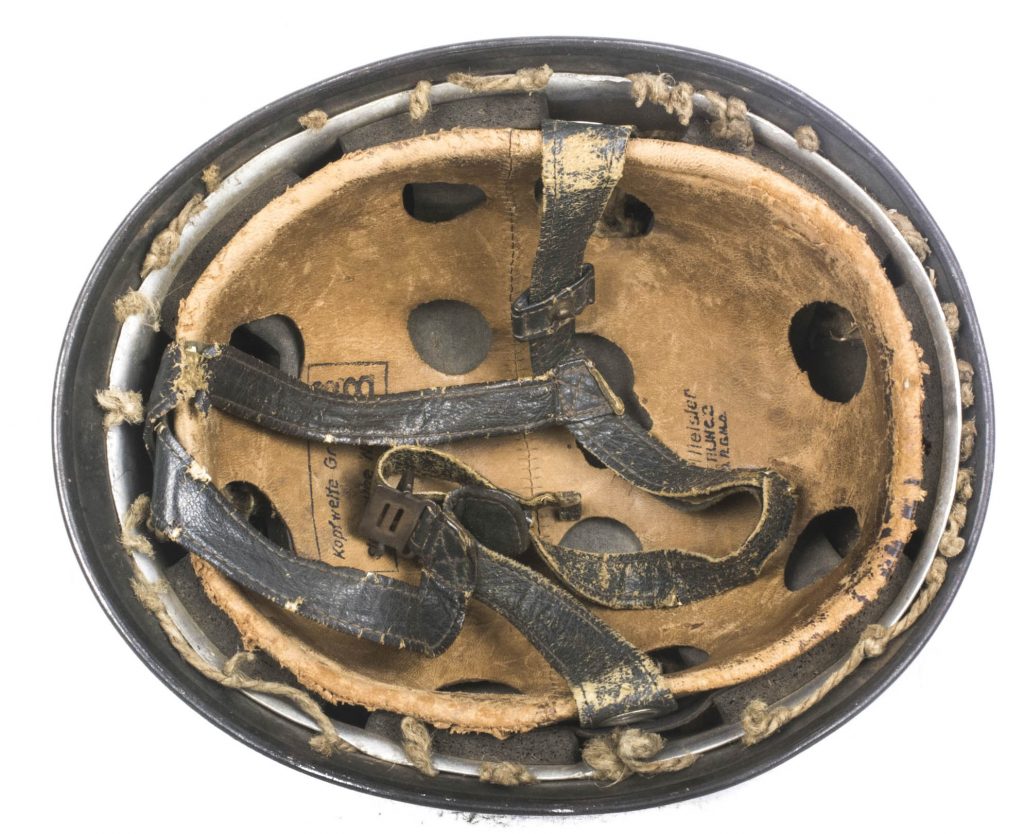

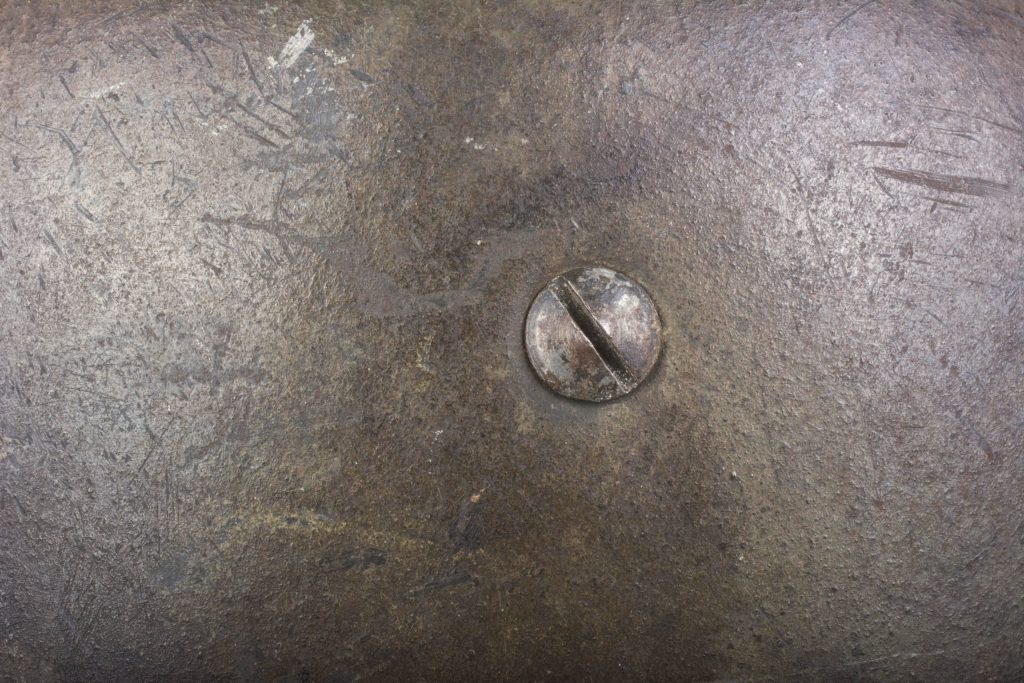
Another fantastic late war M38 ‘Flared Rim’ Fallschirmjäger helmet in three-tone camouflage. The helmet is a textbook late war example with flared rim shell and slotted bolts in the shell size 68. The helmet retains its wartime applied three-tone camouflage paint finish which was painted on top of a helmet net that was tucked between the liner and the shell.
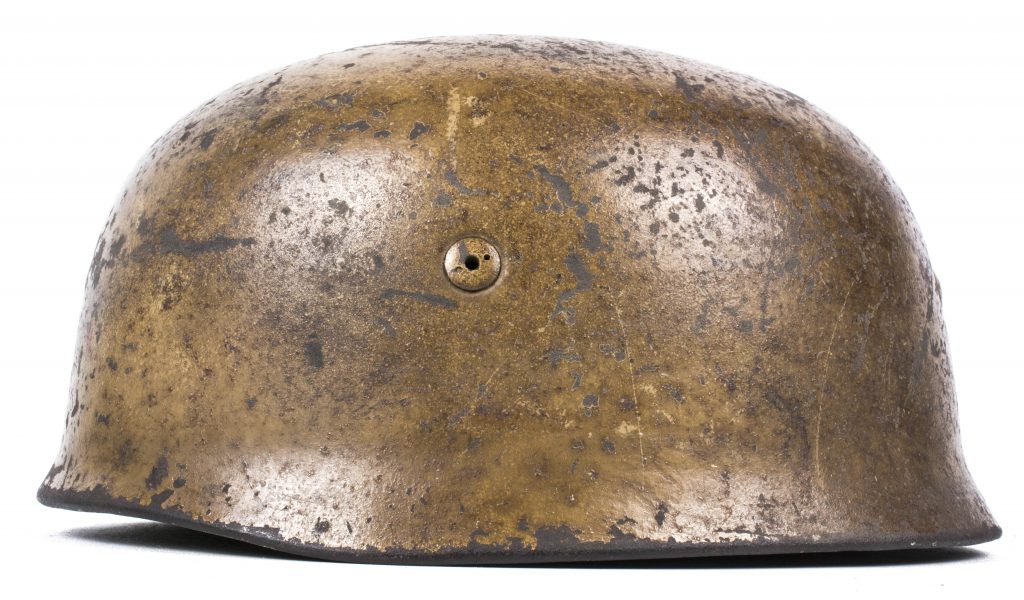
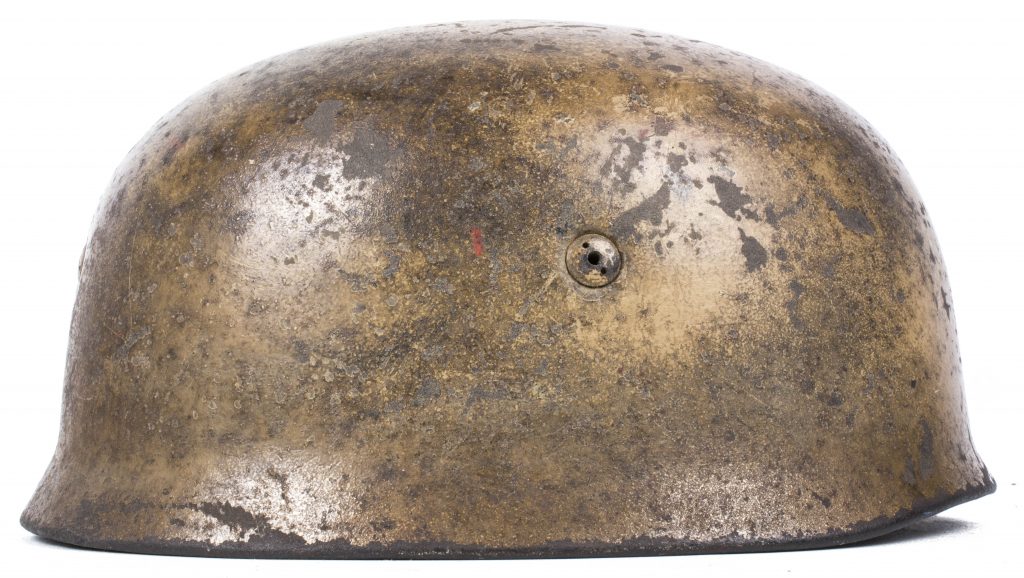

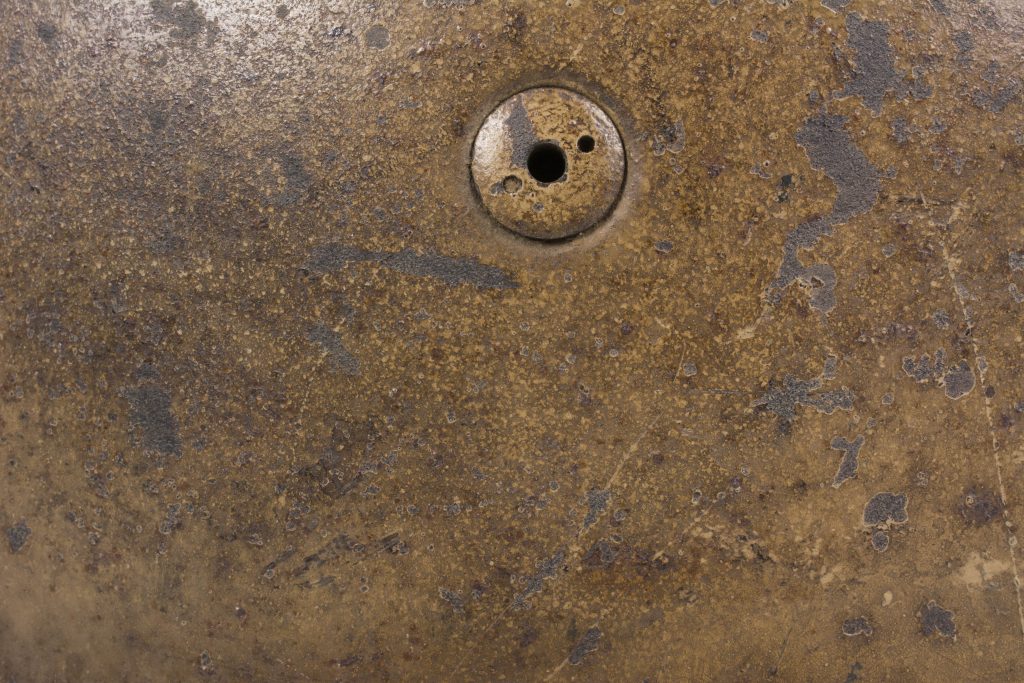

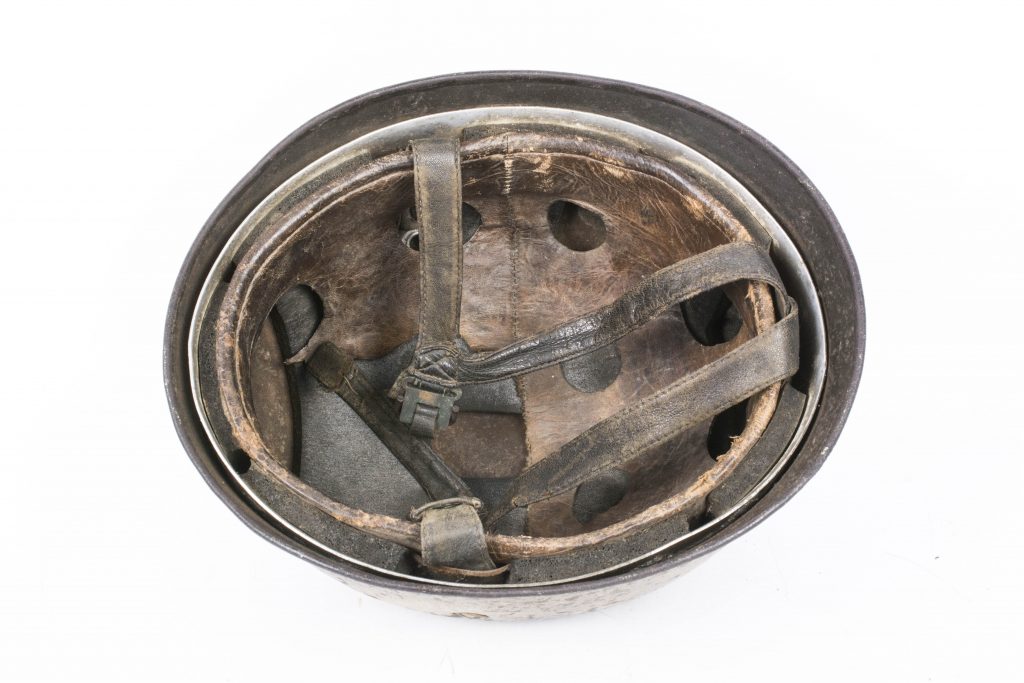
A textbook tan painted M38 Fallschirmjäger helmet. Although this is not a typical ‘Normandy’ pattern, it seems that certain units that served in Italy or Africa before never received another paint finish for their helmets. There are many photographs of these tan camouflaged helmets being worn in Normandy by units other then FJR6.



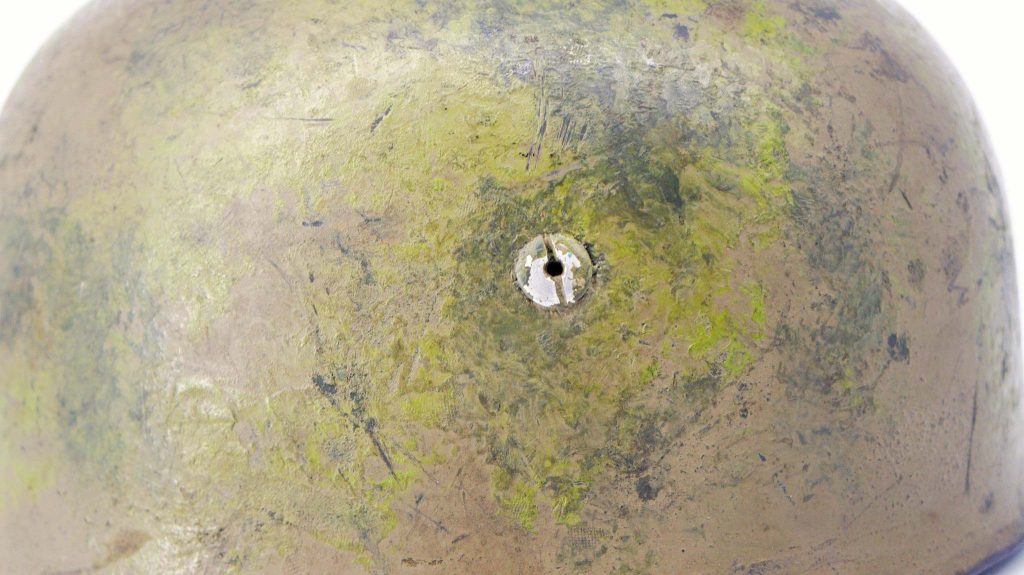
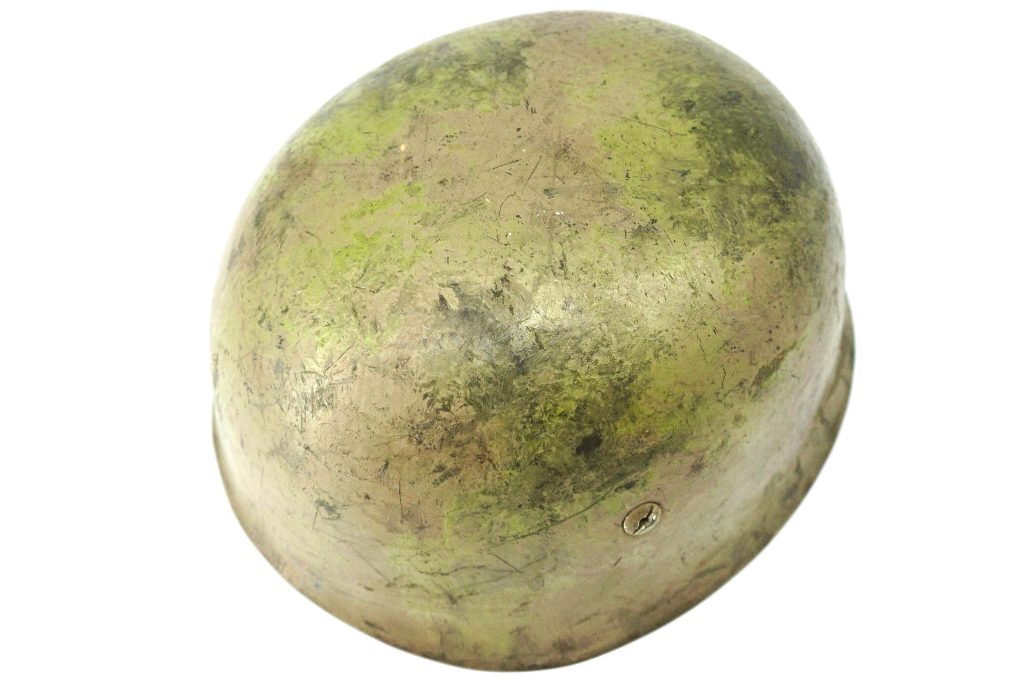
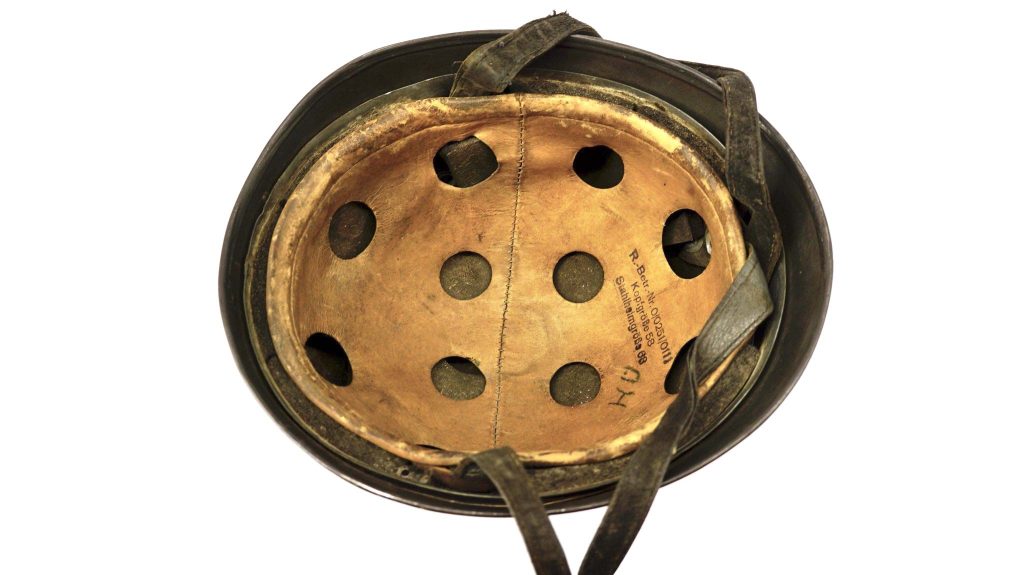
The soldier who liberated this helmet is Harry L. Kuhlmeyer Jr., PFC with D Company, 87th Mountain Infantry Regiment, 10th Mountain Division. His serial number is 39559618. He registered for the Draft on in 1942 in LA County and took his oath of enlistment on 2-11-43. Harry was born in Ohio in 1923, had 1 year of college education and was single when he joined the Army (and remained so all his life). He was working as a stock clerk when he was called up. It appears Harry was one of the “3 letter” men who joined the 10th in 1943, as he went directly to Camp Hale for his training. He was assigned to HQ Company 1st Battalion, 87th Mountain Infantry, then to A Company, and ended the War as a rifleman in D Company. In mid 1943 he was sent to Ft Ord, California for amphibious assault training and was involved in the invasion of the Japanese held island of Kiska later that year (still with 2-HQ-87). In early 1944 he returned to the US and Camp Carson, CO, then returned to Camp Hale for more training. In mid 1944 he was sent to Camp Swift TX, then to Ft Patrick Henry where he was sent to Italy for combat in 1945. Harry received the Bronze Star medal for his actions in Italy with D Company, and was returned to the US in August of 1945, where he was discharged. The story I got from his niece is that “Harry got the helmet from a stack of German stuff his unit was guarding after the end of the War. They were in Italy close to the Yugoslav border, and the 10th was send into the area to guard the German paratroopers from Tito’s partisans who were crossing the border & attacking Germans who were returning to their home. Supposedly Harry picked this helmet because he could hide it in his pack. He also took an officer’s dagger, but that was taken away when he got on the ship to come back to the US. He really wanted German mountain troop stuff, but all he could get was this paratrooper helmet. The unit was supposedly the 1st regiment of Hitler’s 4th Paratroop division (I take that as 10 Rgt, 4 FJ Div)” It was found in the attic of his family home in L.A. along with his uniforms and war souvenirs.
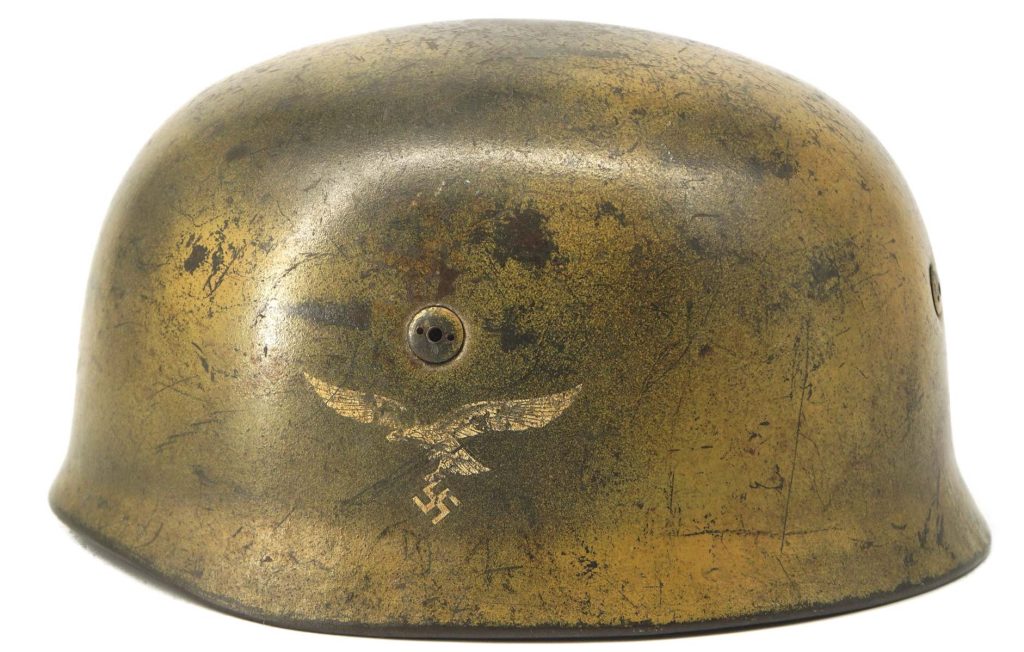
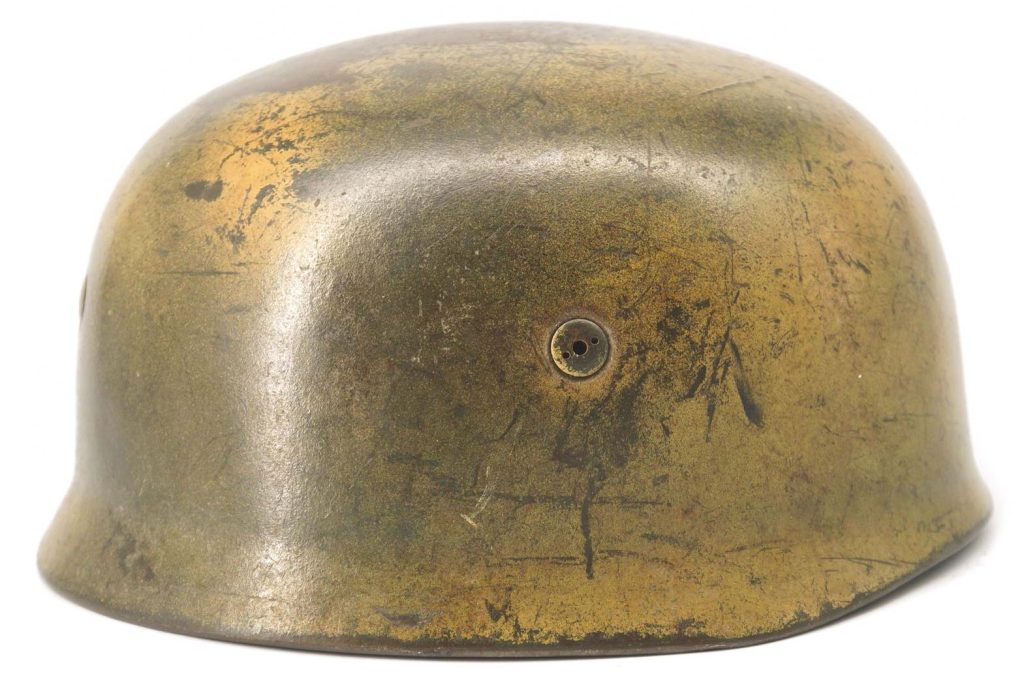

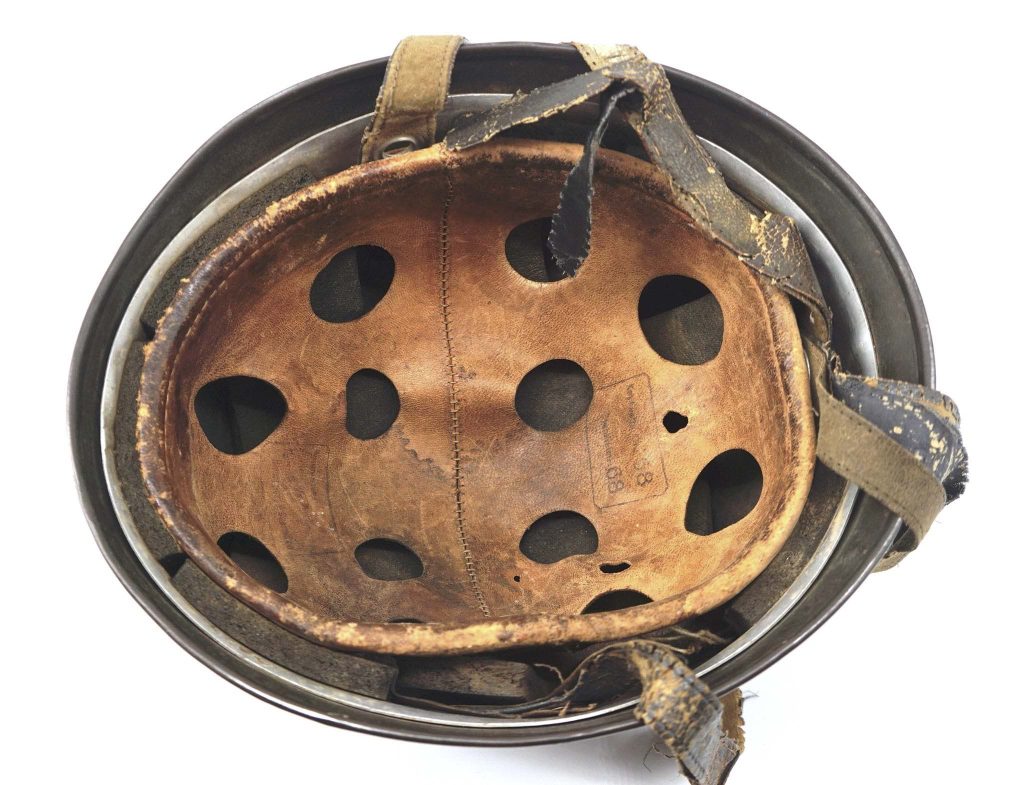
The above helmet was acquired through the son of a South African veteran who served in North Africa with the British 8th Army. The helmet was picked up after the battle of El Alamein which saw heavy action for the Fallschirmjäger-Brigade Ramcke who wore these tan helmets. The helmet is a single decal M38 helmet which has been oversprayed with a tan colour creating a nice cloudy tan pattern.
I want to take the time to thank everyone who cooperated for this article. Museums that opened doors, collectors that shared their items and several non collectors who still own some of these helmets. I want to thank everyone for the endless possibilities in assisting me with writing this article.
Frederik



